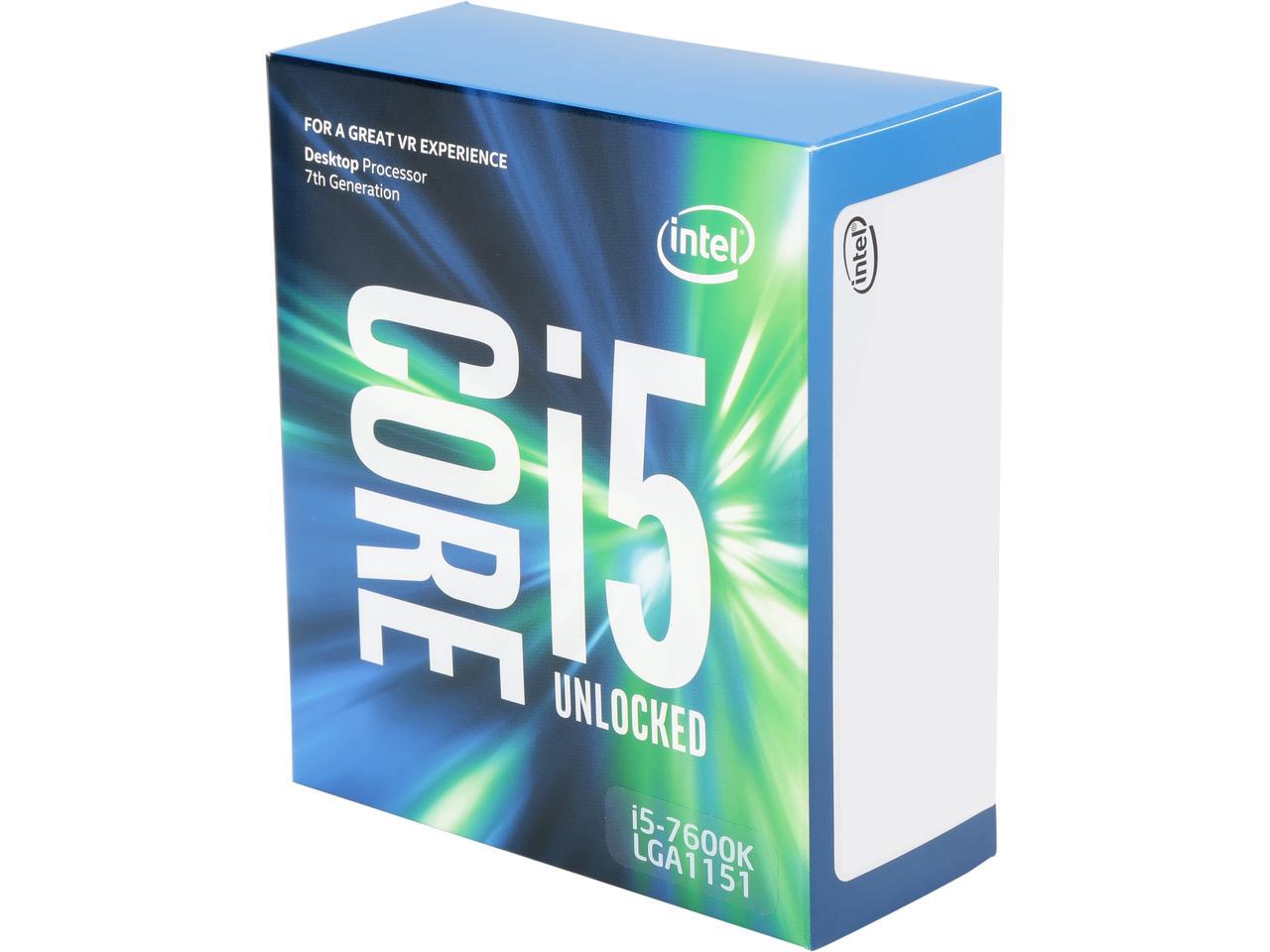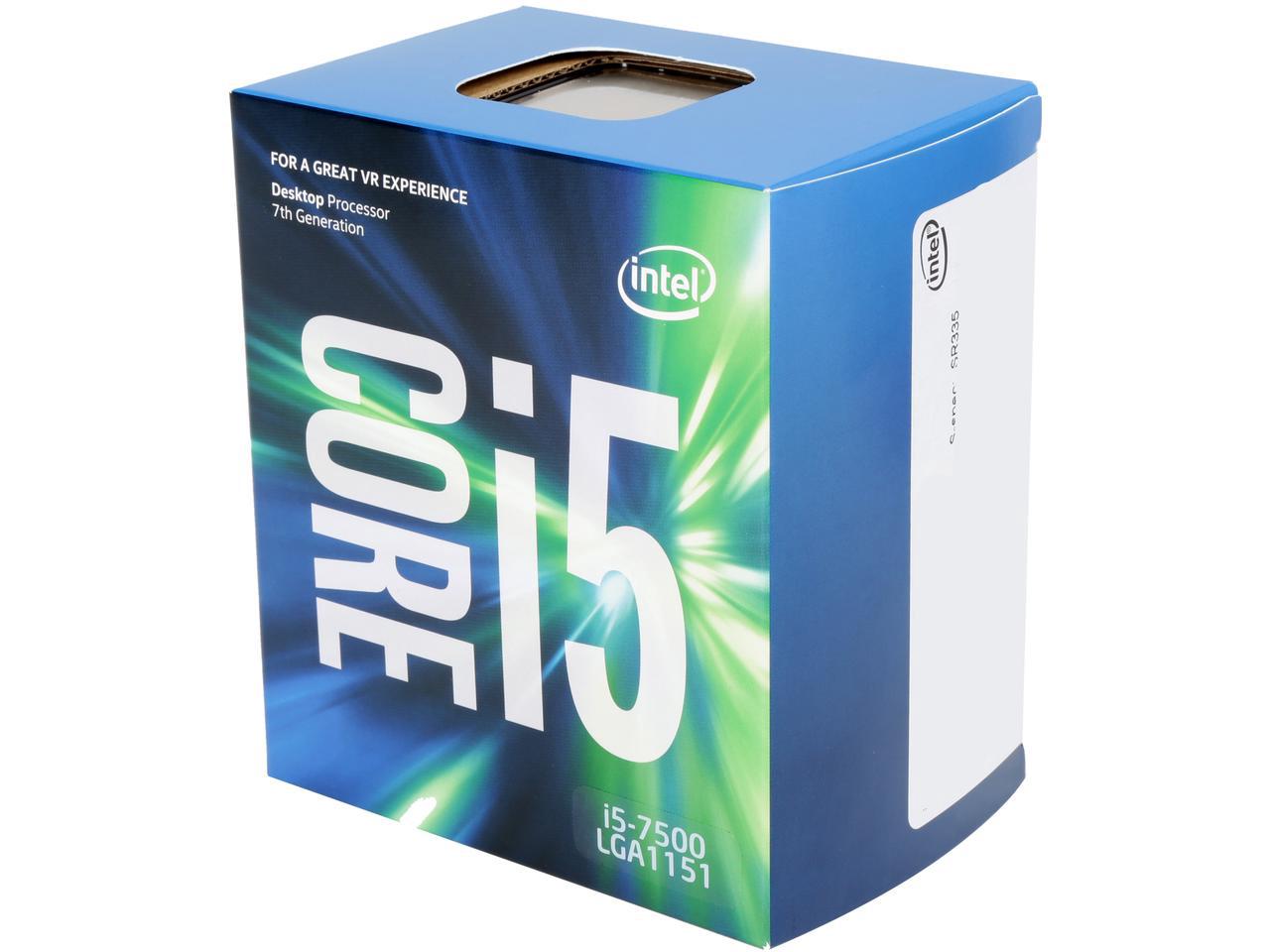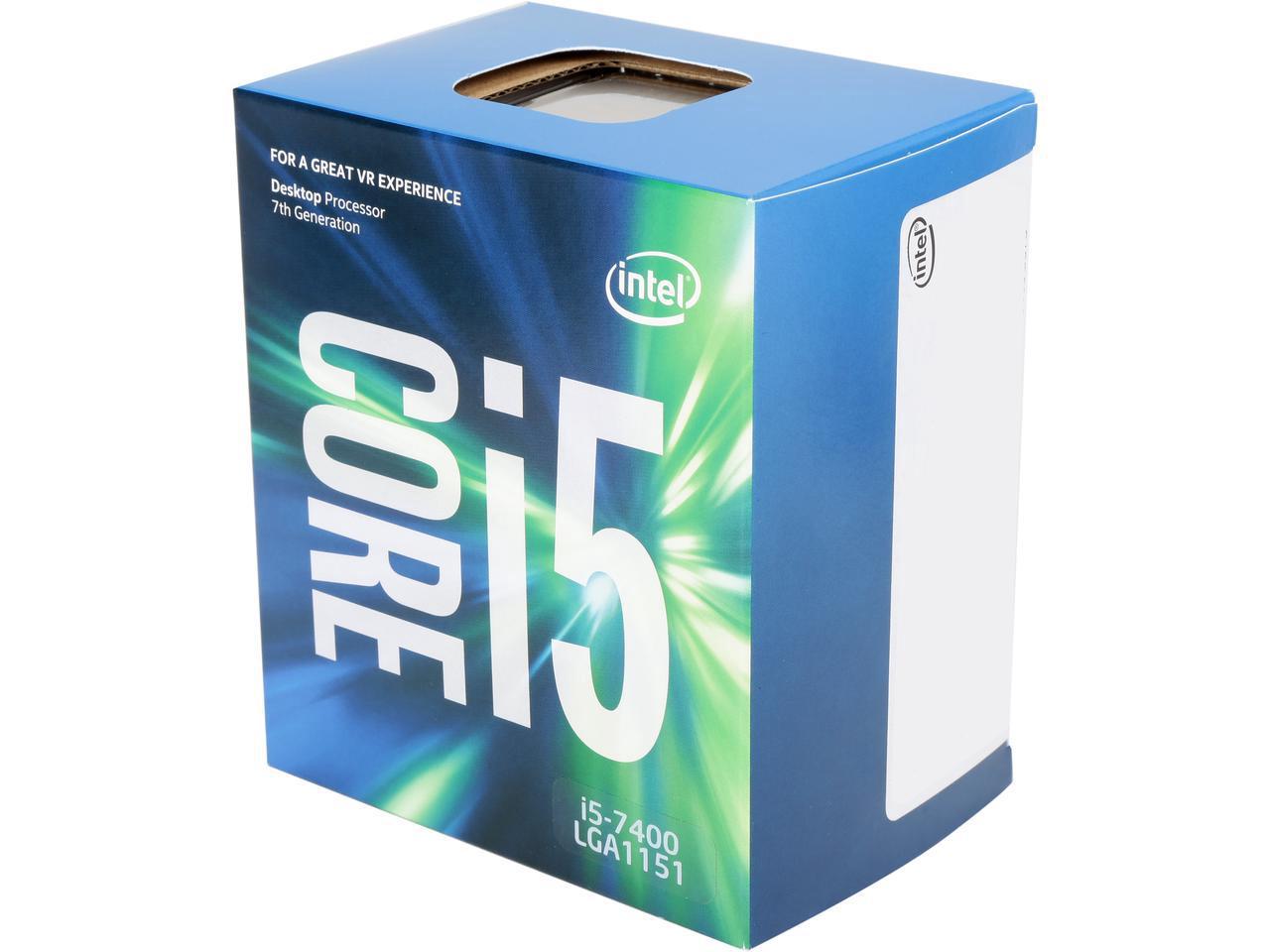Intel Pentium G4620 And G4560 Review: Now With Hyper-Threading
Why you can trust Tom's Hardware
Gaming Benchmarks
Game Testing Particulars
Enthusiasts who shell out enough money for a Titan X aren't going to have an overclocked dual-core CPU under the hood. In an effort to balance the host processors we're testing with graphics horsepower, we're complementing them with a mid-range Asus Strix RX 470 4GB. We're also benchmarking at the 1920x1080 resolution most mainstream gamers will aim for in this price range. We present the AMD Athlon X4 750K with a 4.3 GHz overclock.
Comparison Processors
Ashes of the Singularity
Our entire test pool falls below Oxide Games' official minimum spec of a Core i7 or equivalent. Ashes of the Singularity is CPU-intensive and scales well with increased core counts and frequency, so the Core i5-7600K naturally assumes its position at the top of the chart. The battle at the other end of the price spectrum favors Intel's Core i3-6320. However, the Pentiums also turn in a decent showing.
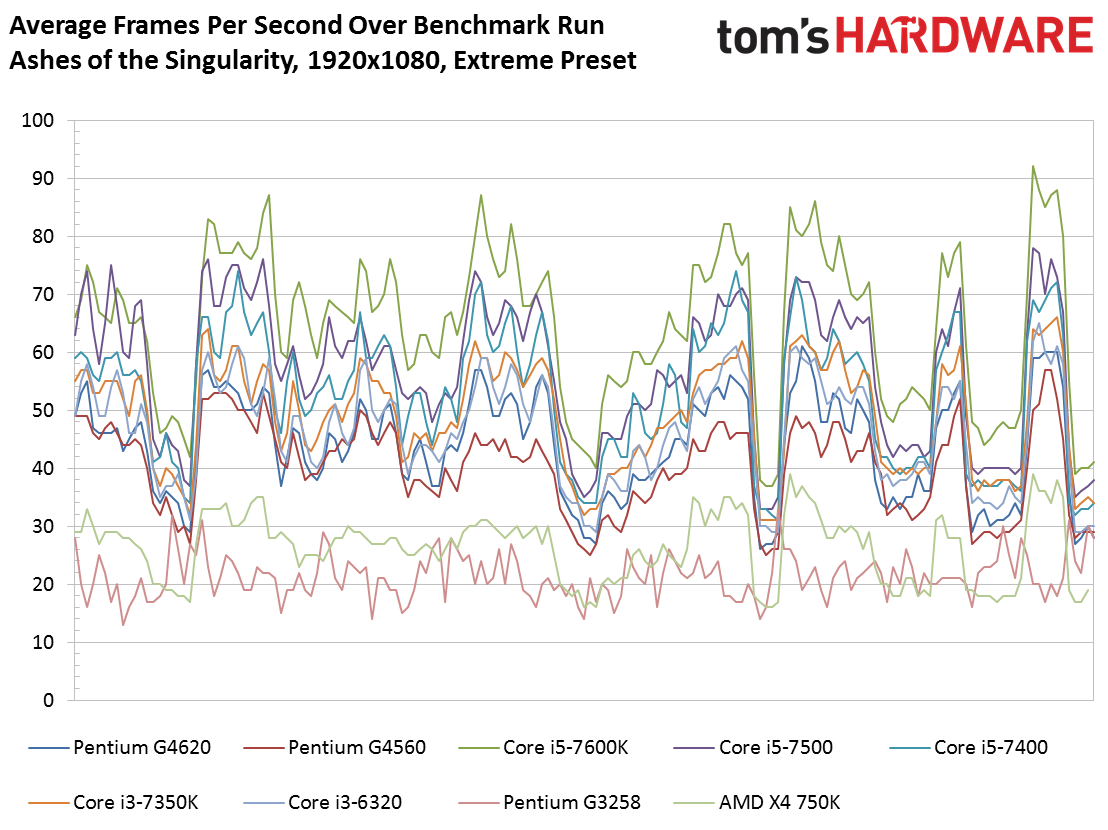
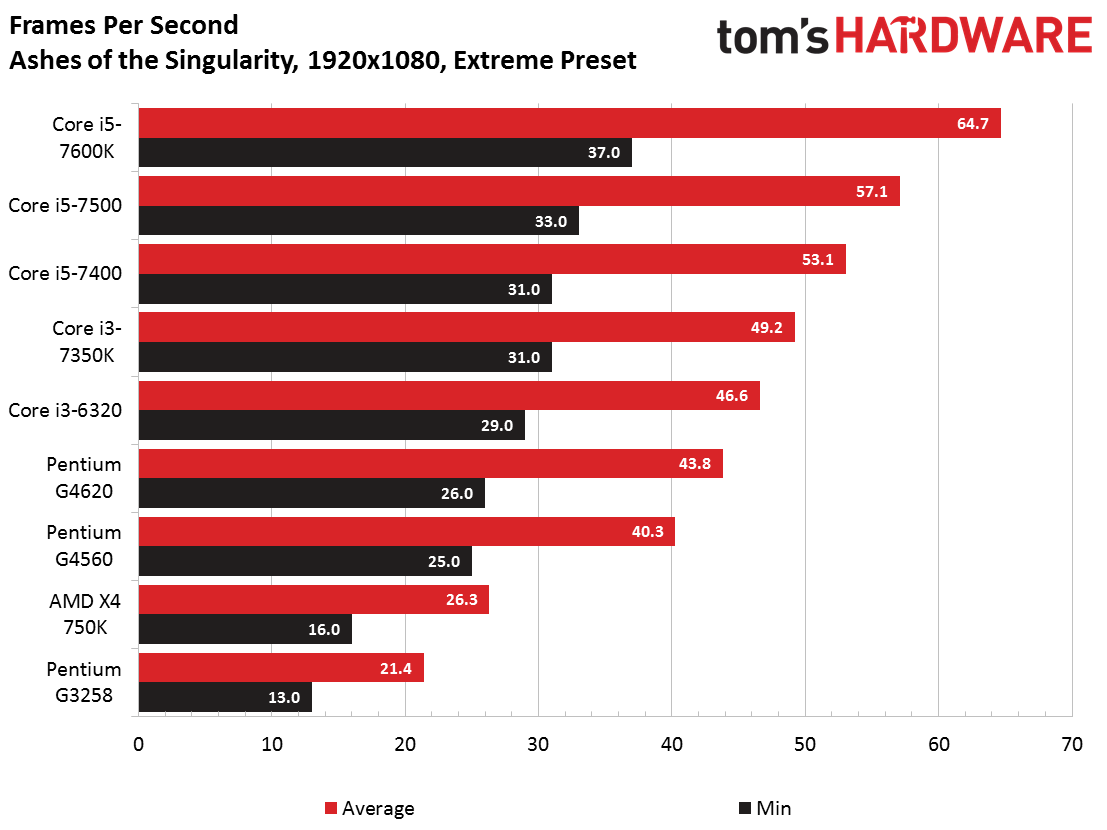
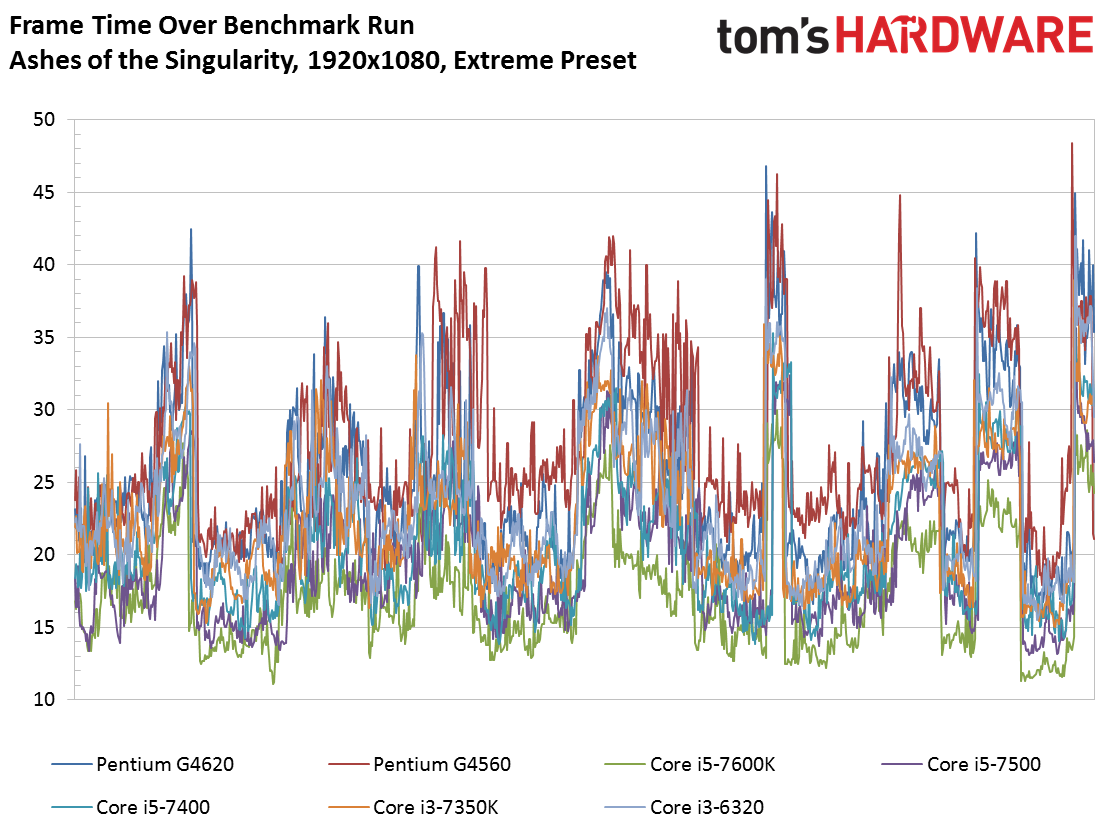
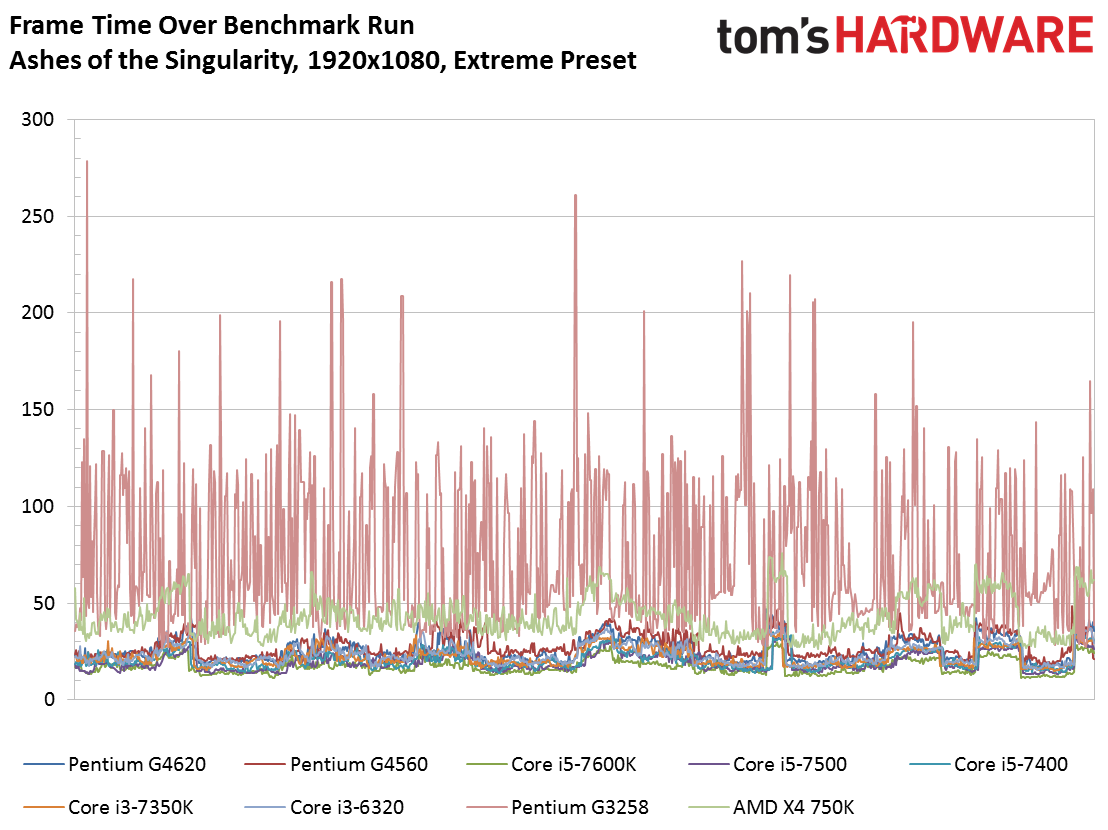
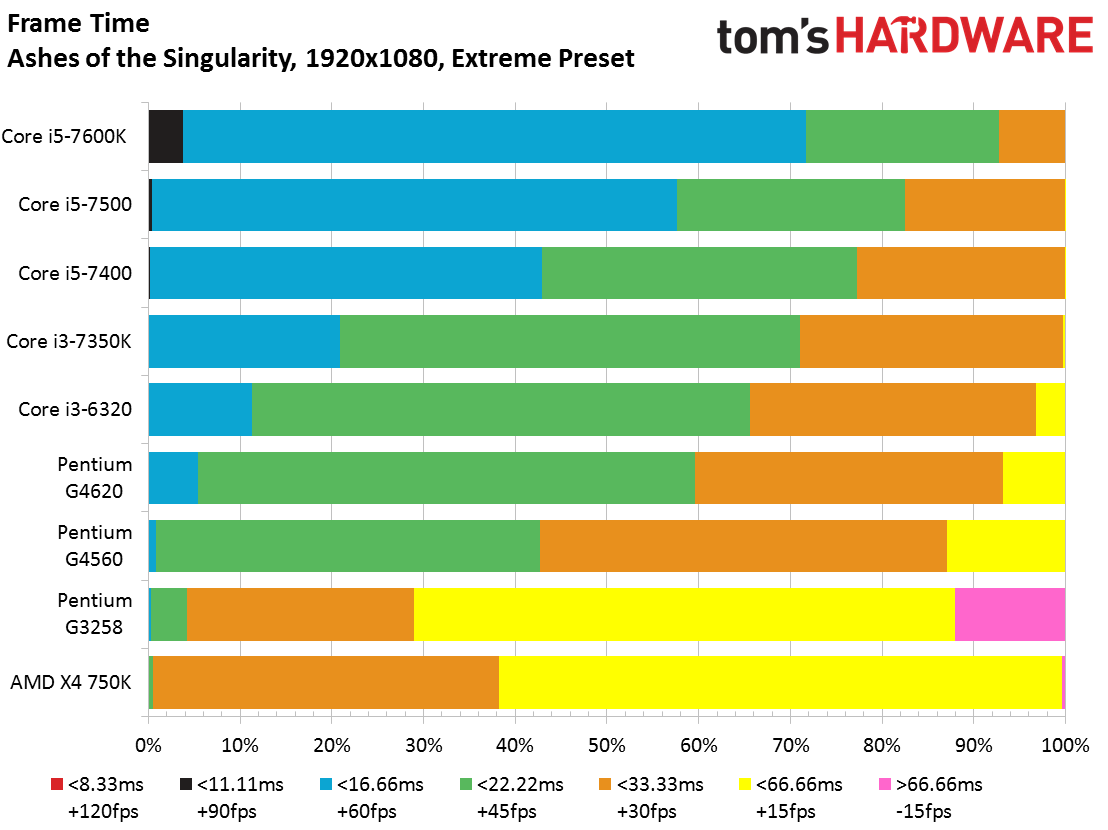
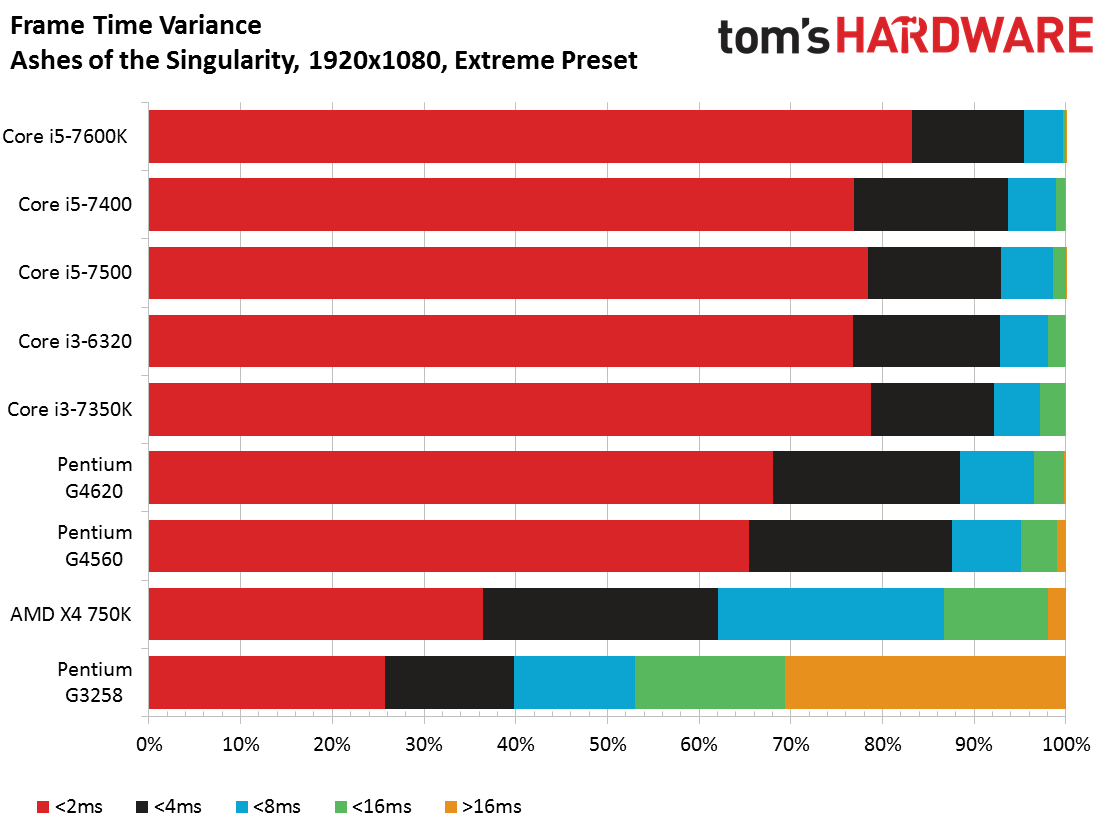
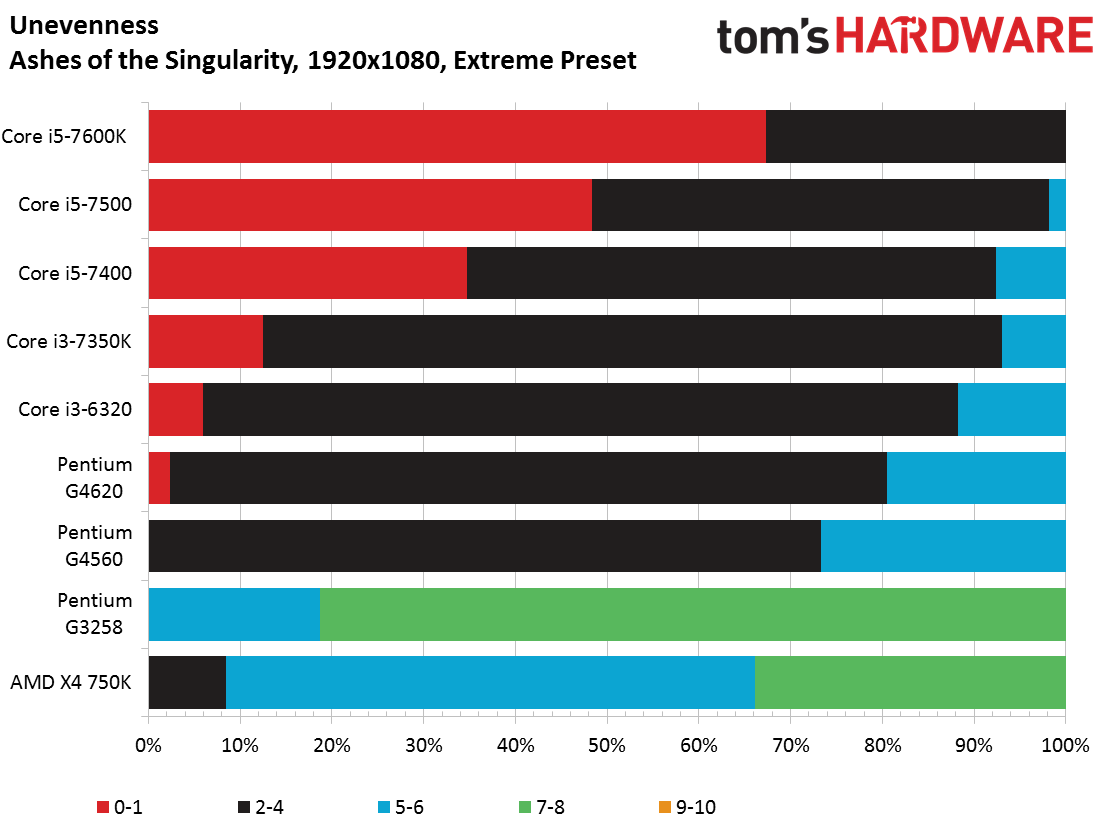
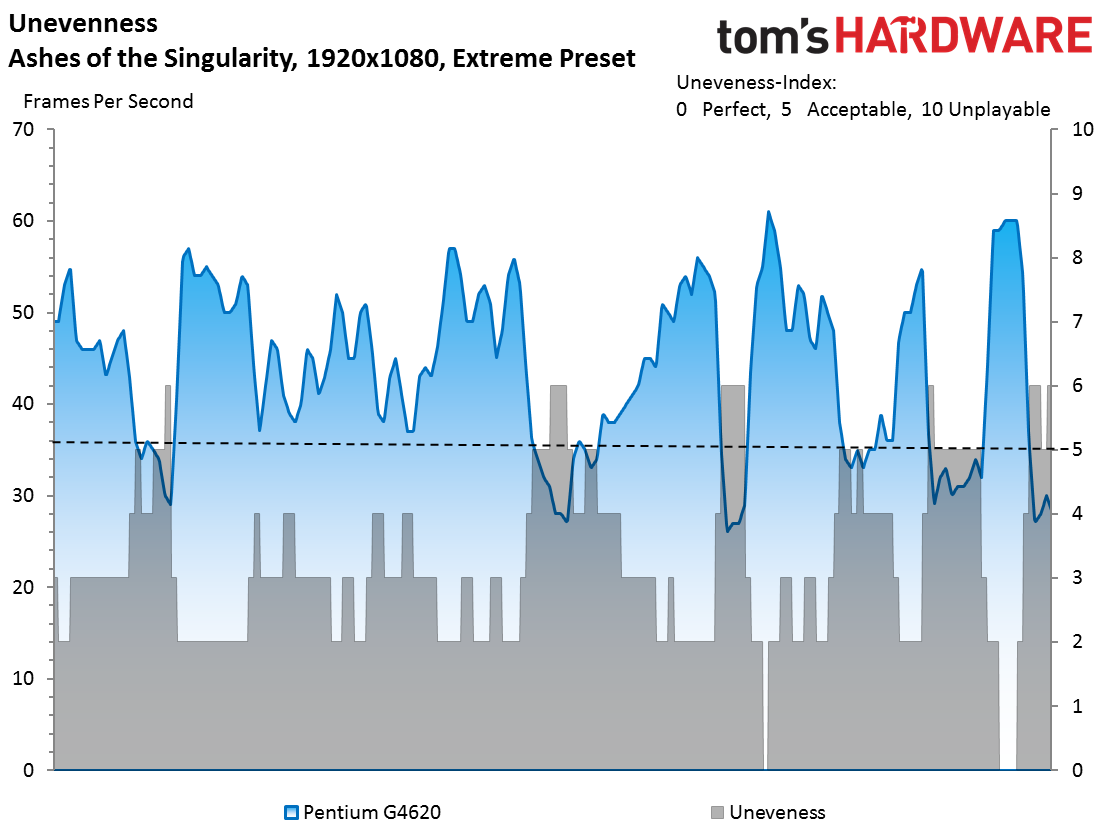
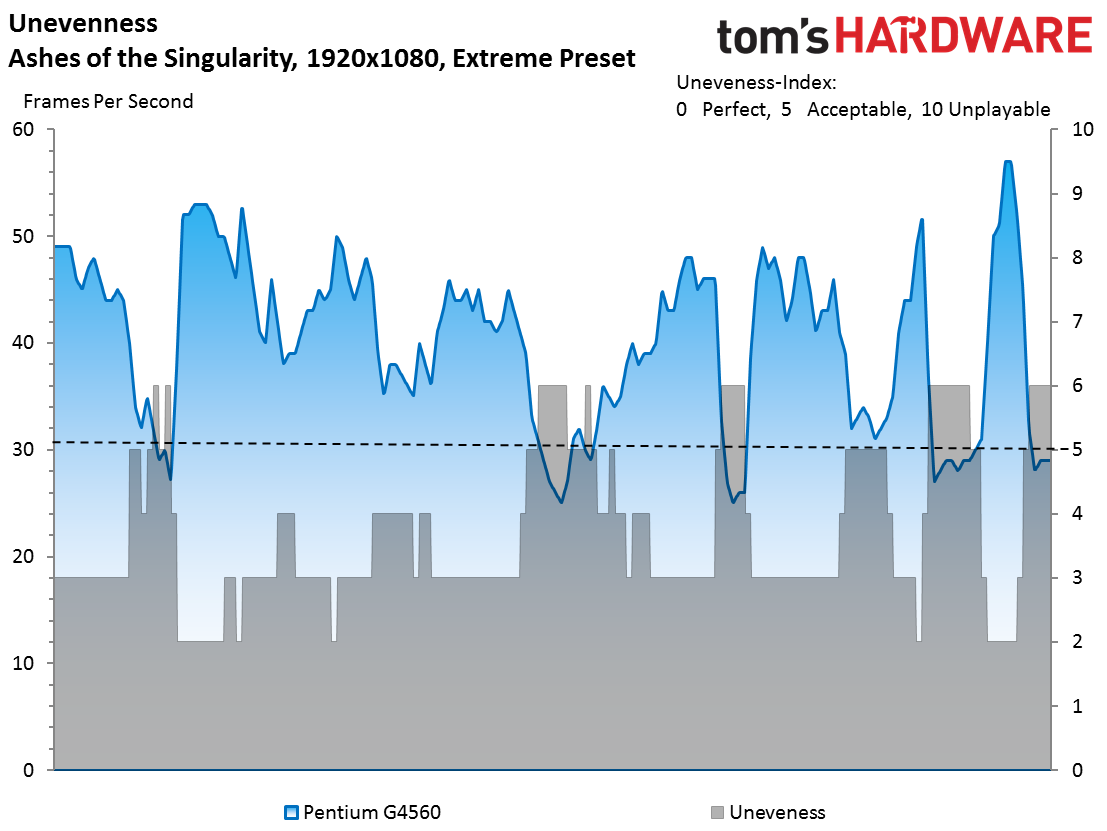
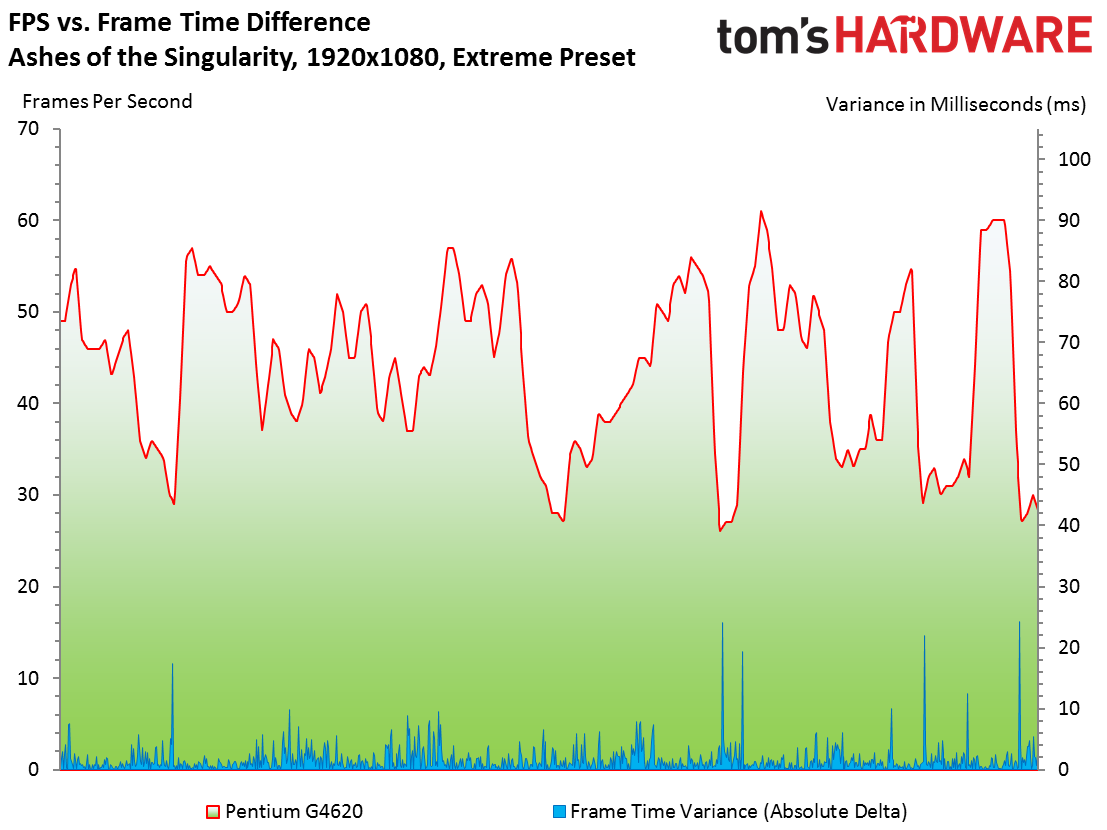
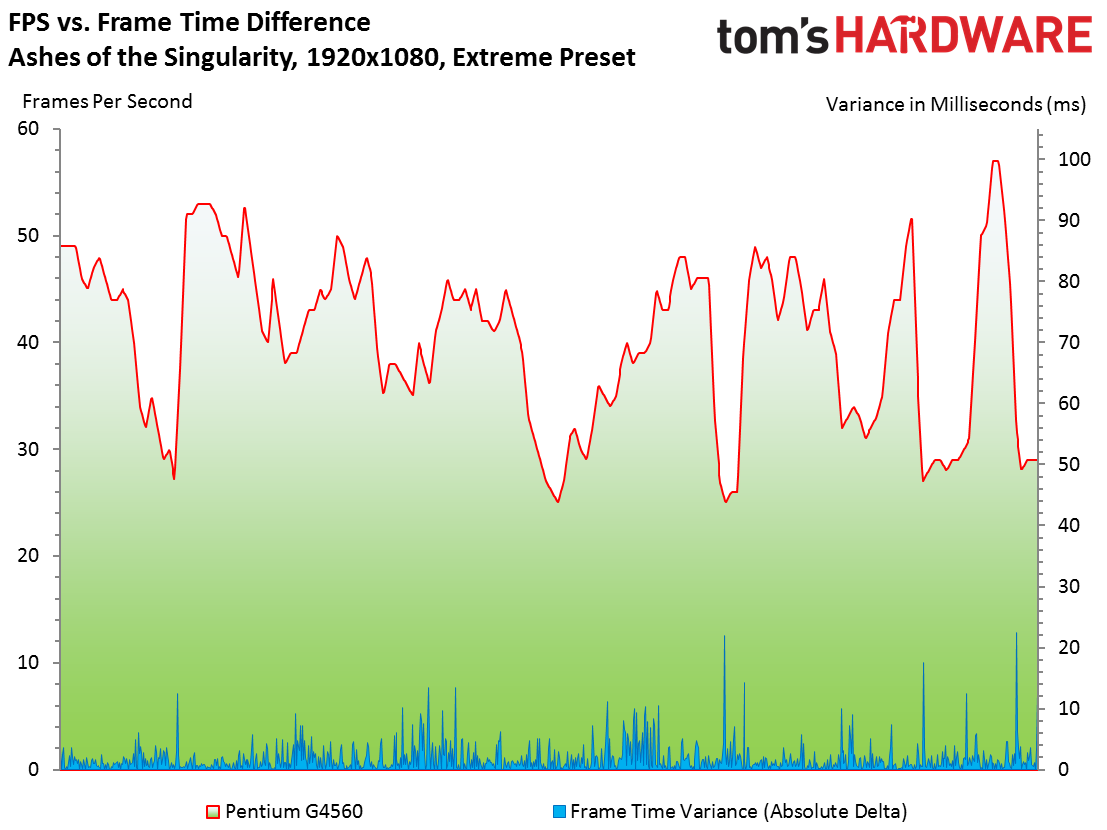
The G4620 averages 43.8 FPS, edging out the G4560's 40.3 FPS. The Haswell-based Pentium G3258 does a great job of showing why you want Hyper-Threading and higher clock rates. After all, the Pentium G4620 and G4650 provide ~2x the performance. The difference is even more pronounced in our variance and unevenness test results.
Terrible frame time results from the Pentium G3258 and Athlon X4 750K necessitate removing them from the chart. They muddy the outcome, so we're creating two sets of line graphs when it helps clarify our presentation.
Battlefield 4
Battlefield 4's single-player campaign is notoriously graphics-bound, so we don't observe much scaling as we swap dual-core CPUs out for quad-core models. Only a few FPS separate the Kaby Lake CPUs. The unevenness and FPS/frame time difference results reveal just how close the G4620 and G4560 are when we pair them with a mid-range GPU.
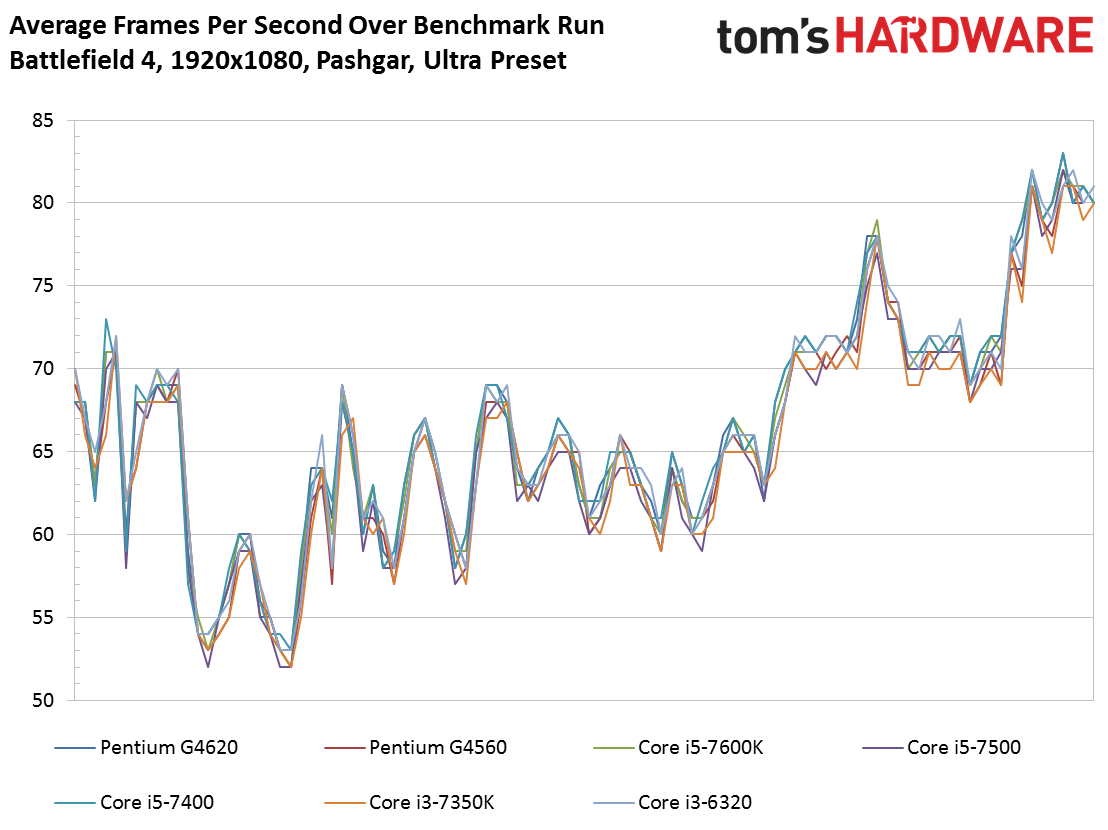
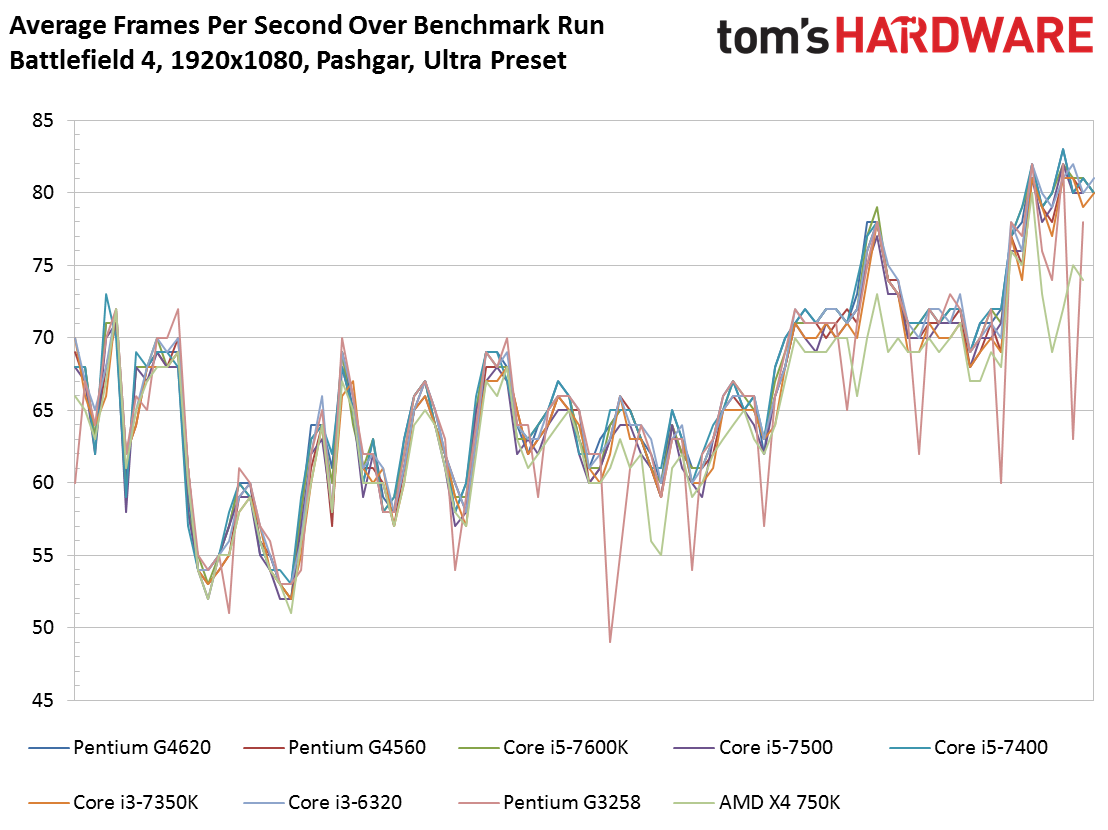
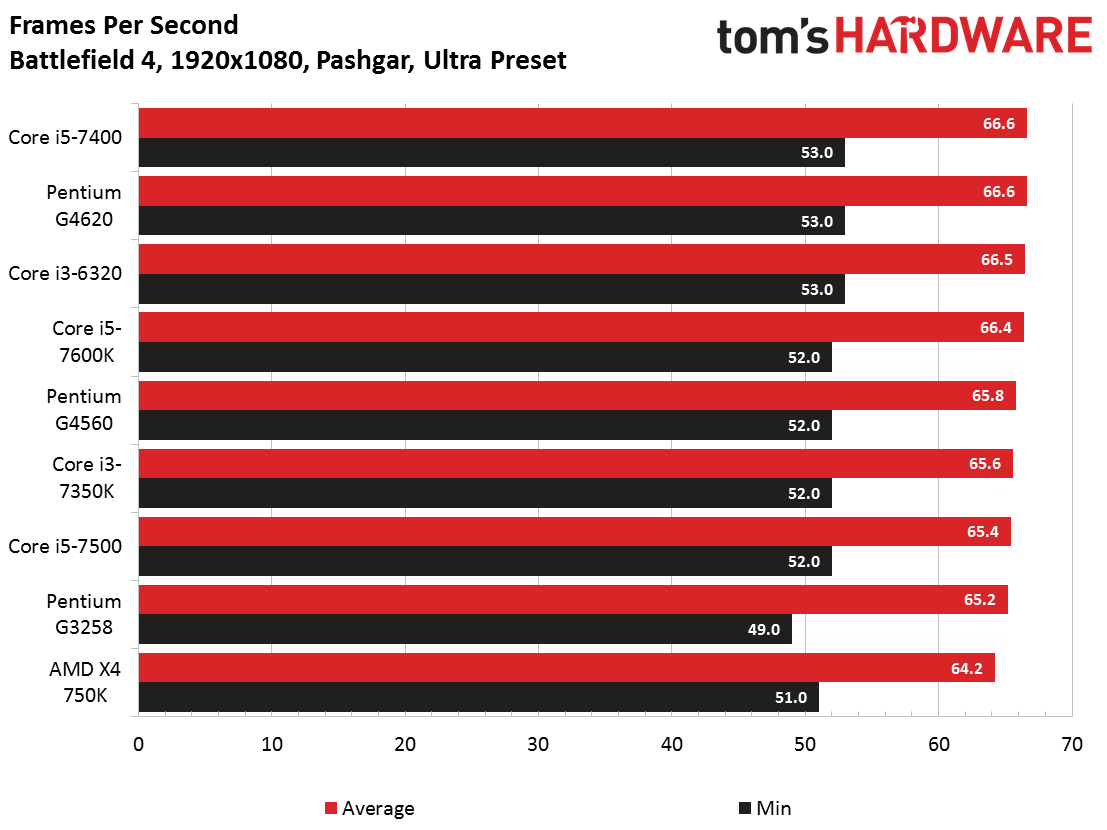
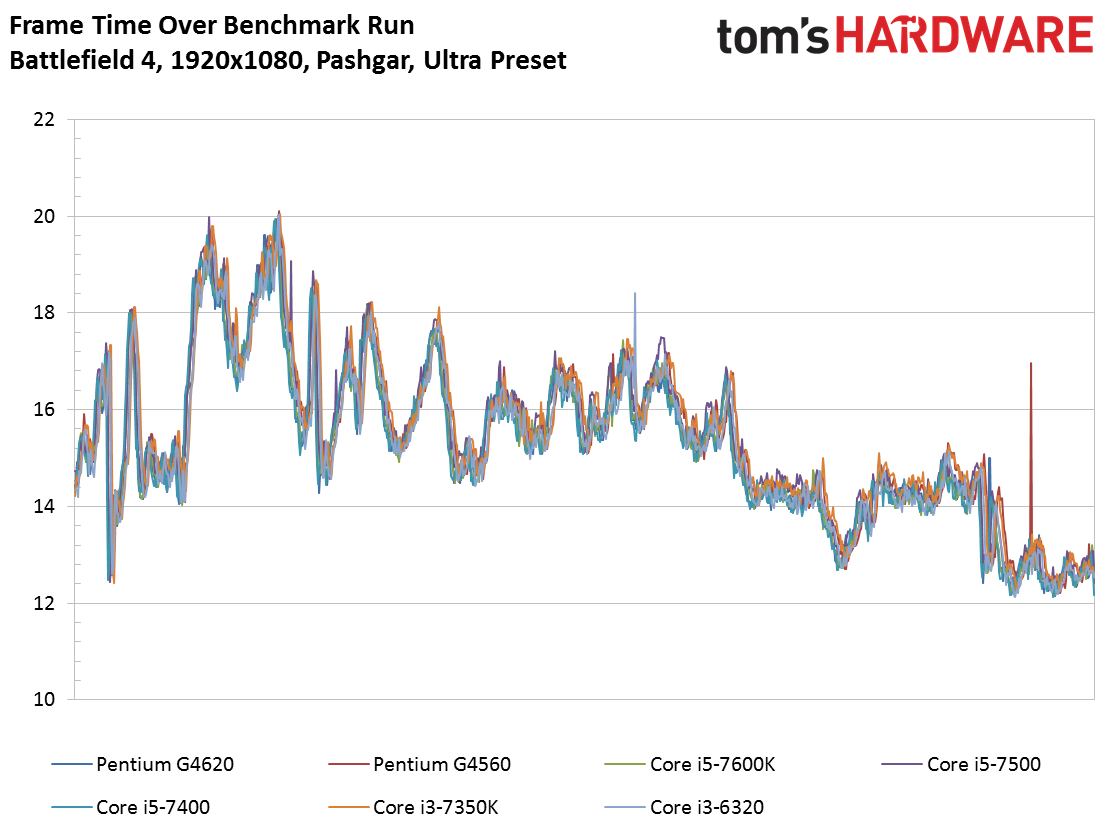
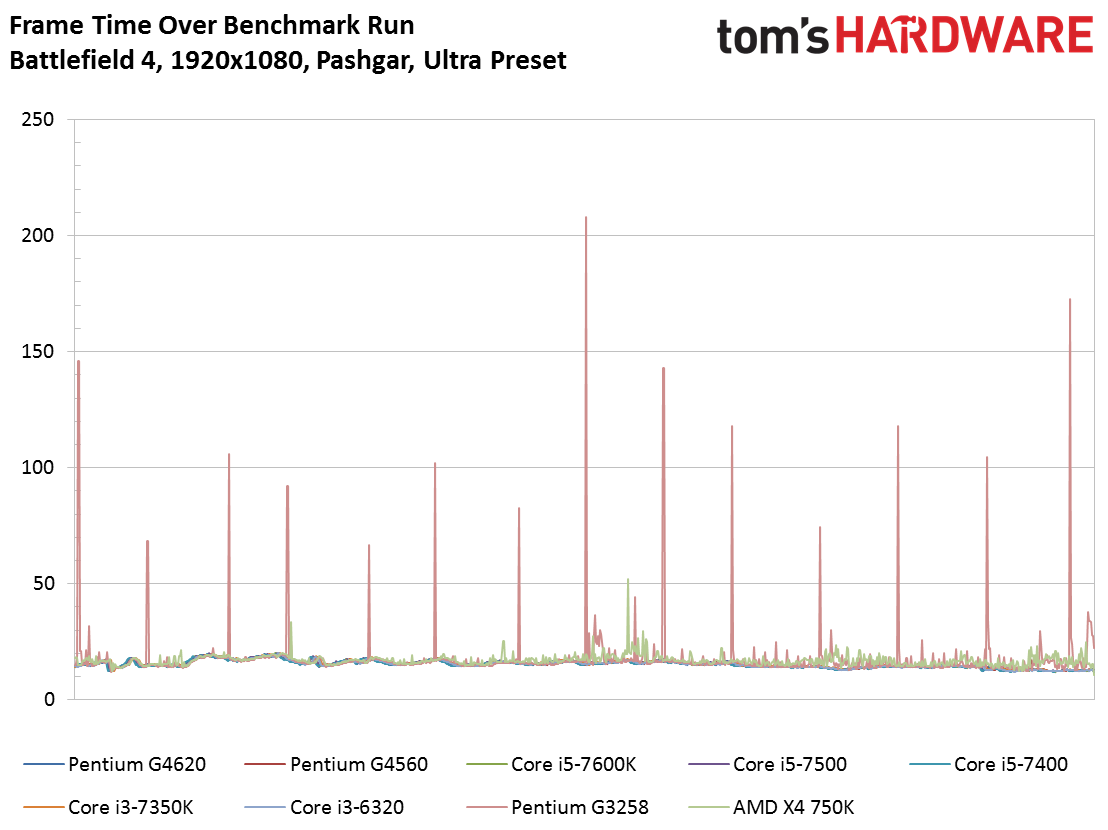
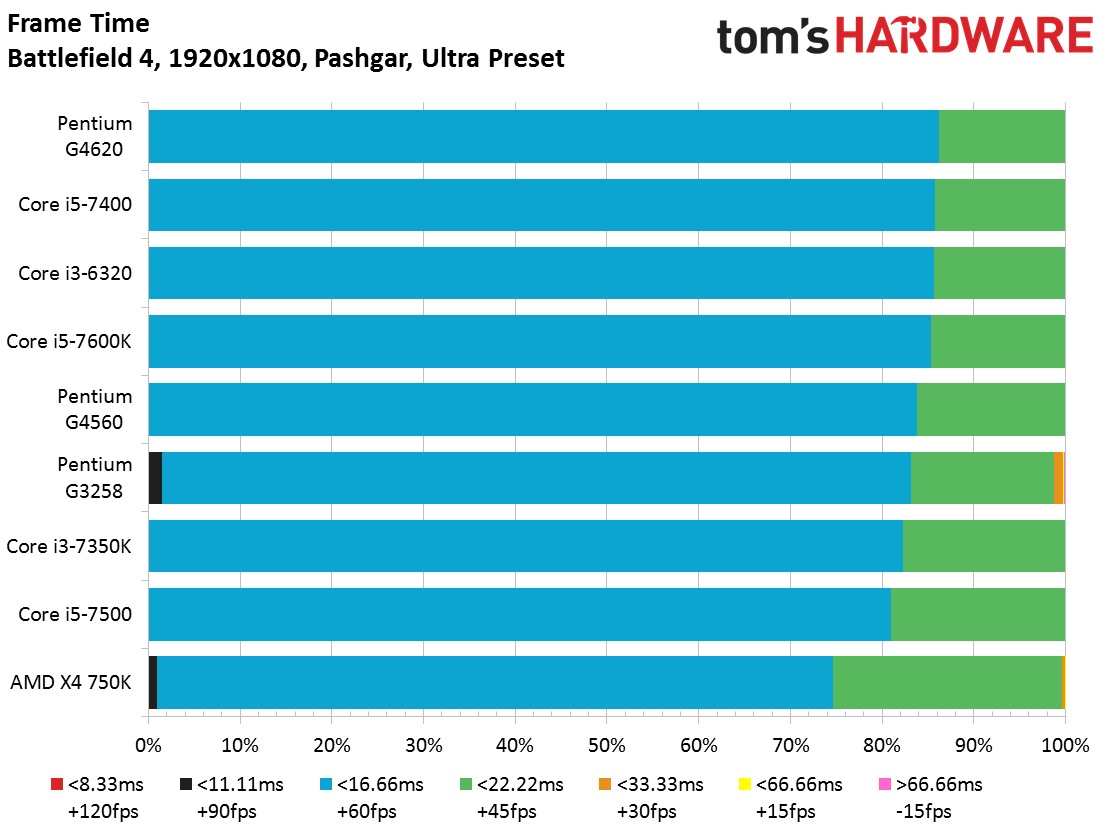
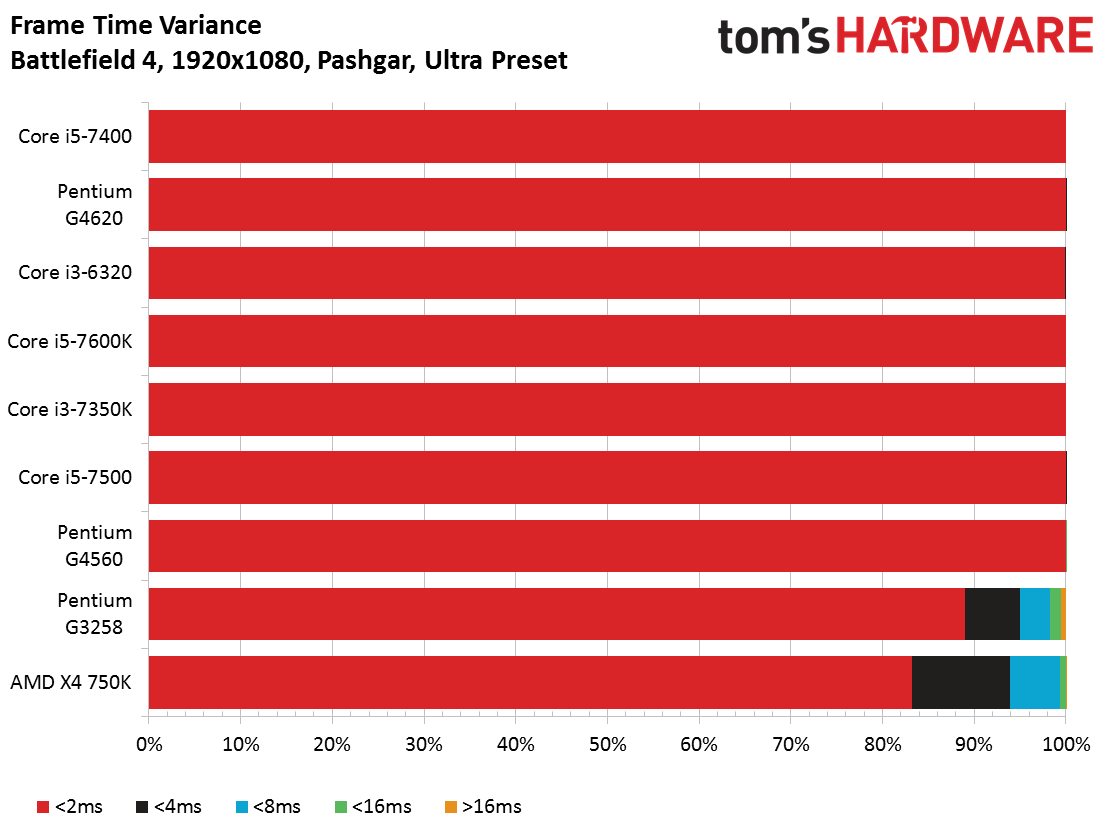
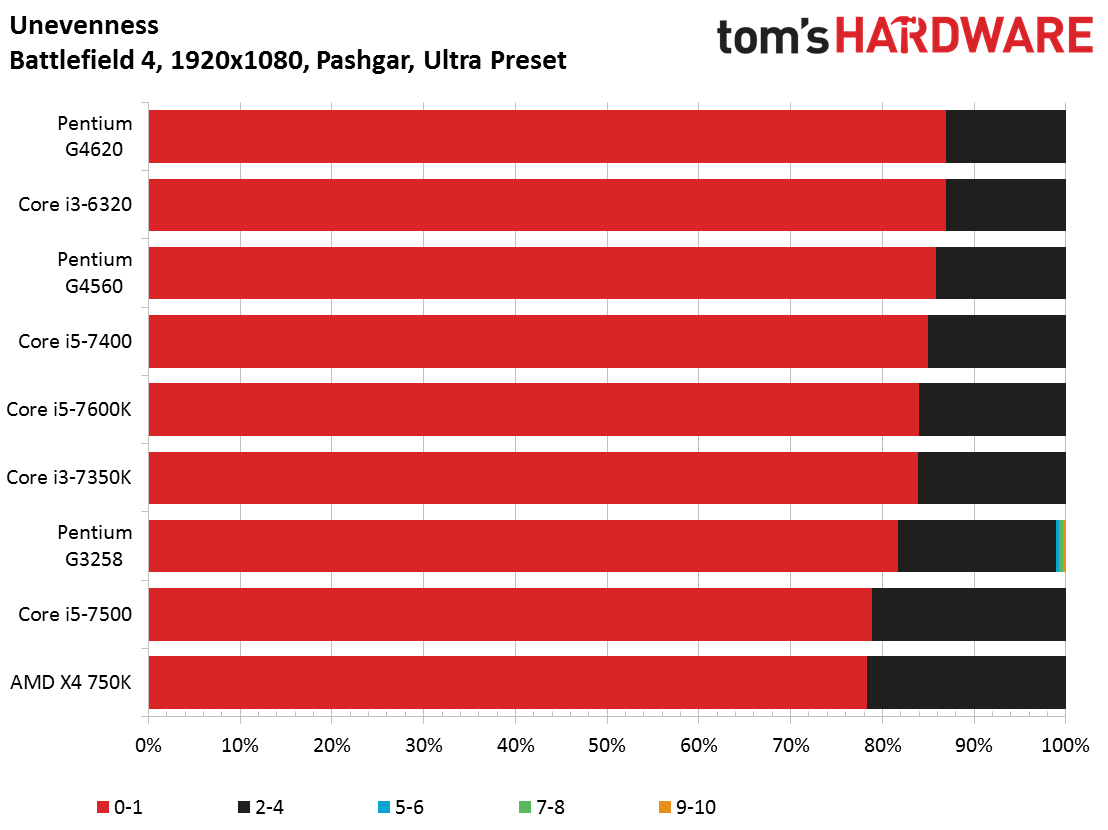
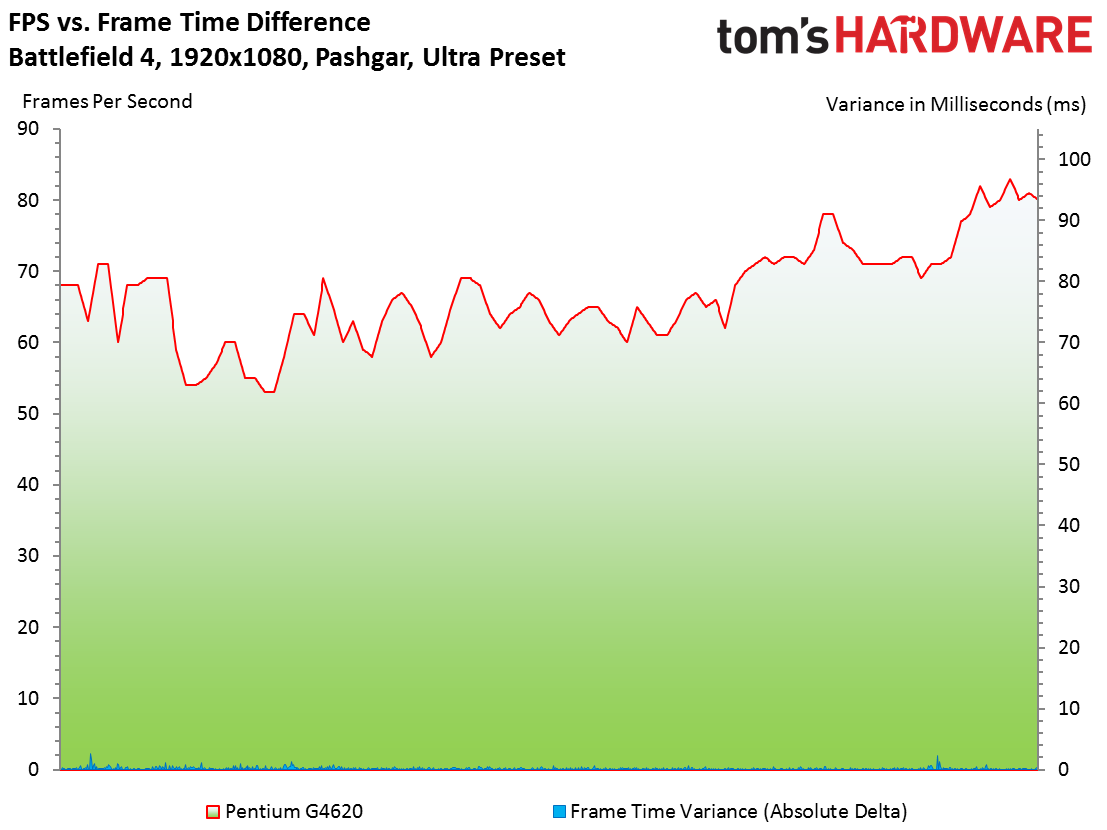
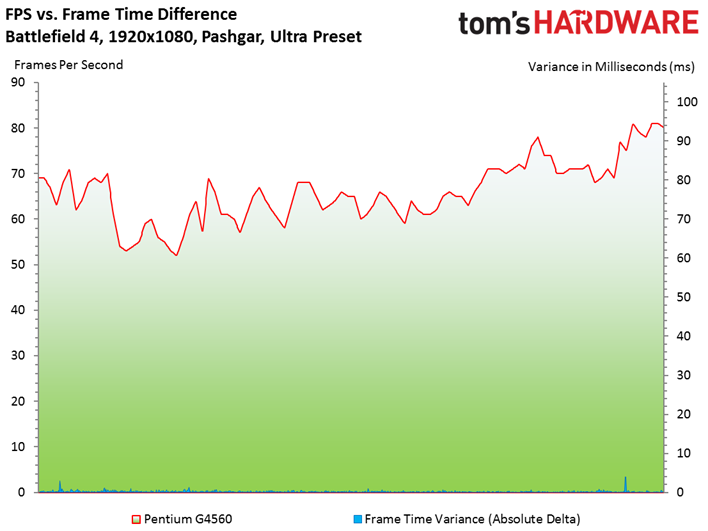
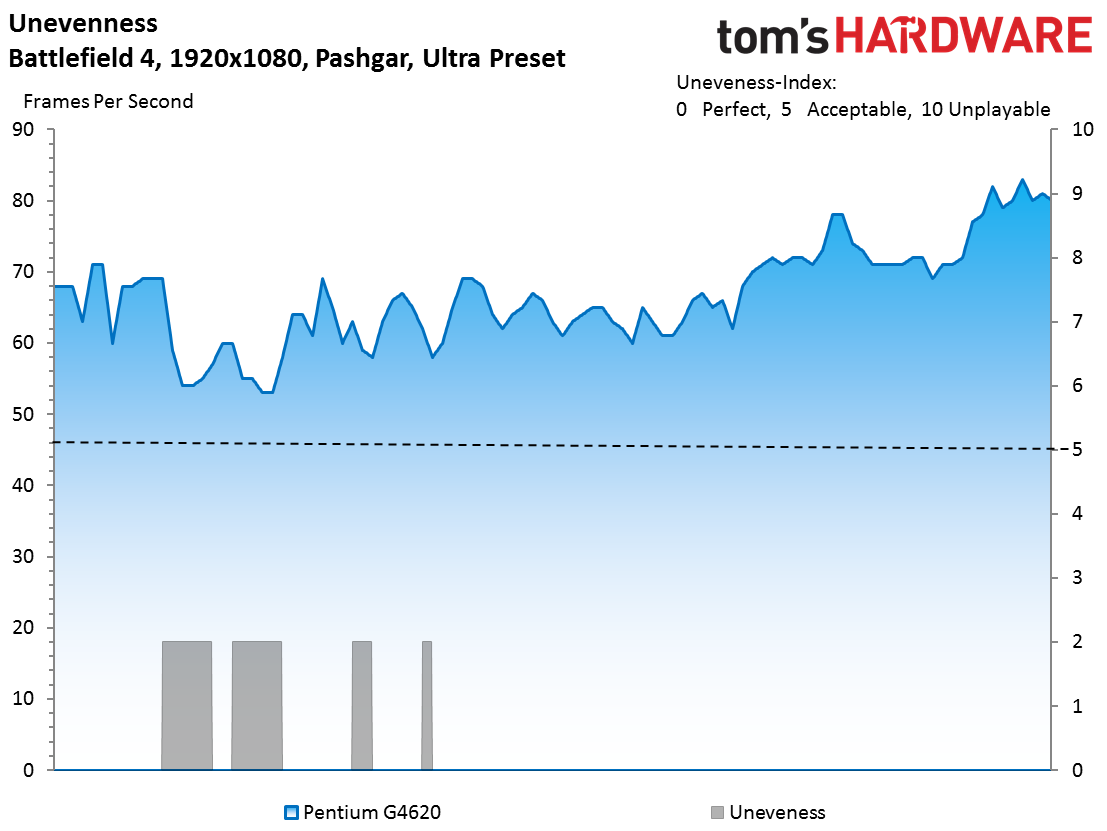
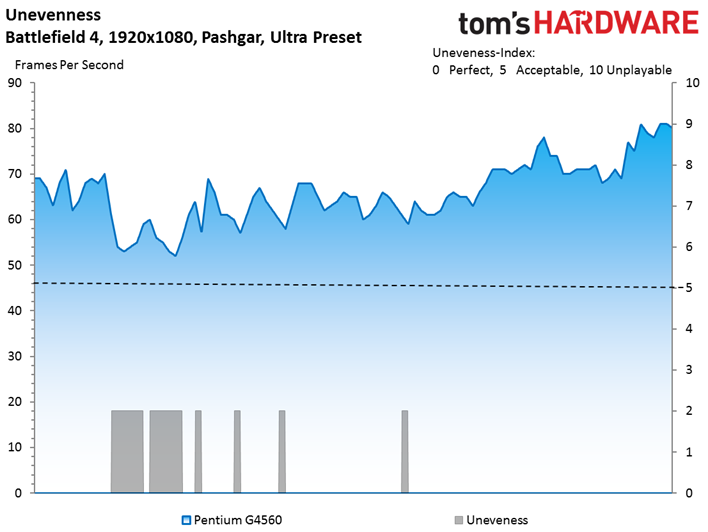
You could drop down from the Ultra-quality preset to facilitate higher frame rates, but both Kaby Lake-based Pentiums can obviously push the RX 470 to its limit with these settings. The Haswell-era Pentium G3258 suffers frequent frame rate dips and worrying frame time variance.
Hitman (2016)
The Athlon X4 750K and Pentium G3258 struggle with Hitman's CPU-centric workload, thus providing unplayable performance.
Get Tom's Hardware's best news and in-depth reviews, straight to your inbox.
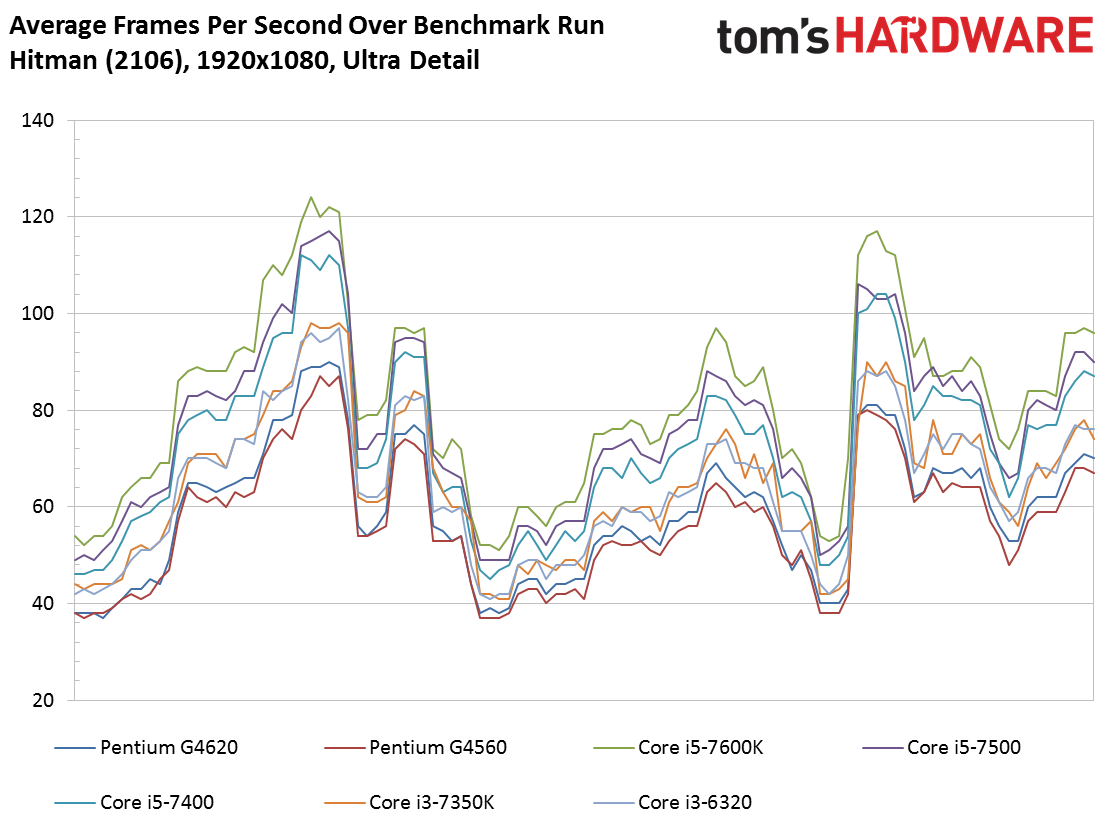
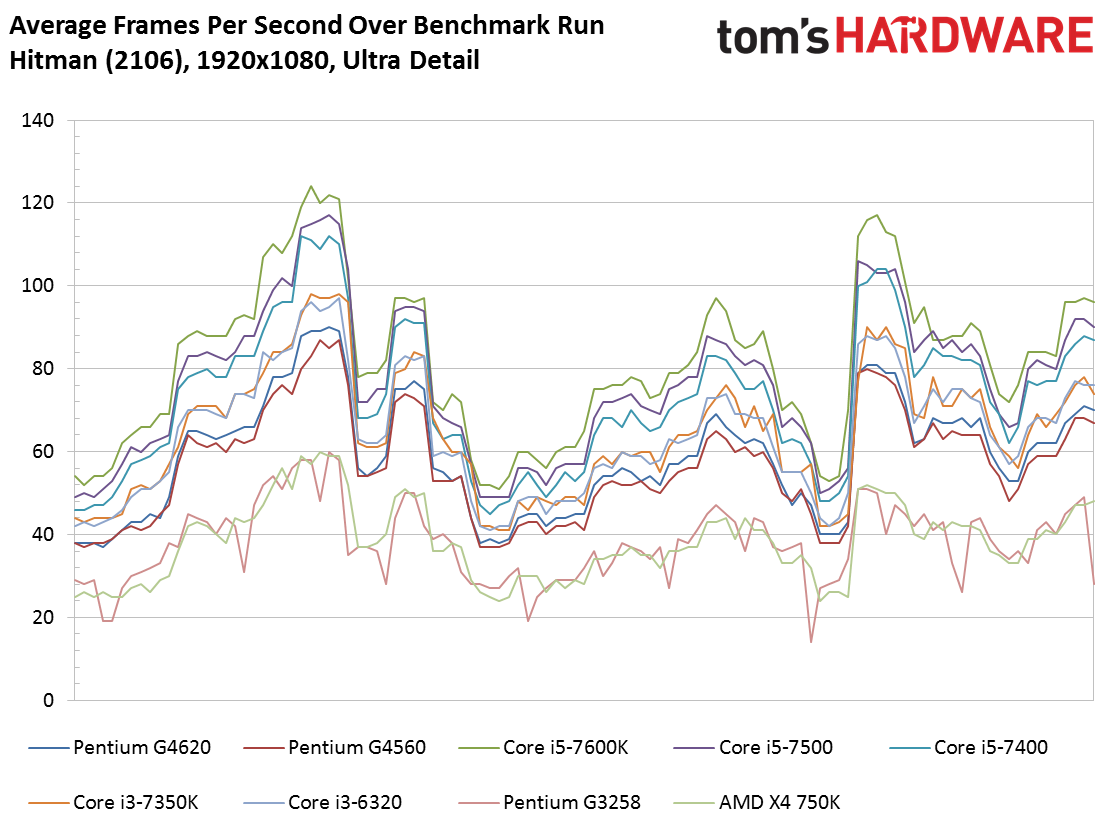
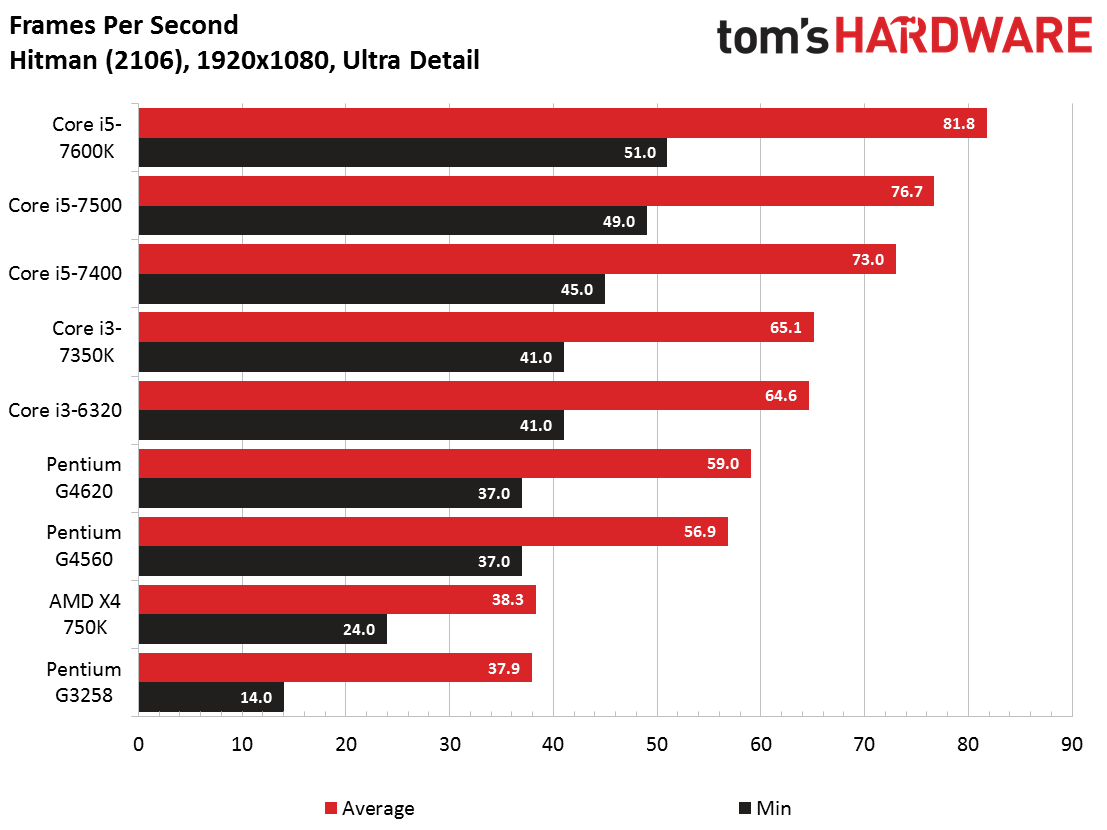
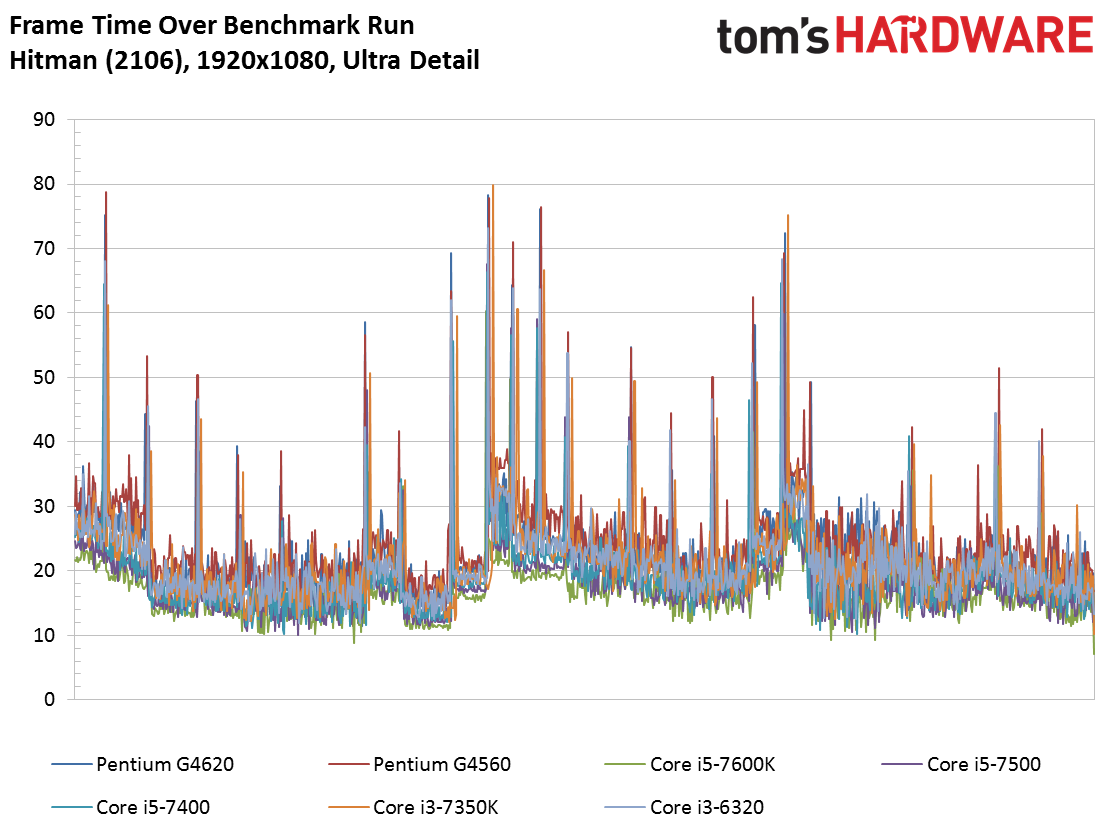
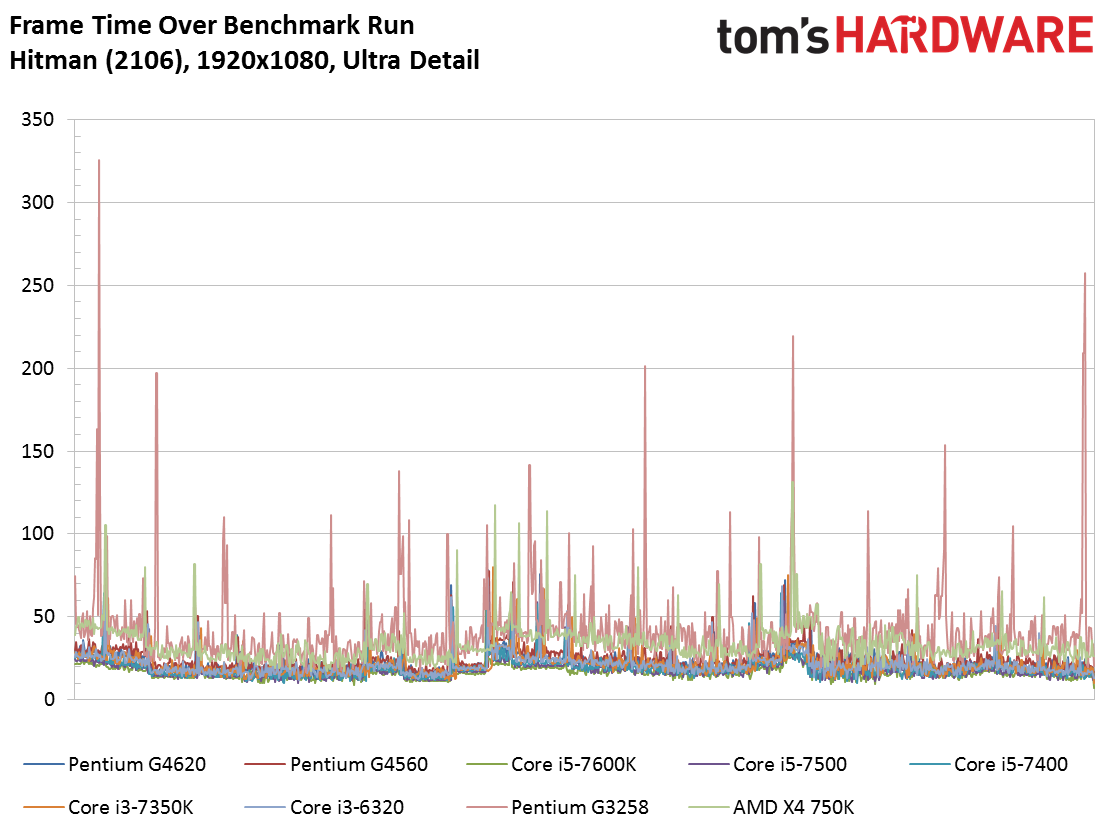
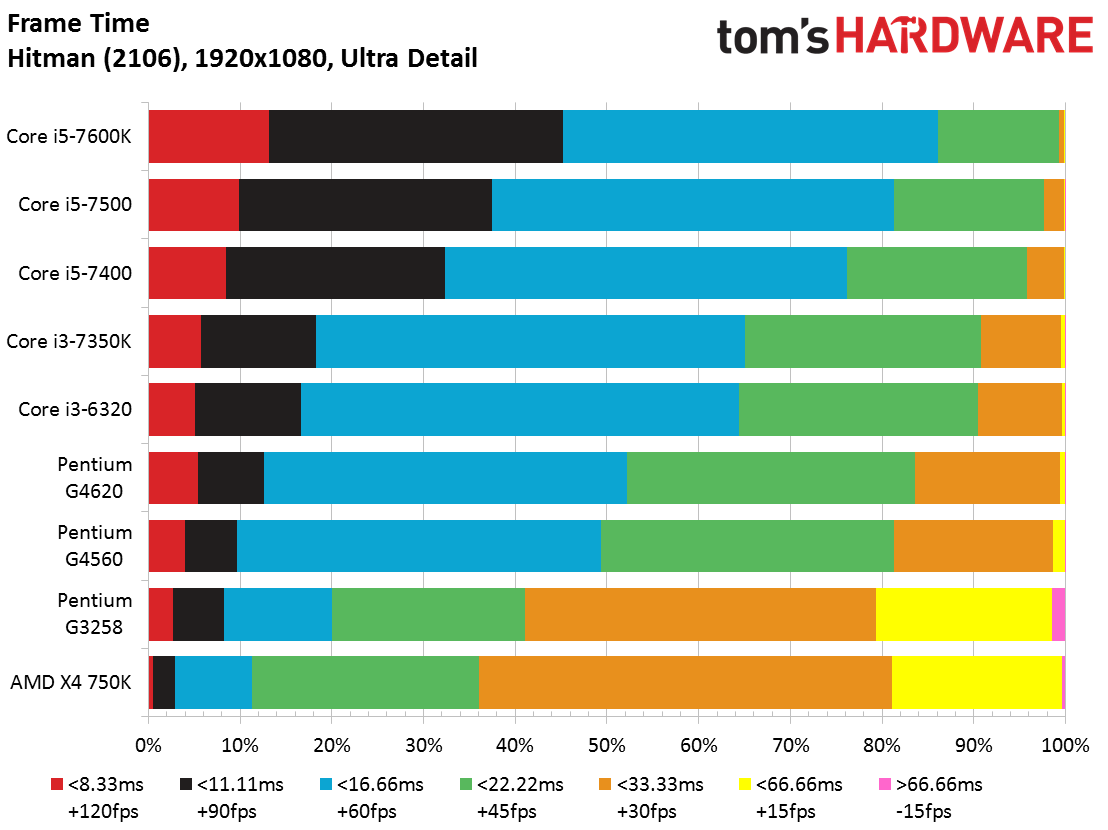
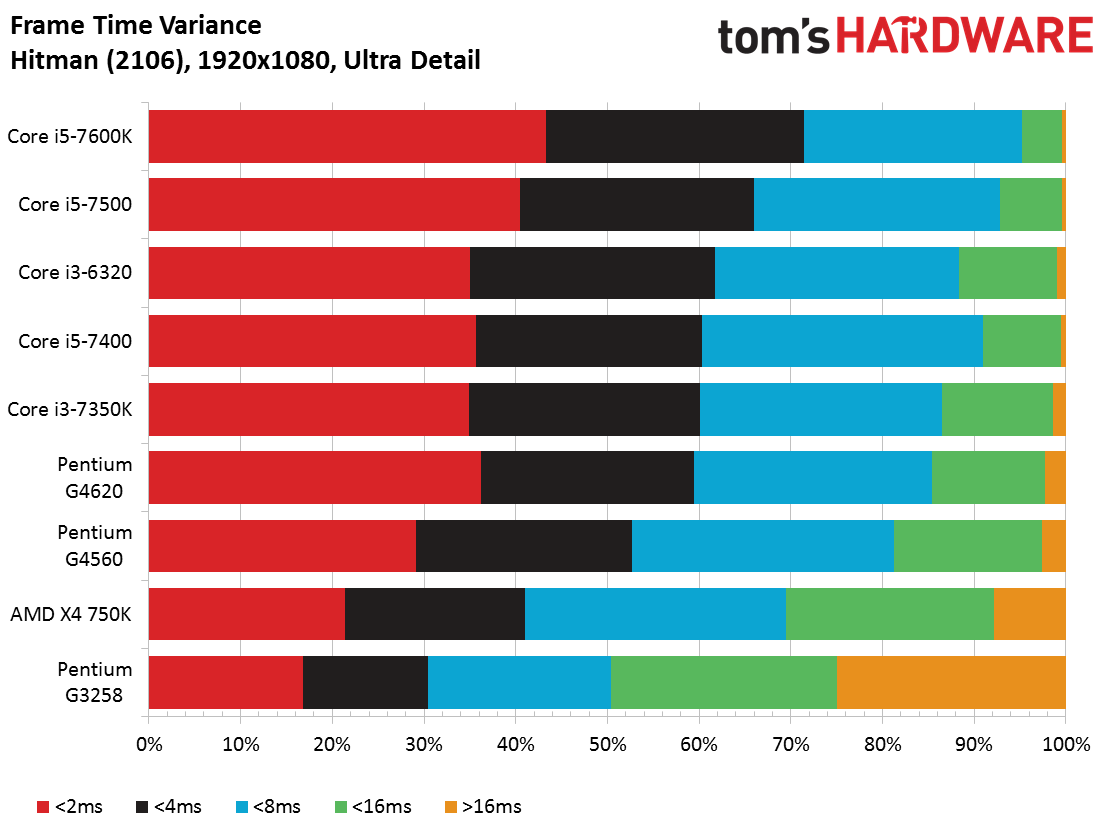
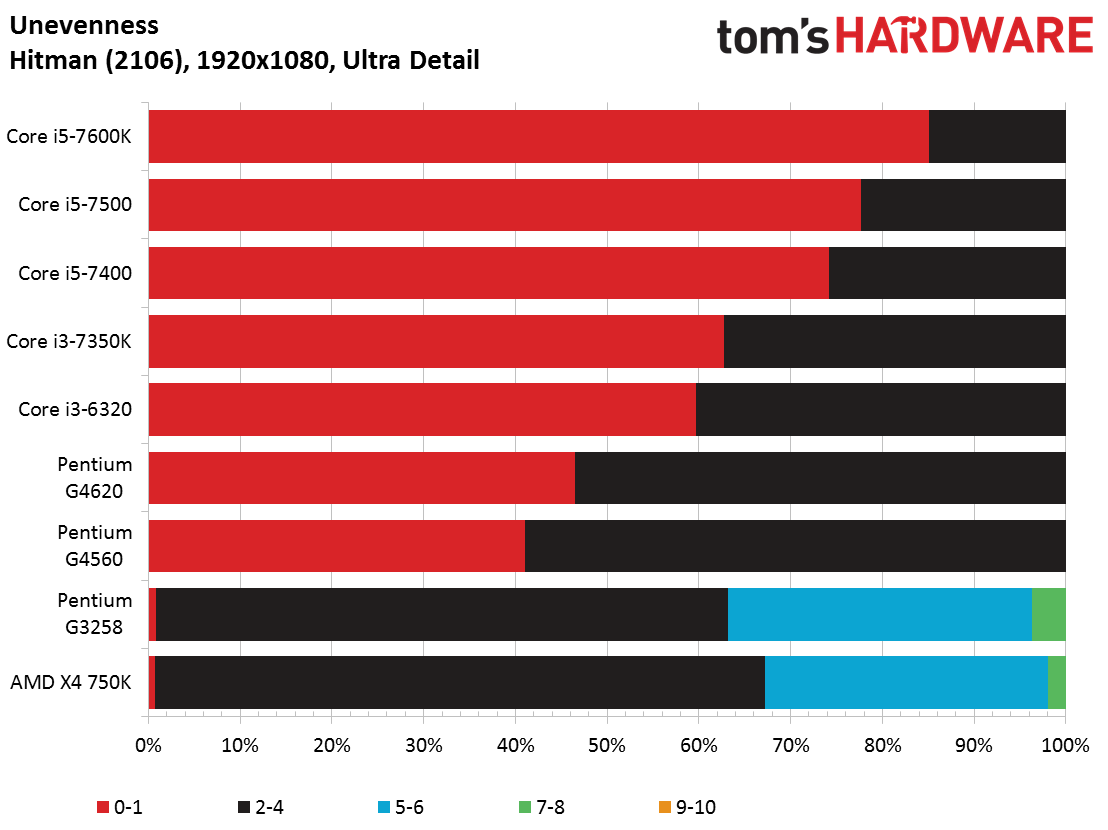
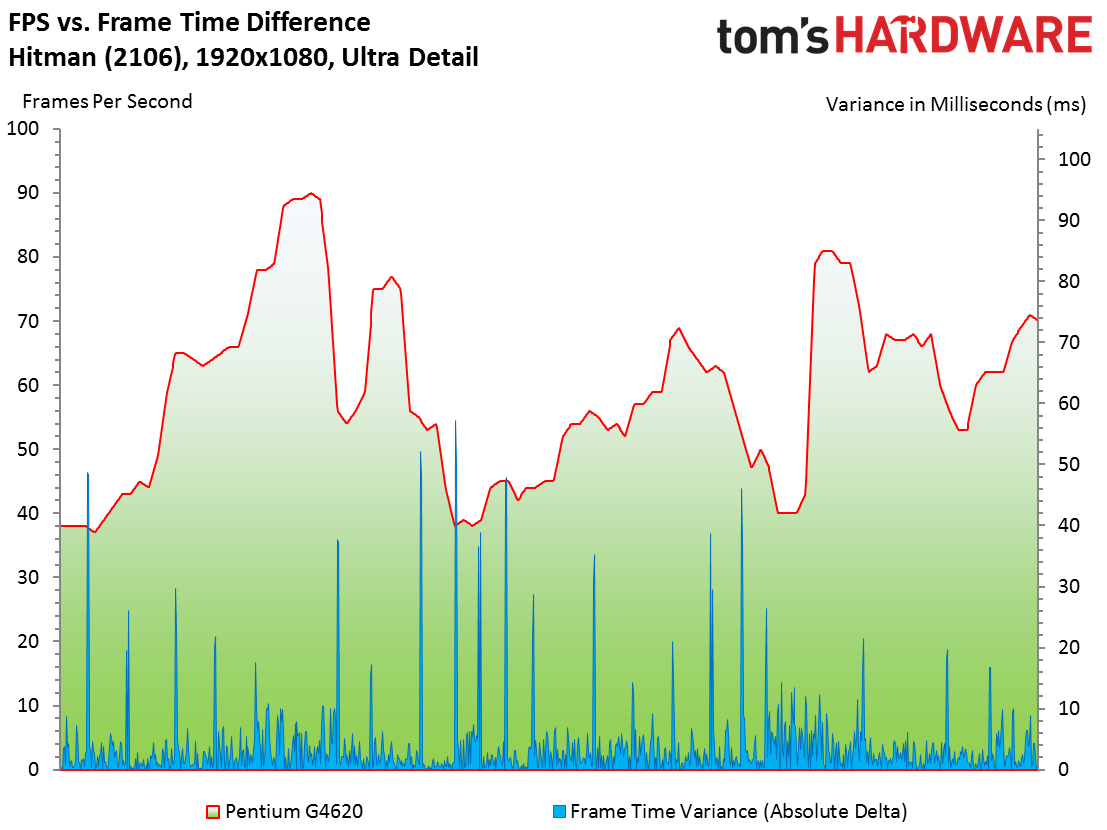
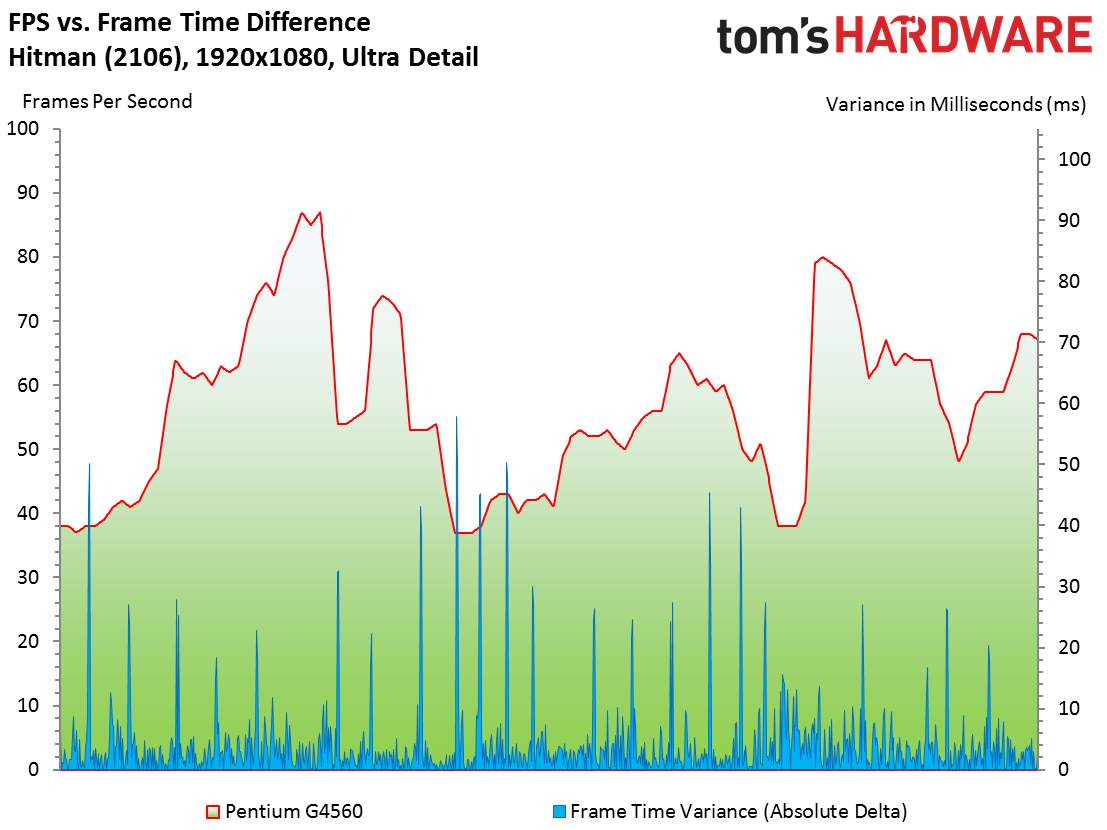
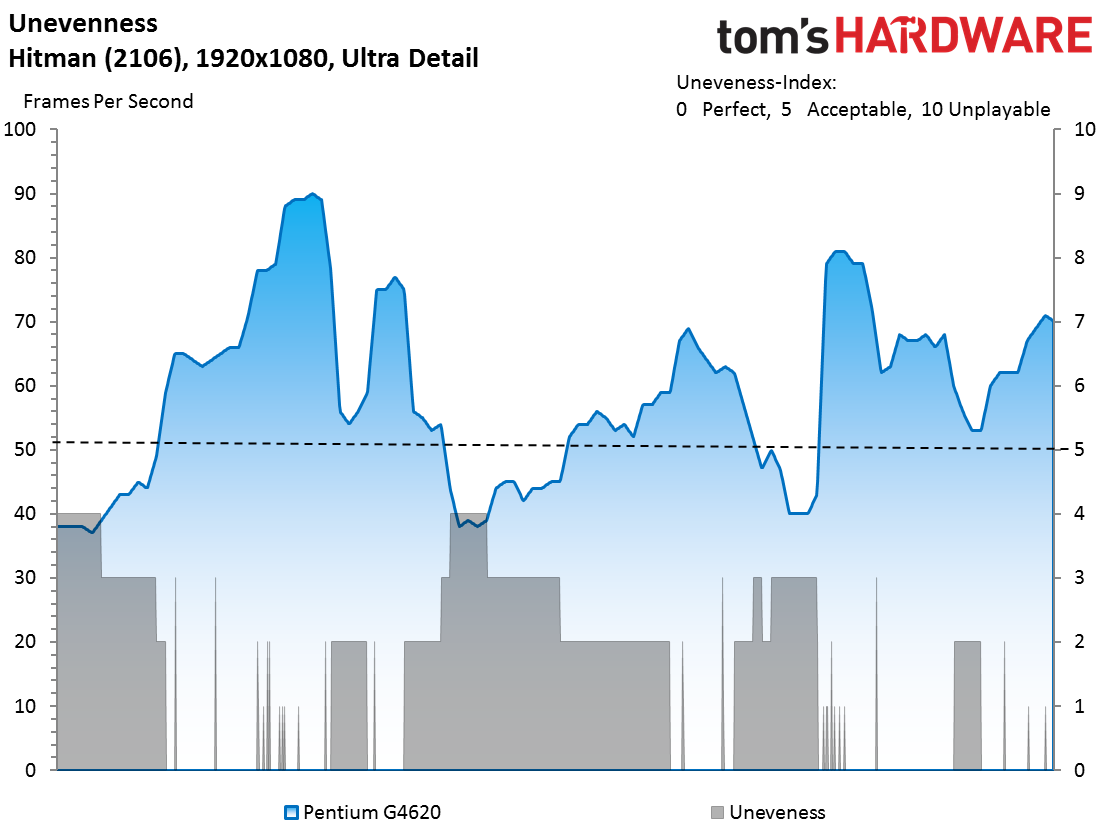
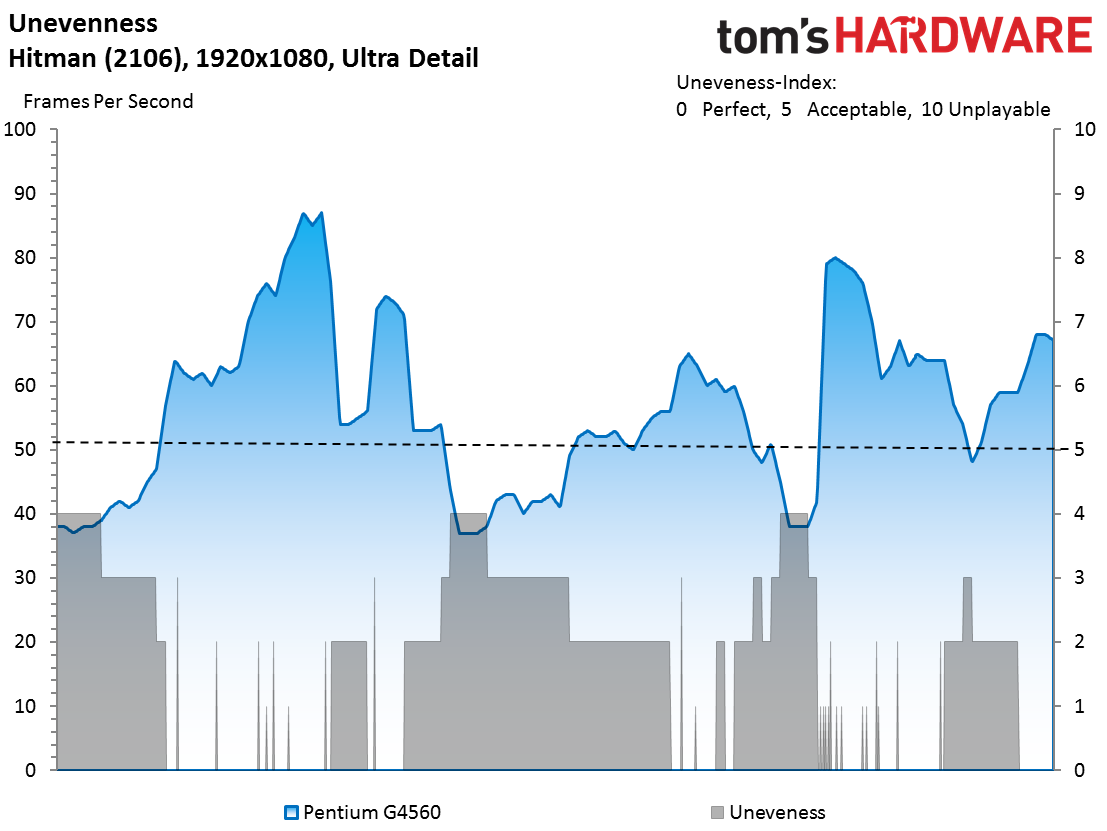
The Hyper-Threaded Pentium G4620 and G4560 demonstrate incredible gains over the old G3258. Although the average FPS advantage is impressive, it's the higher minimum frame rate that has us so impressed. The G3258 also suffers extreme frame time variance during the test, while the Kaby Lake Pentiums compete with the pricier Core i3s.
The G4620 provides higher average and minimum frame rates than the G4560, but once again the unevenness index shows that there is little differentiation from a smoothness perspective.
Grand Theft Auto V
The quad-core CPUs bunch together during the opening sequence of our benchmark, but separate into a clearly-defined hierarchy as the workload becomes more processor-bound.
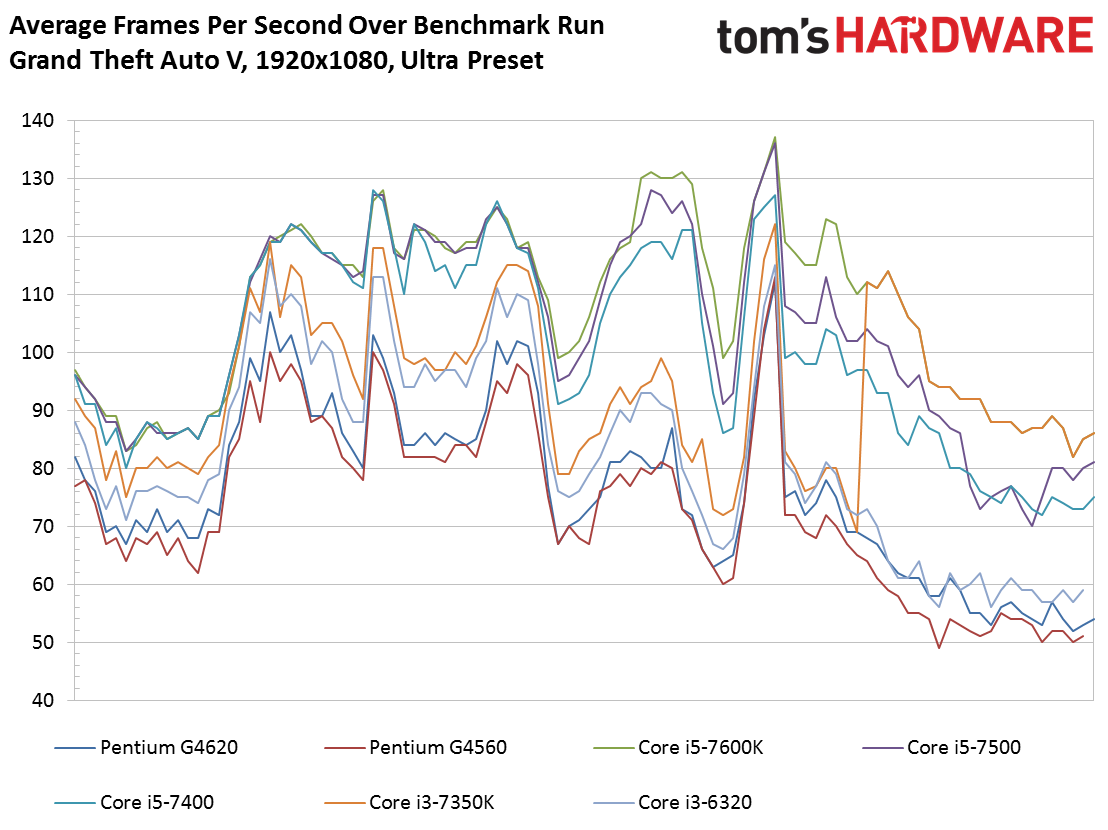
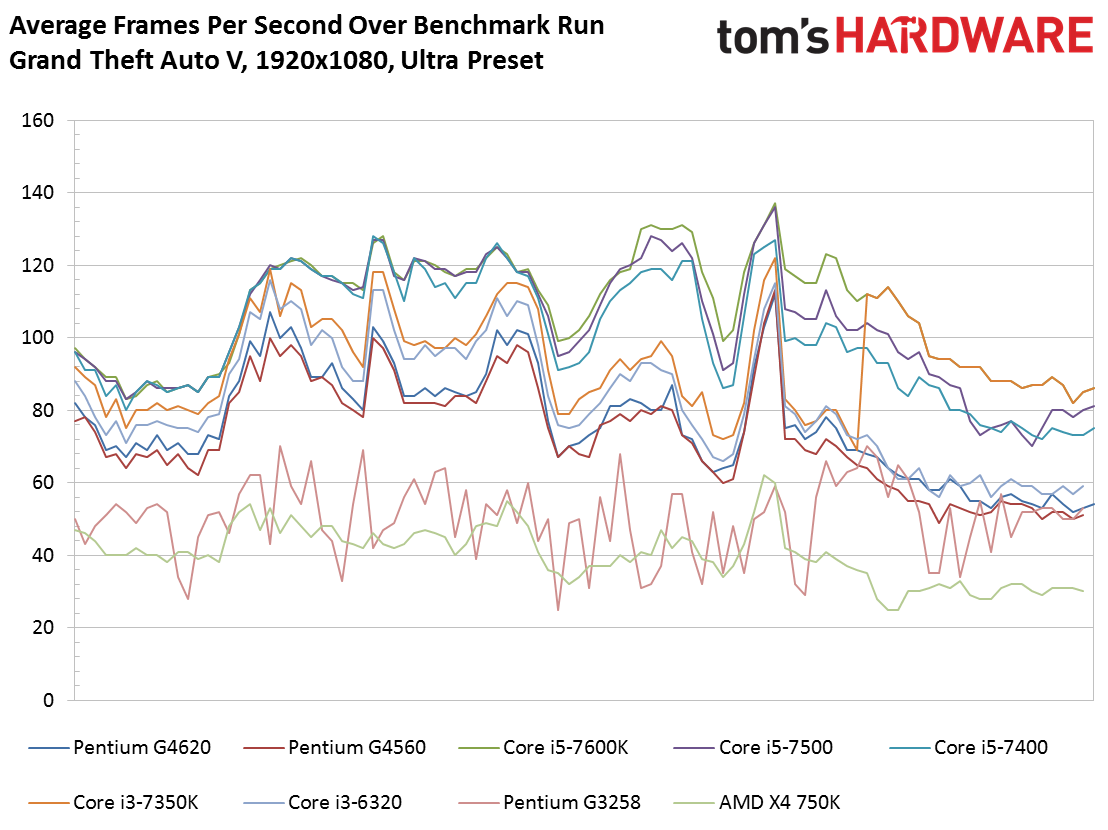
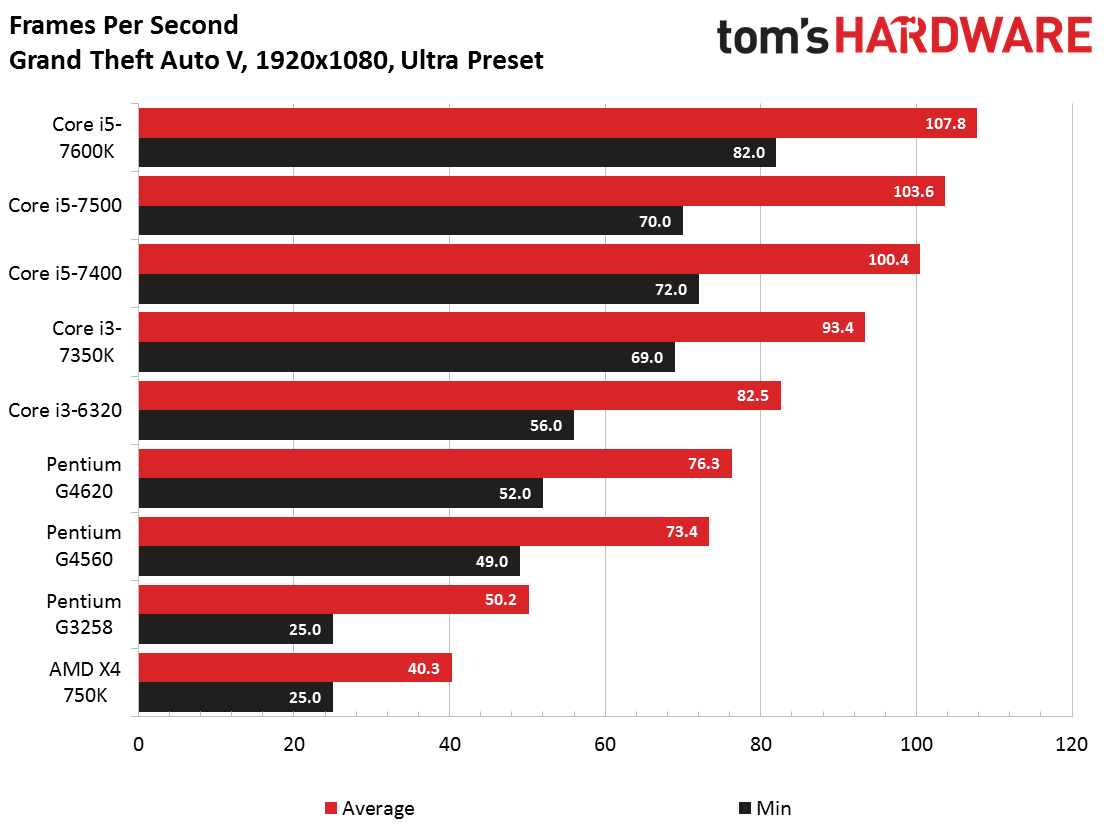
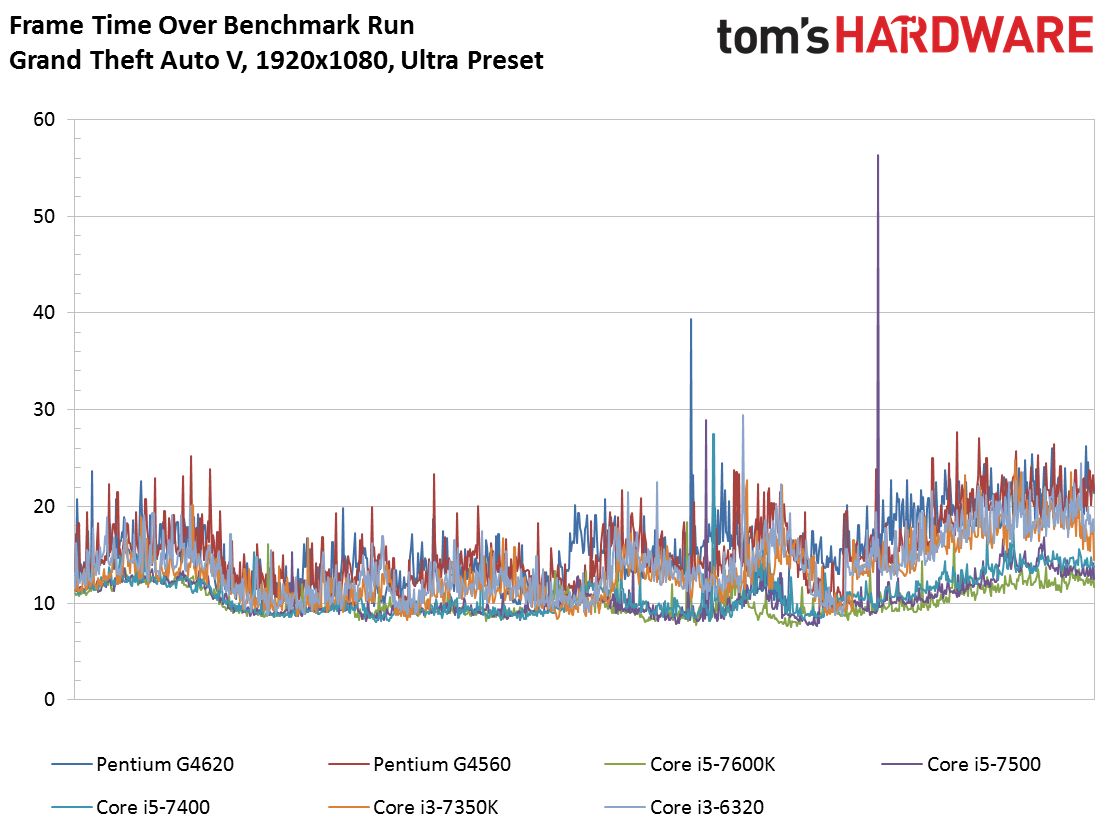
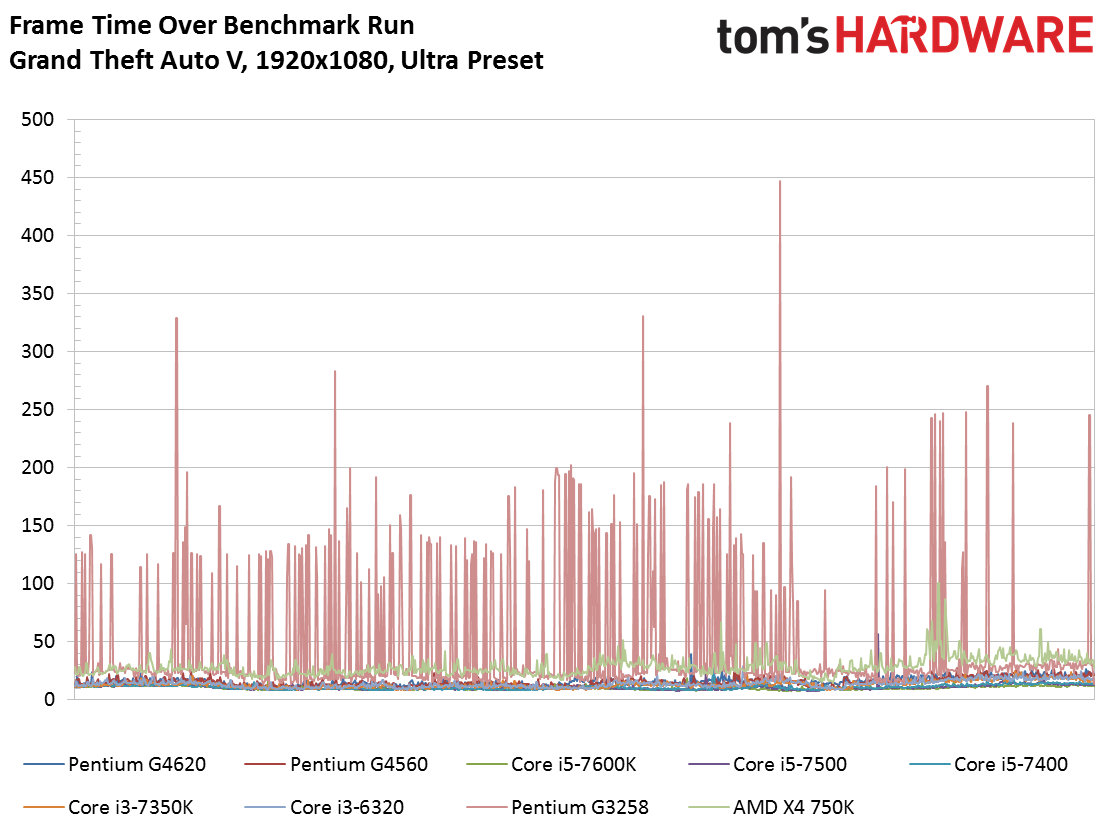

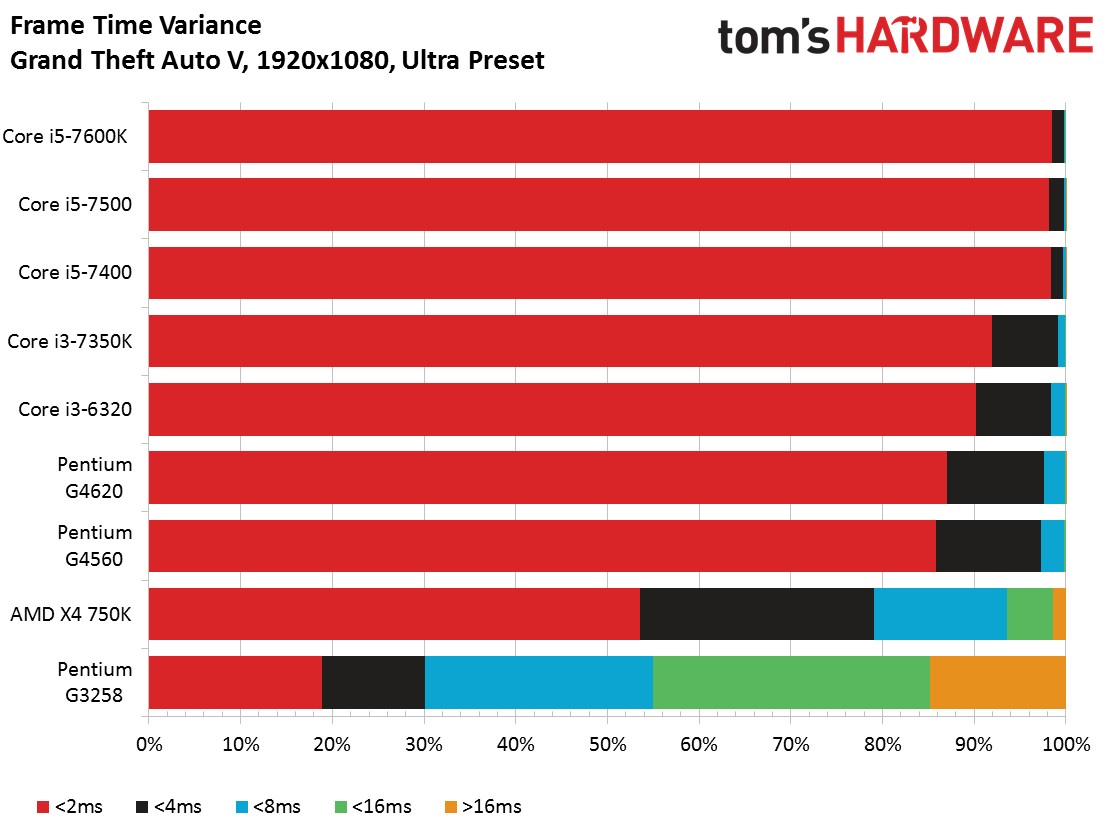
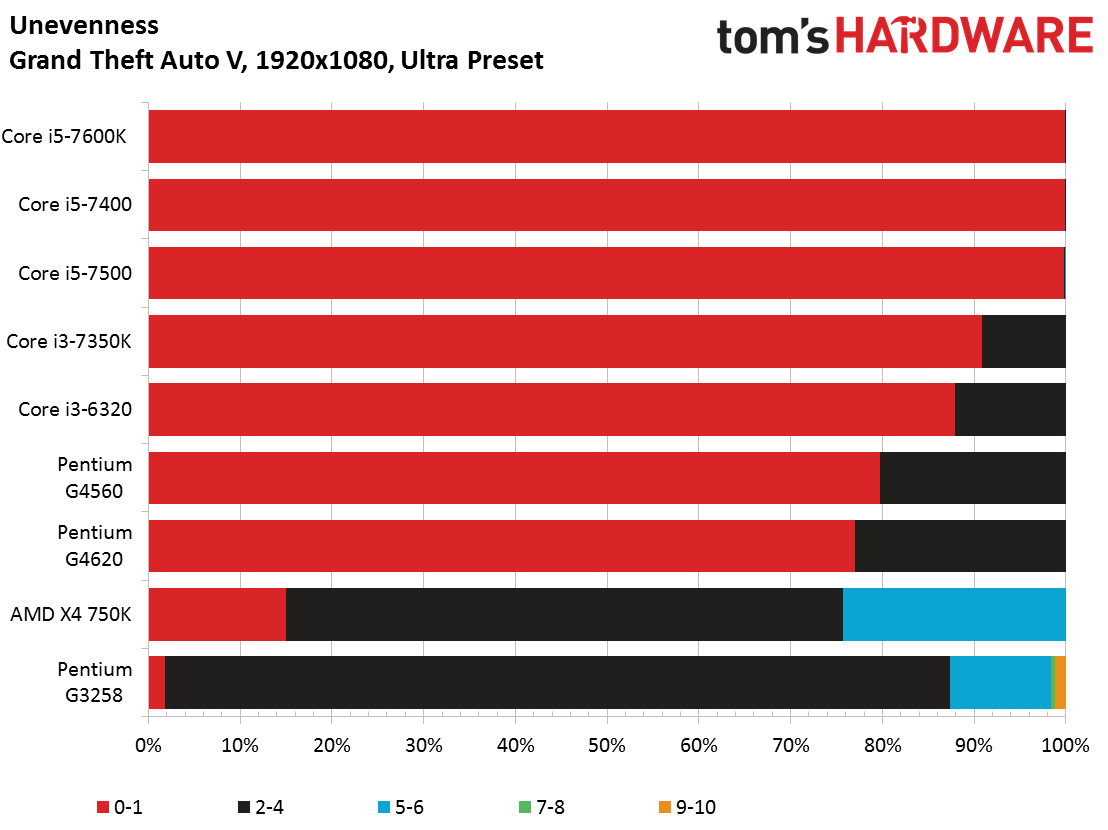
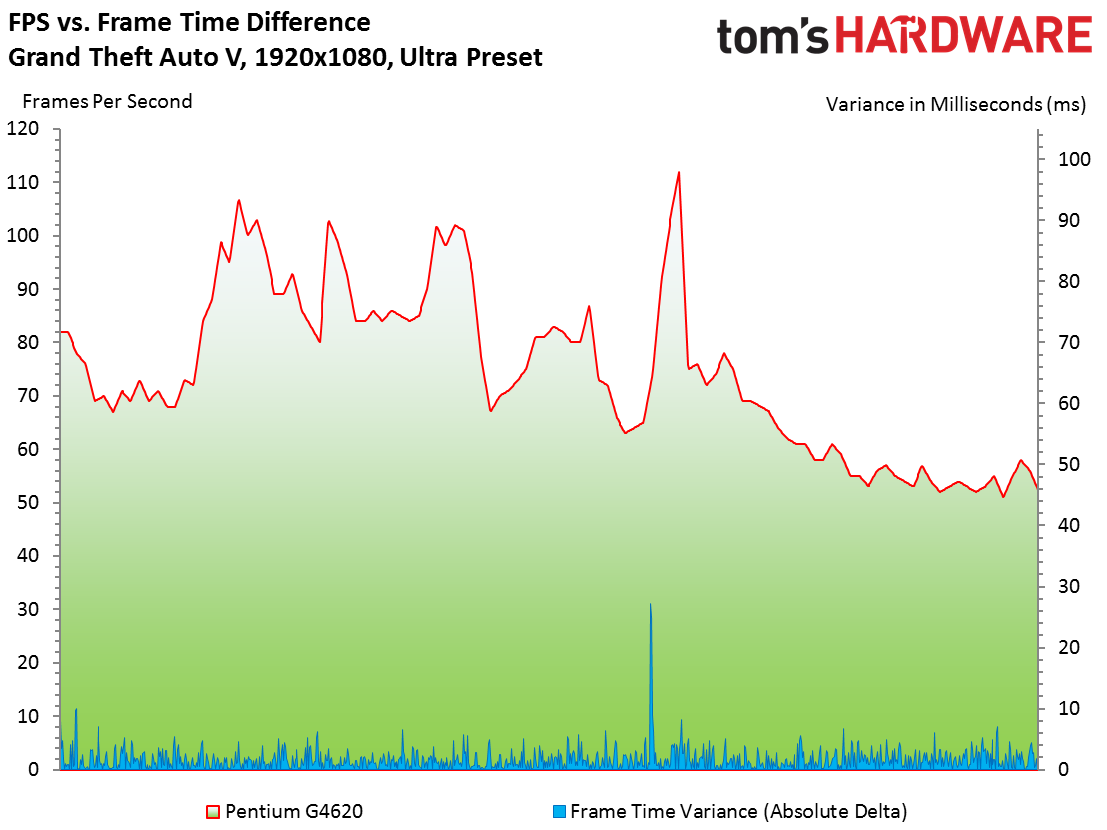
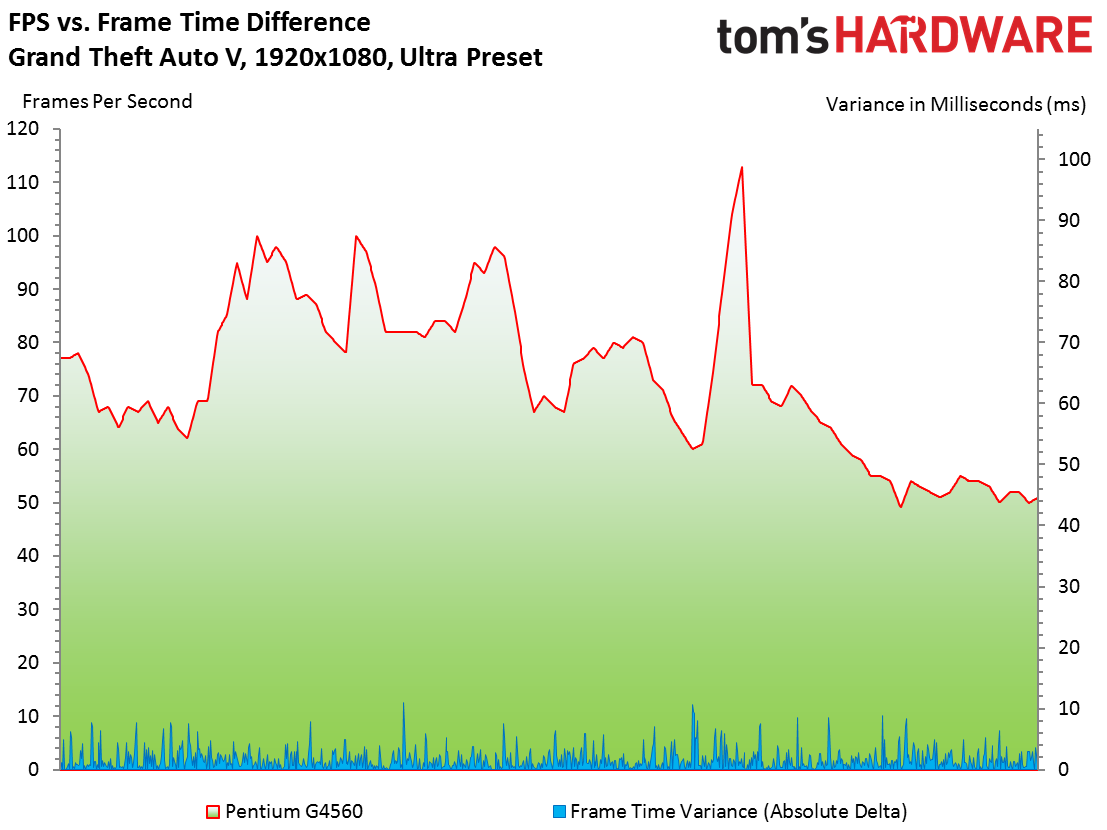
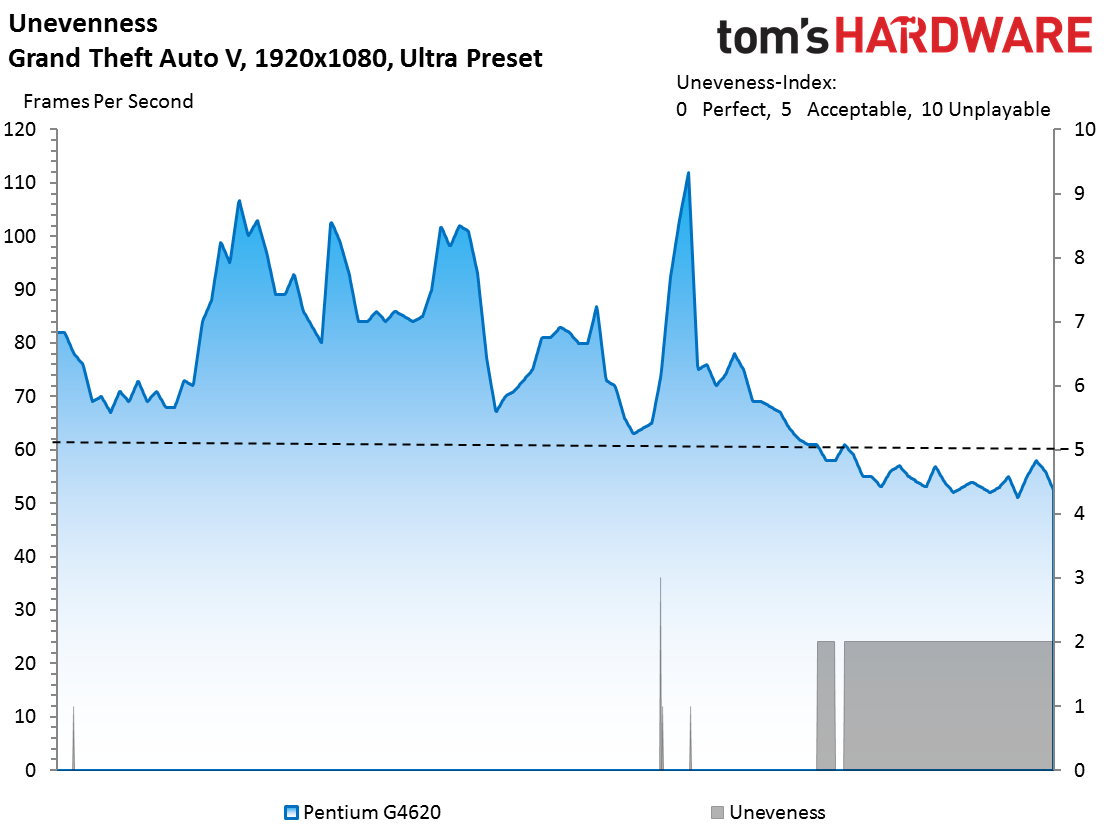
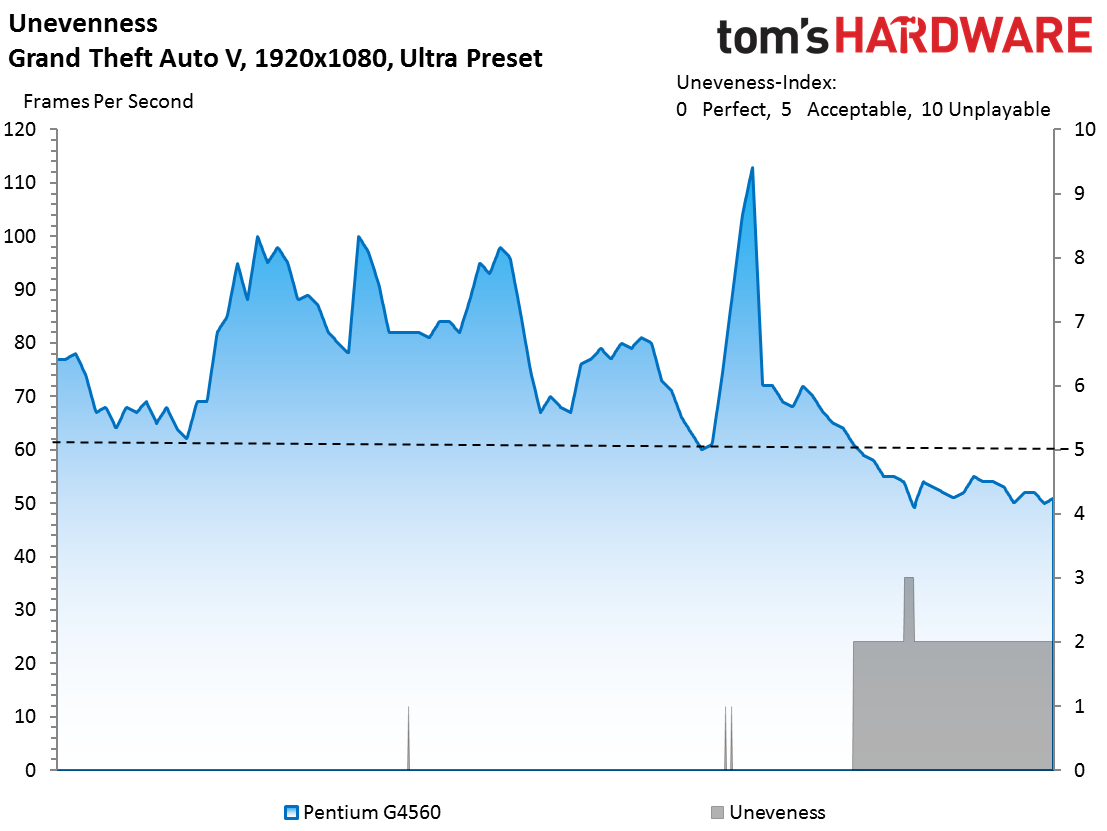
The Pentium G4620 pulls ahead of the G4560, but it's hard to say a 3.9% lead in average frame rate is worth the 31% price difference.
Core i3 and i5 CPUs perform best, but the Pentium G4620 and G4560 enable playable performance. That's a big jump over the woeful Pentium G3258 and Athlon X4 750K.
Project CARS
Slightly Mad Studios designed the Project CARS game engine specifically to promote parallelism by breaking tasks down into smaller chunks across available resources. The end result is a sophisticated engine that scales well with additional CPU cores and higher clock speeds. The developer recommends a minimum of a Core 2 Quad Q8400 or AMD Phenom II X4 940, but the G4620 and G4560's additional threads push them into contention with the beefier dual-core chips.
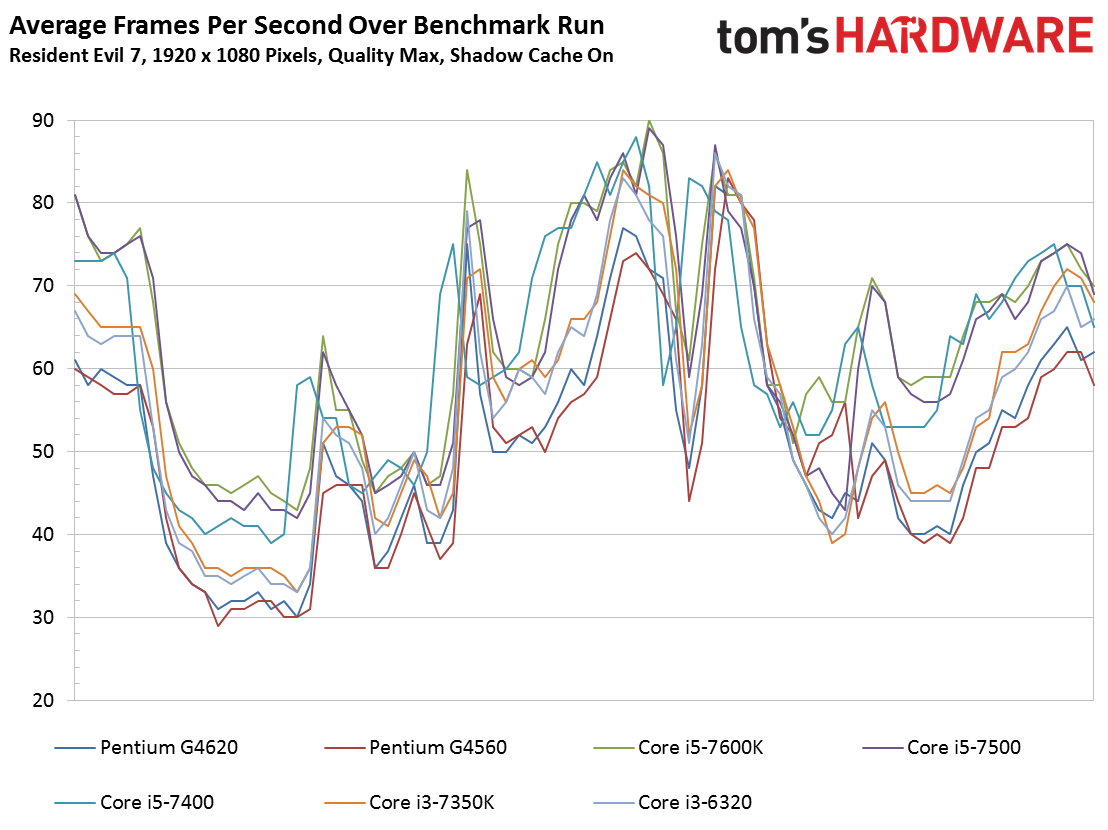
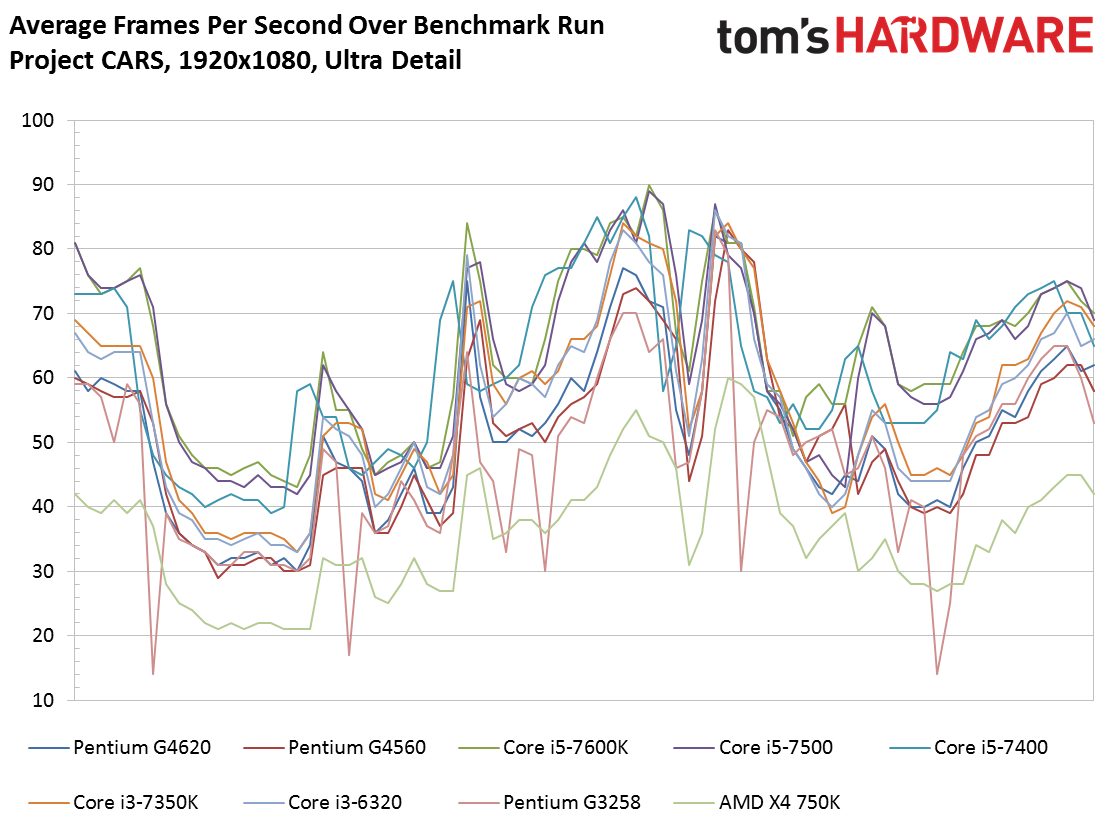
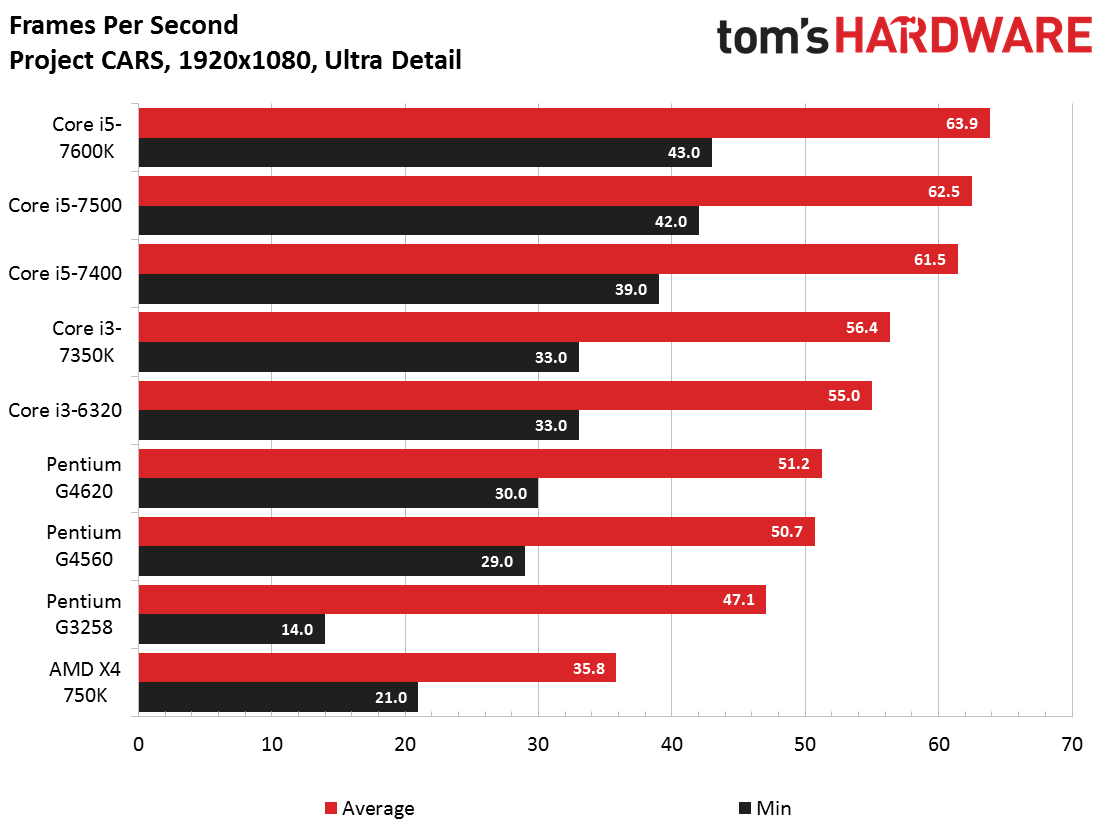
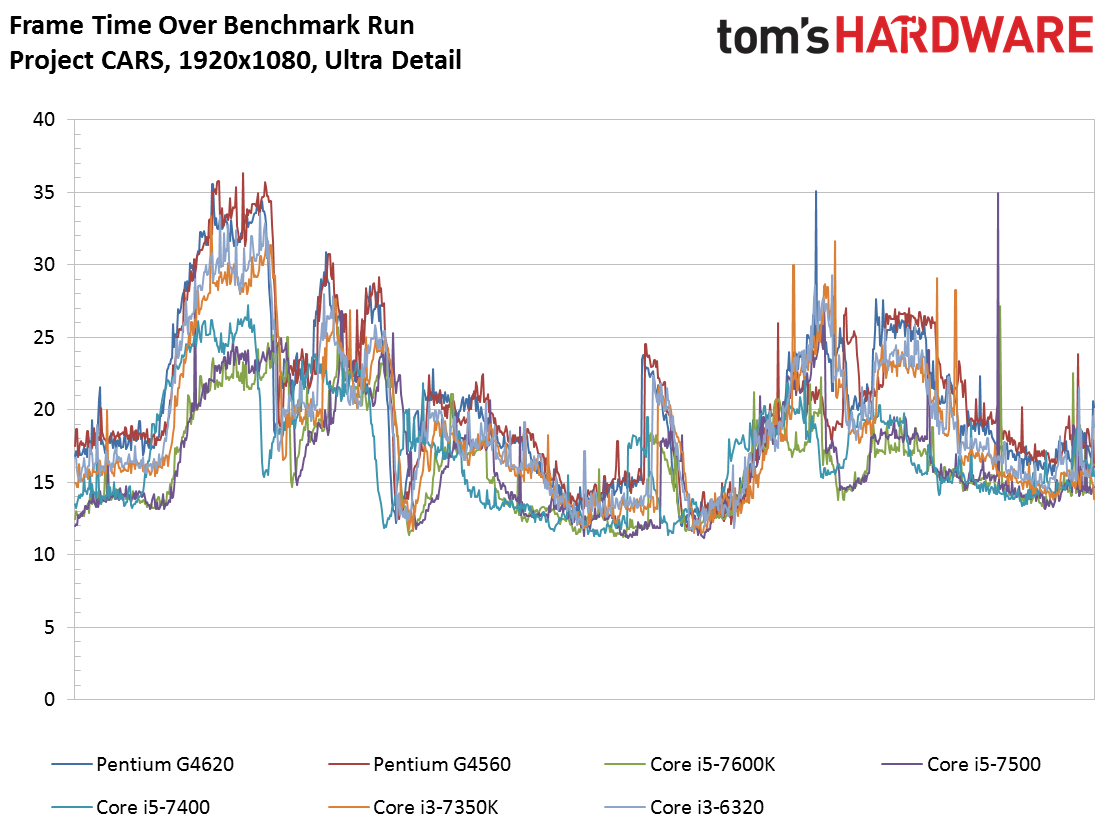
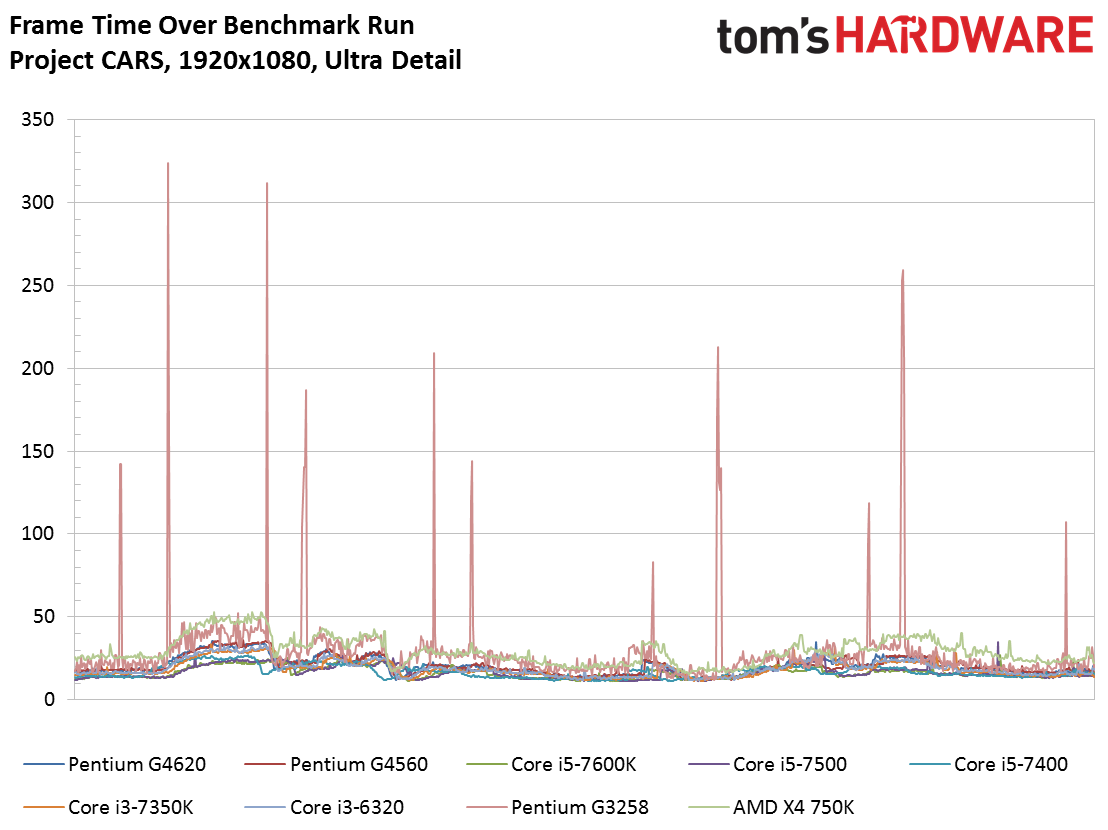
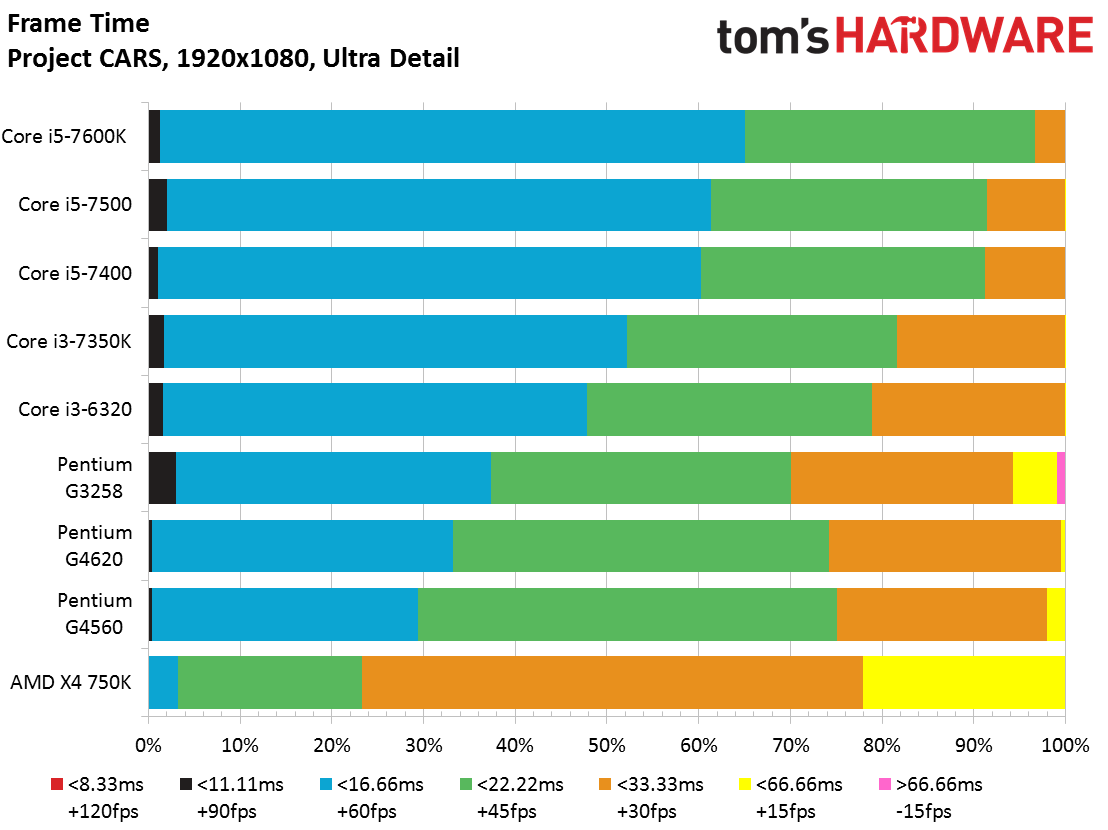
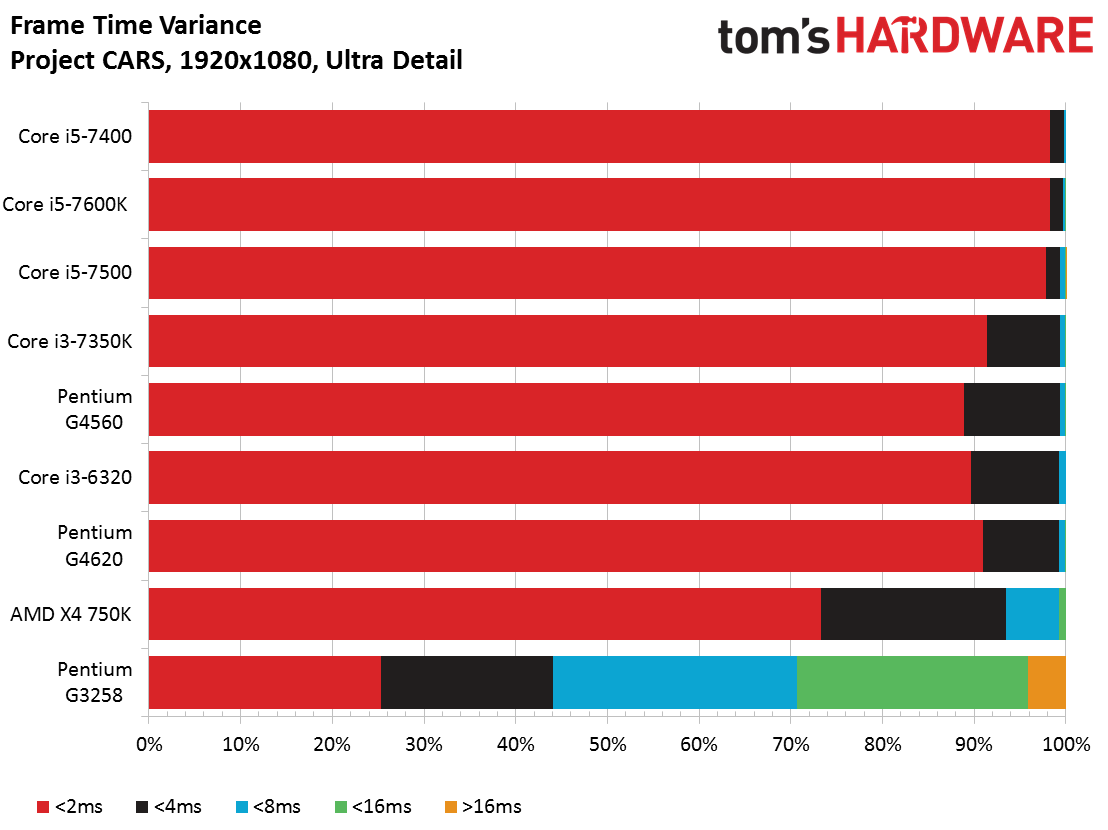
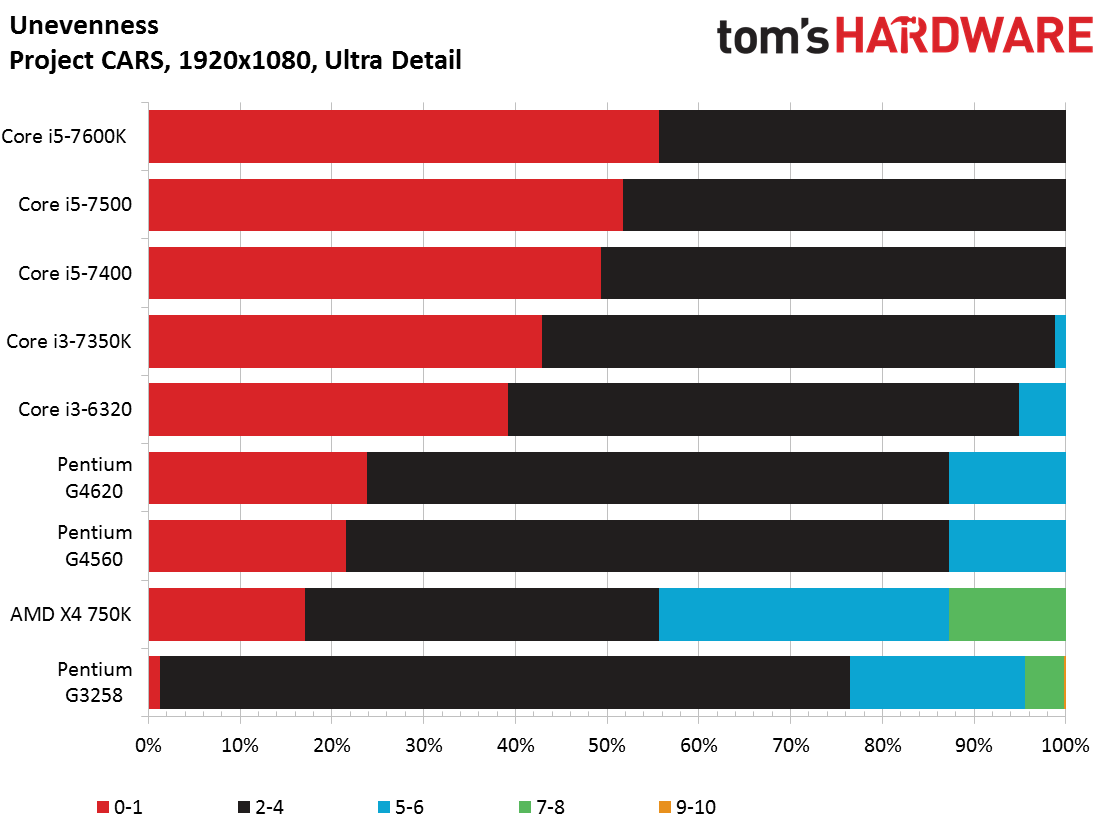
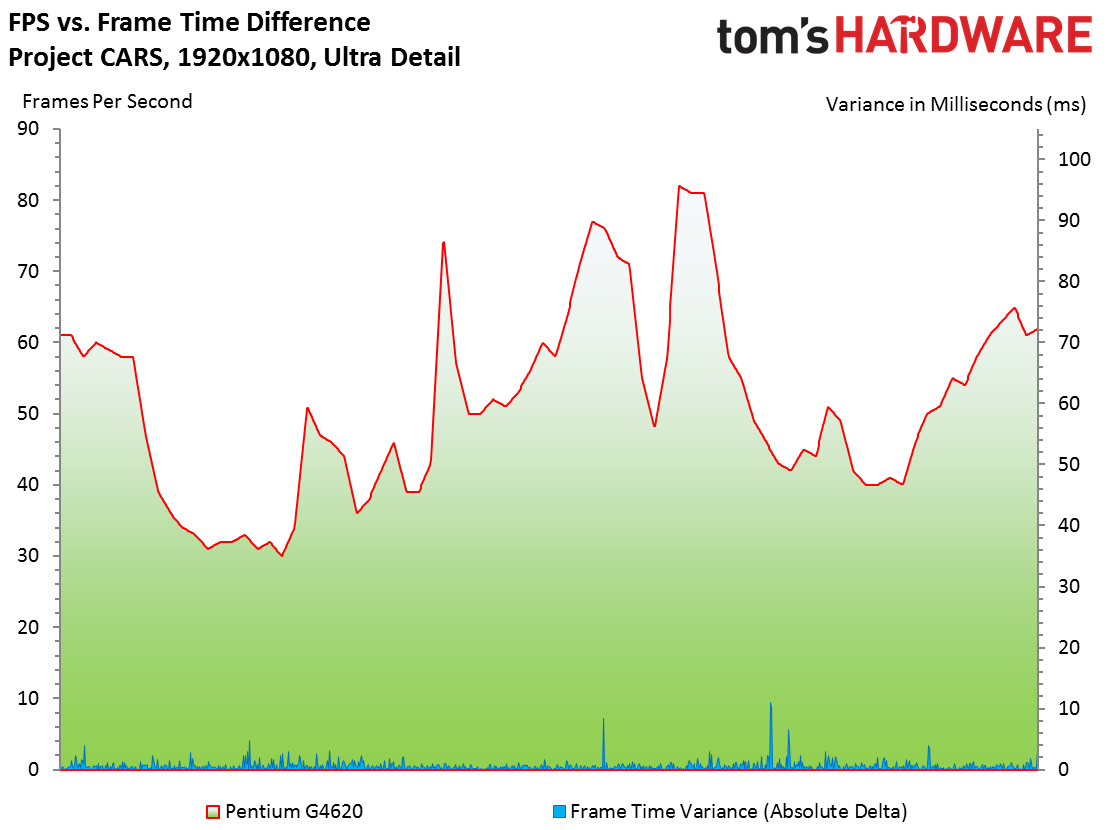
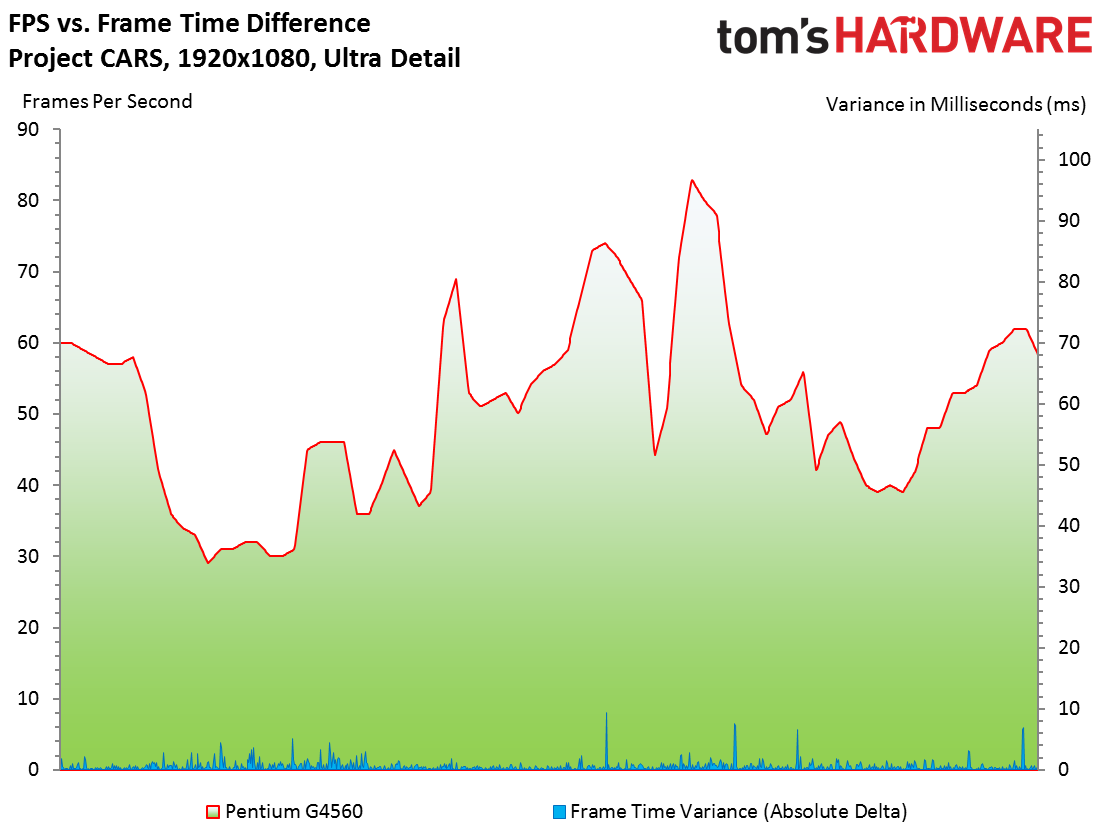
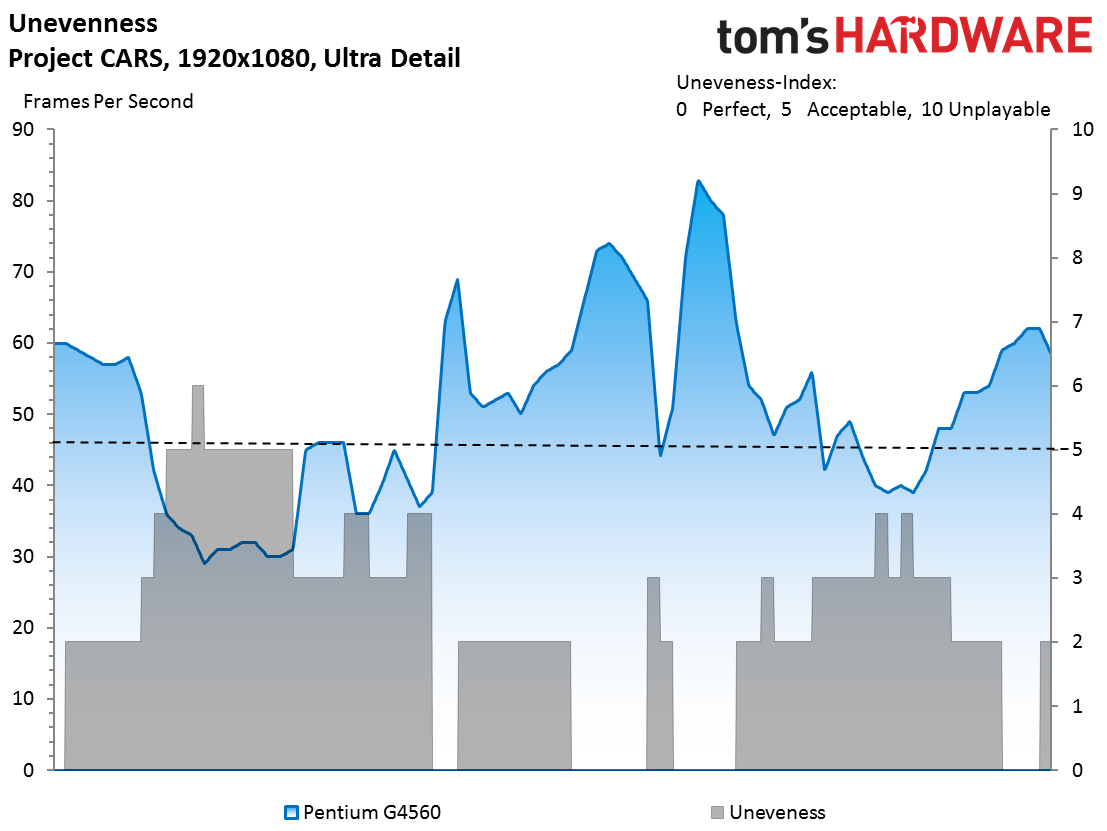
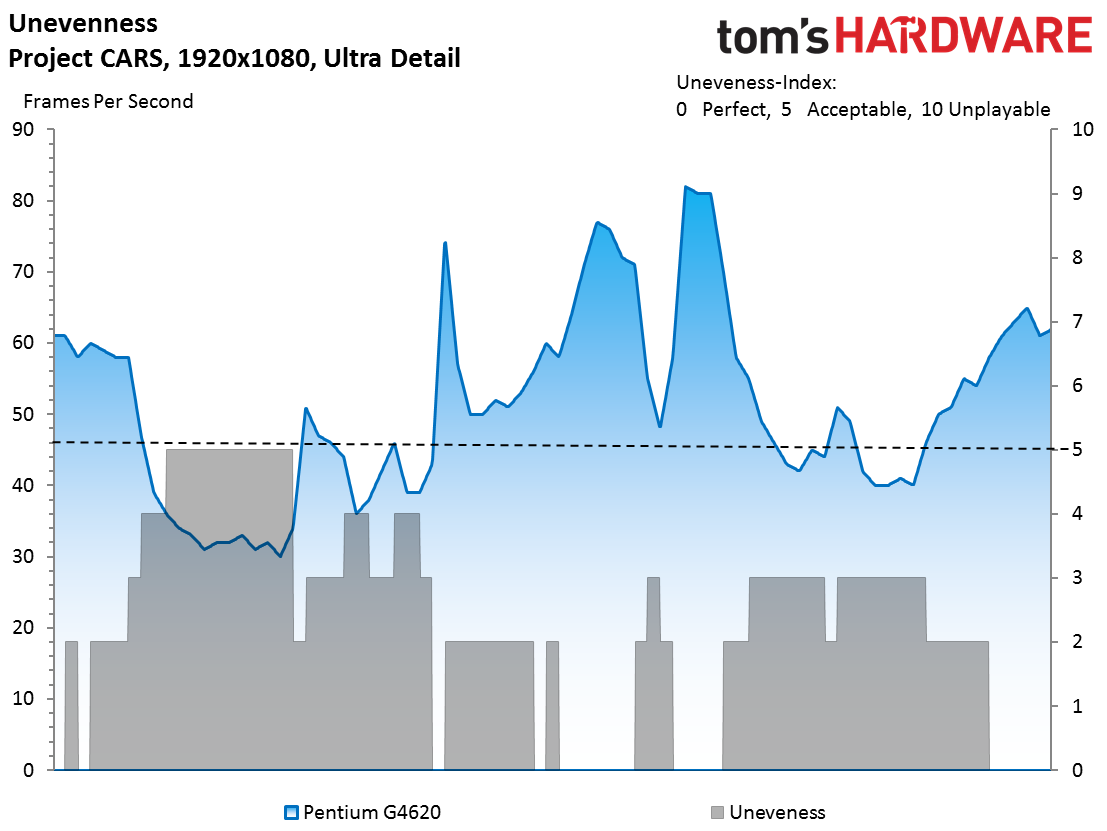
Once again, there is very little difference in the average frame rates achieved by our Kaby Lake Pentiums. But Project CARS does expose one of the most pronounced deltas between the two processors in our unevenness test results.
Although the Core i3 series provides a tangible advantage over the Pentiums, Intel's Core i3-7350K has the least attractive value proposition of the test pool. Yes, you can overclock the -7350K for additional performance, but what you have to spend on a heat sink and higher-end motherboard to leverage the chip's unlocked multiplier is prohibitive.
Metro: Last Light Redux
The Pentium G4620 barely slips past Intel's Core i3-7350K, but this game is obviously graphics-bound with modern processors.
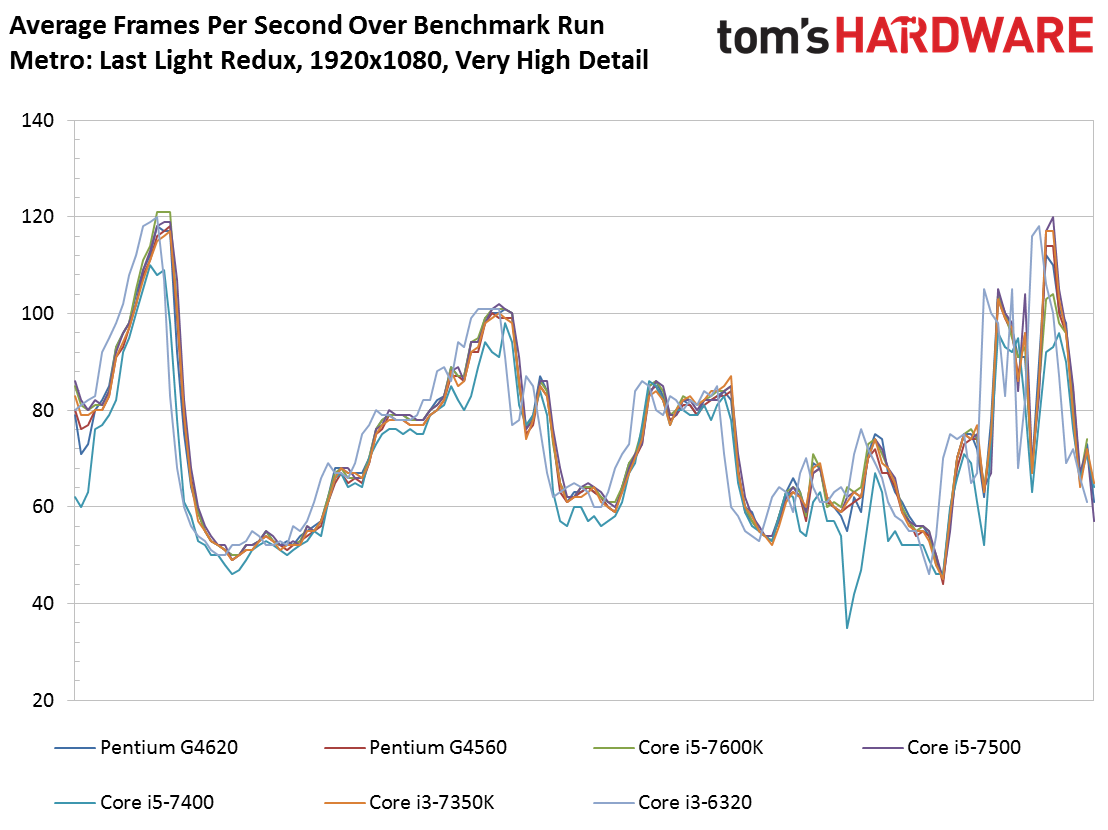
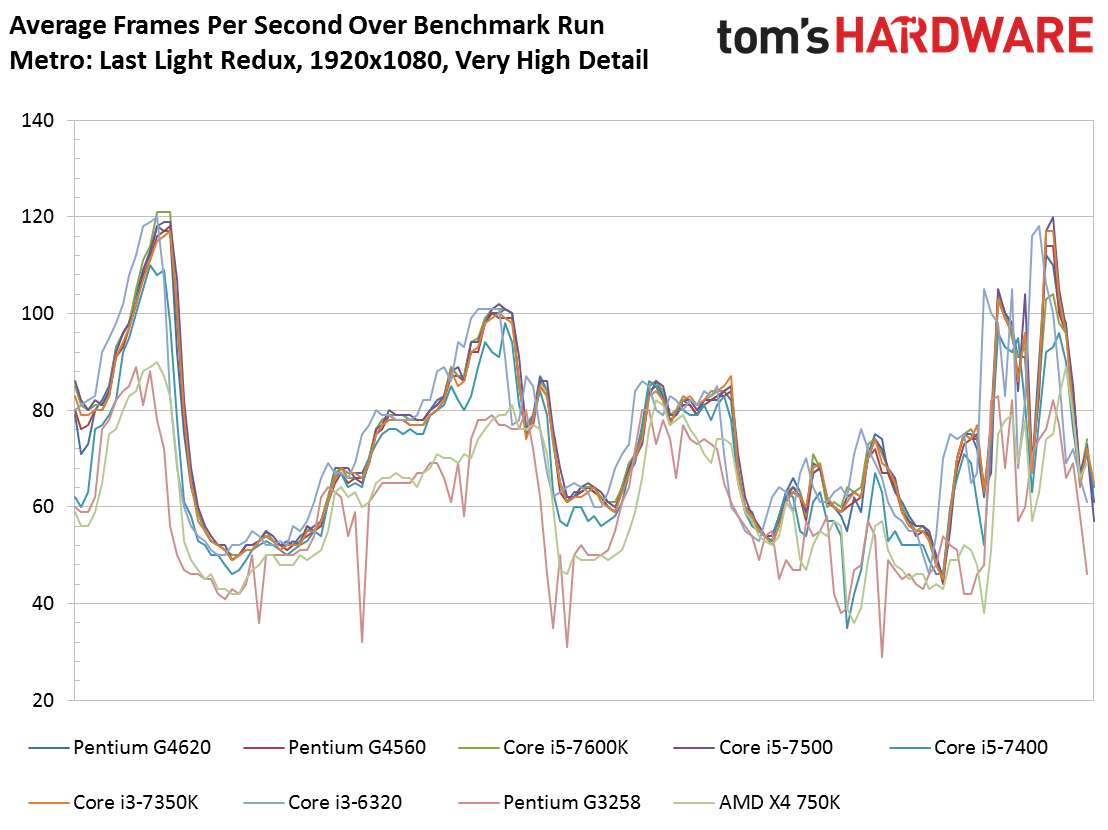
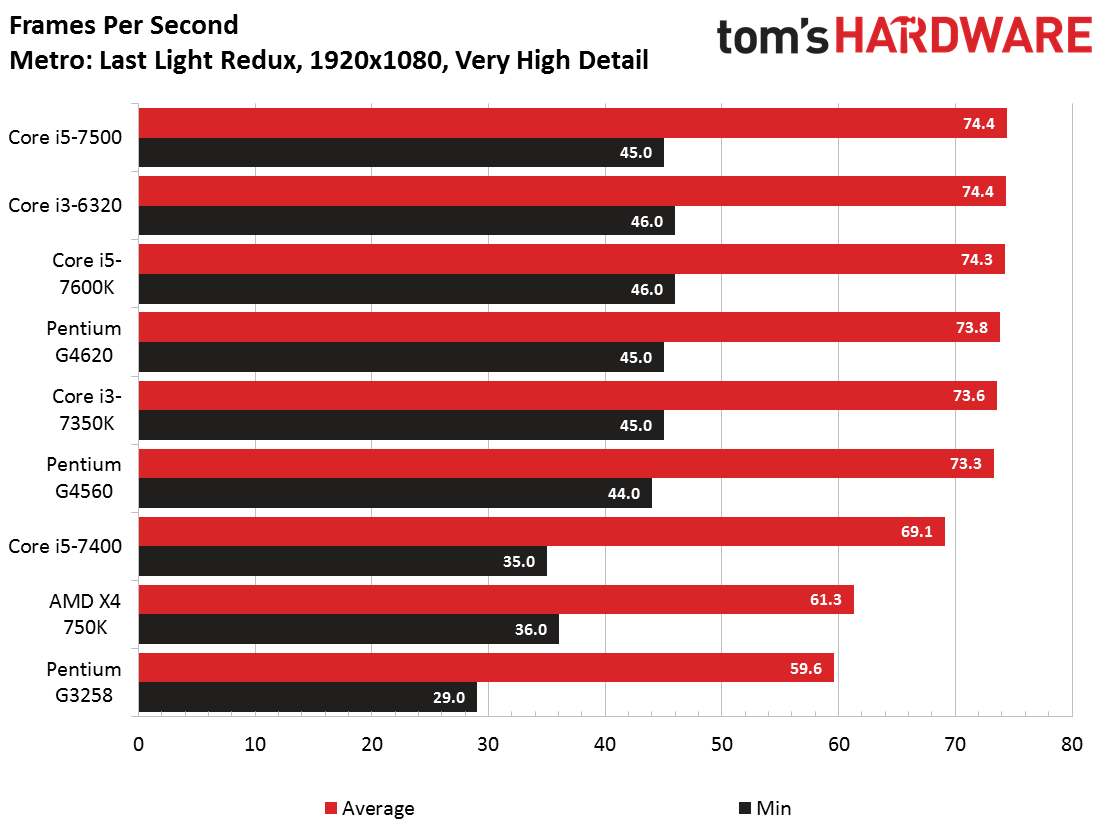
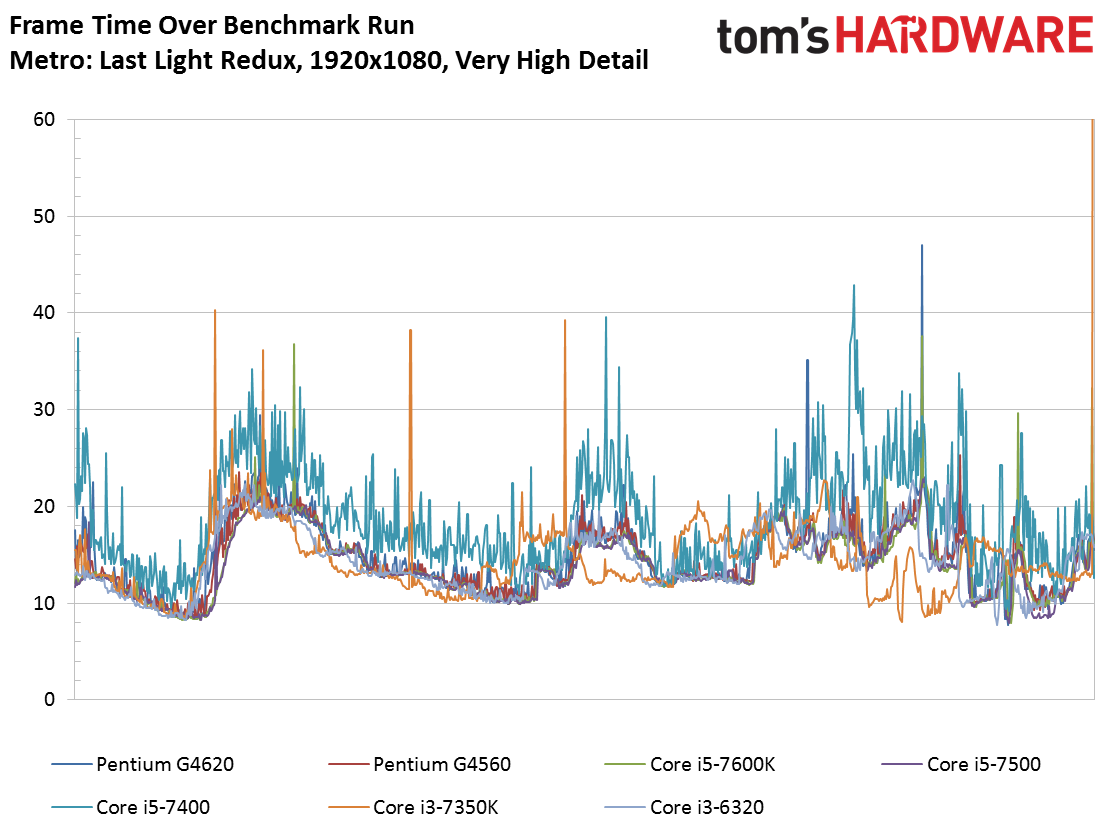
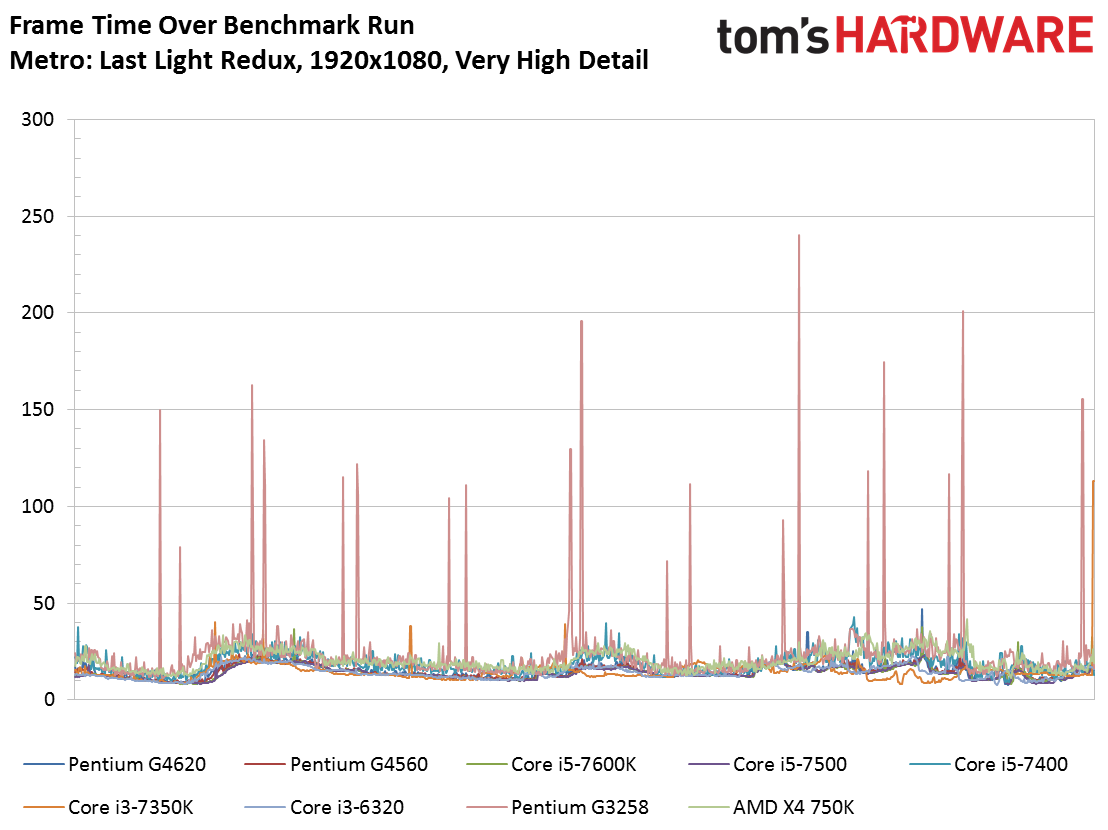
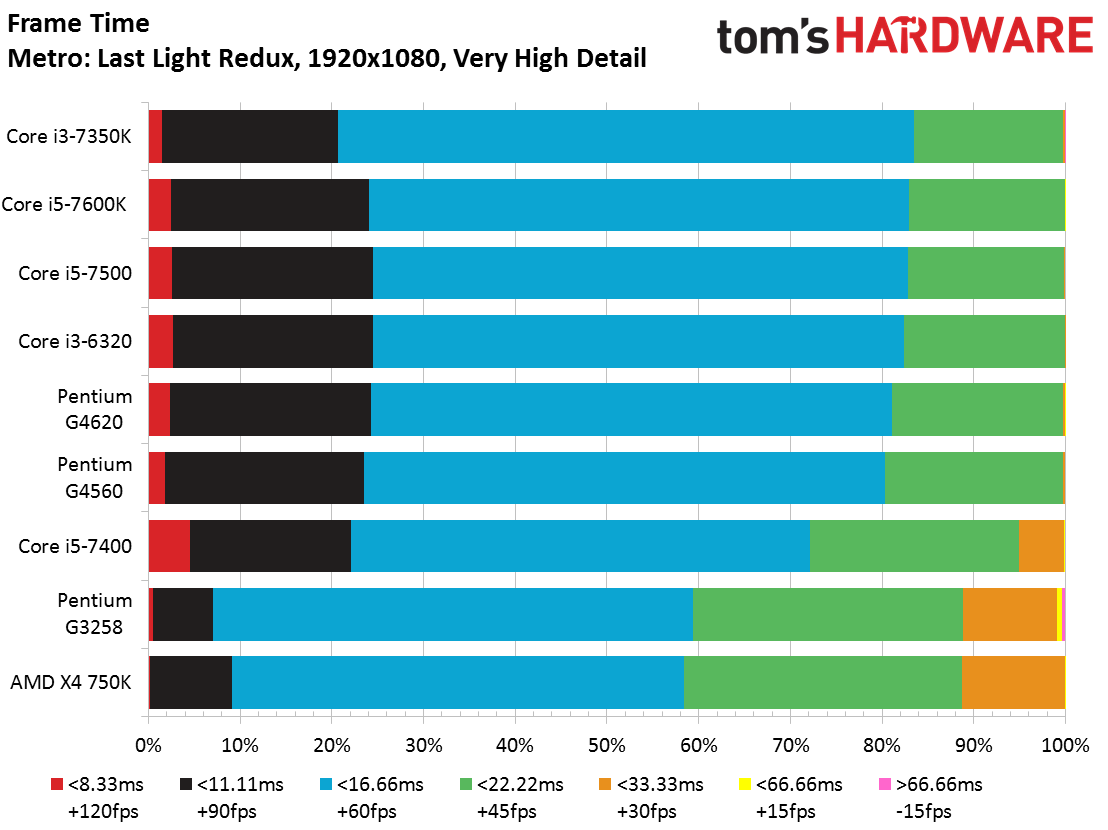
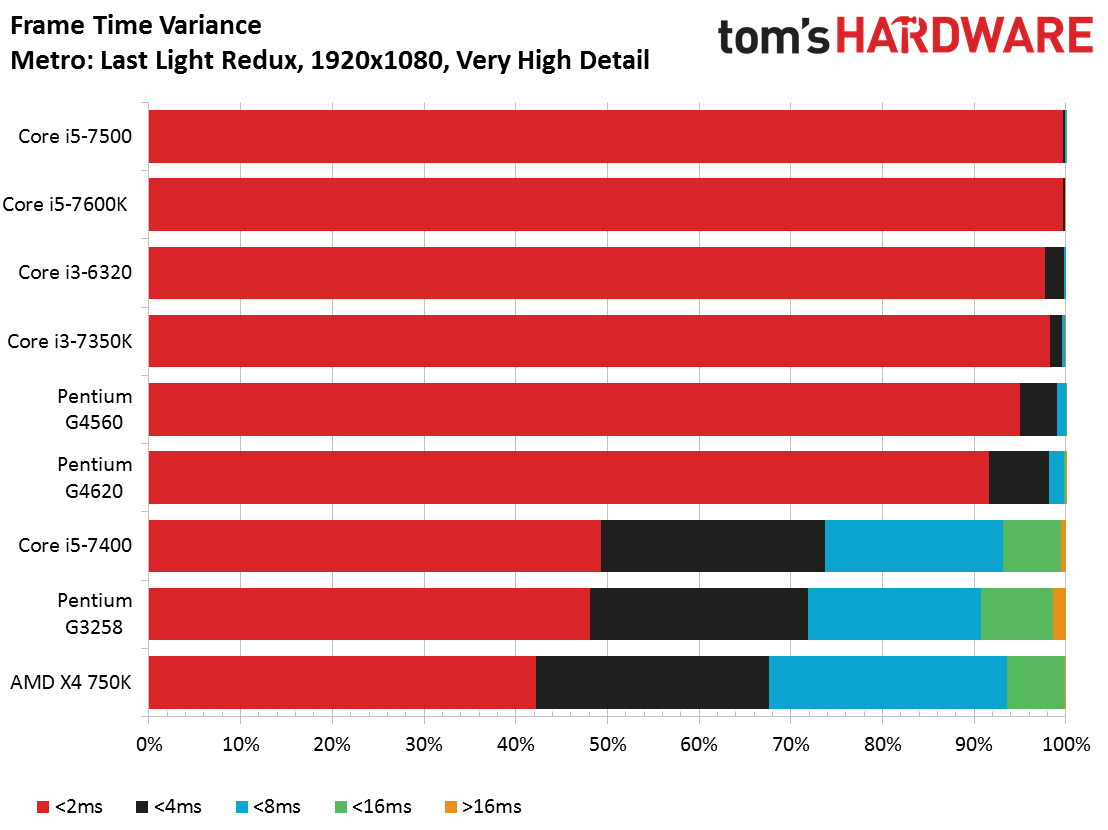
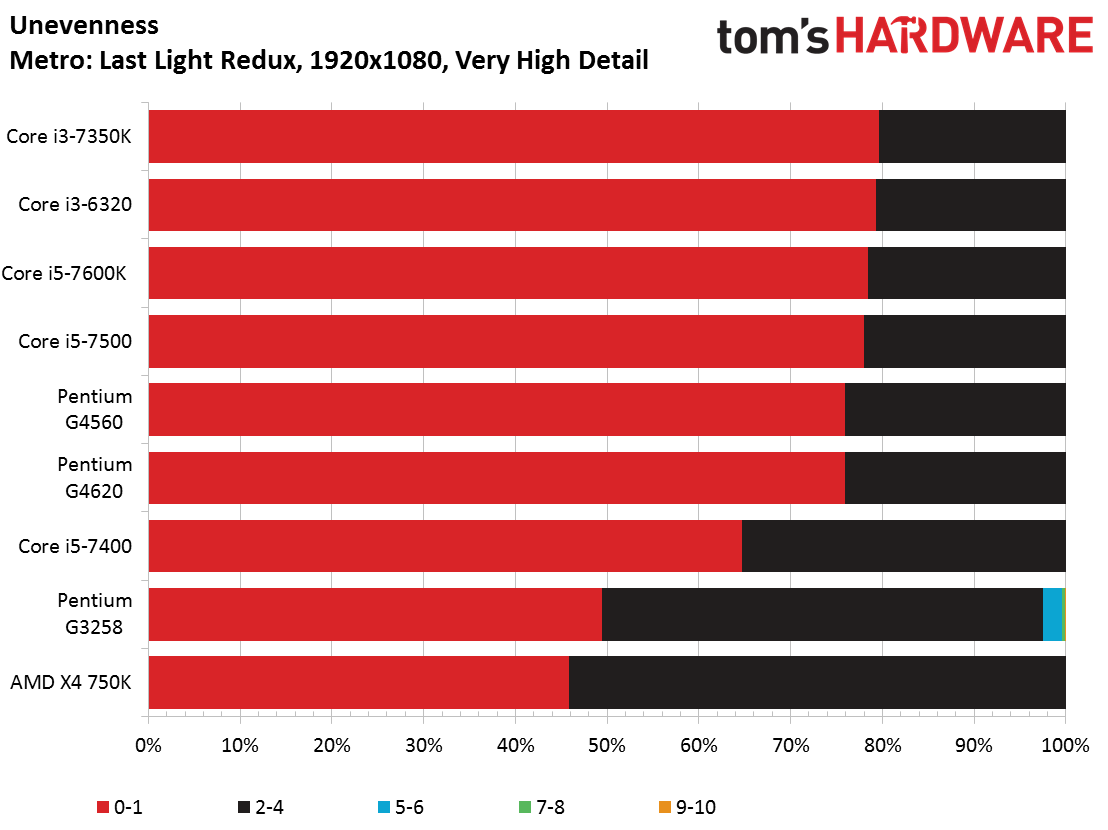
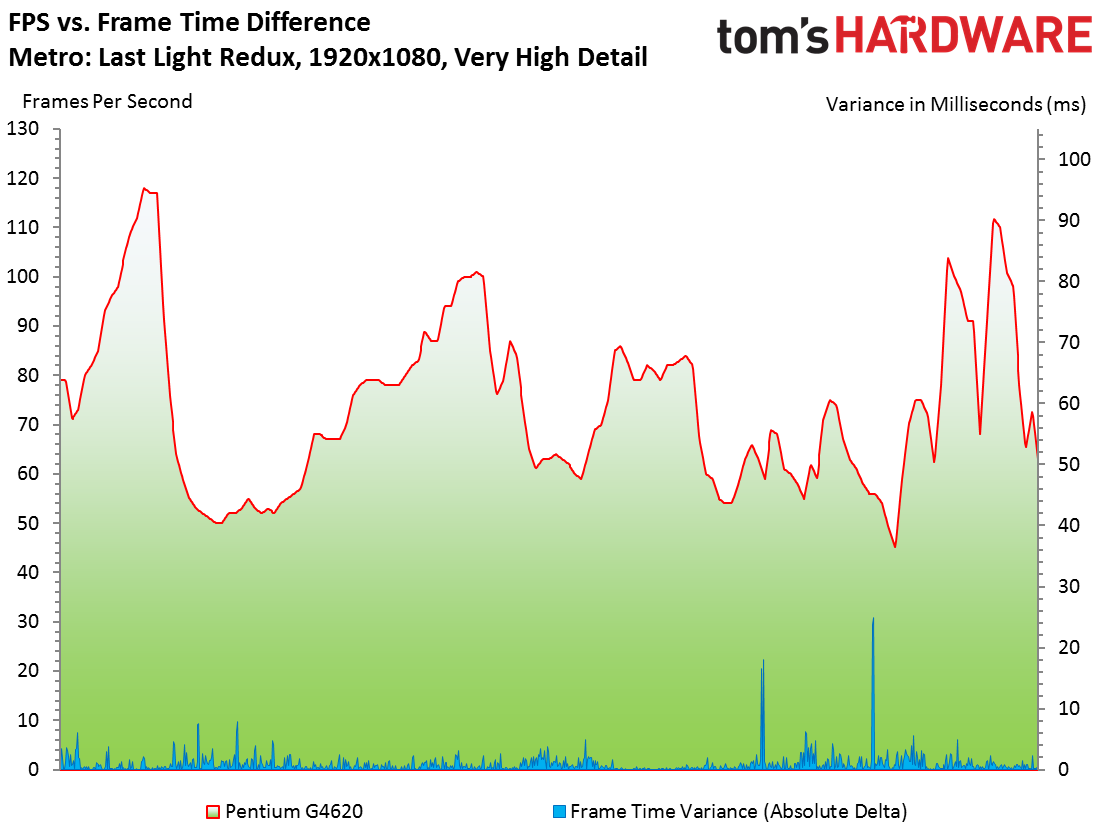
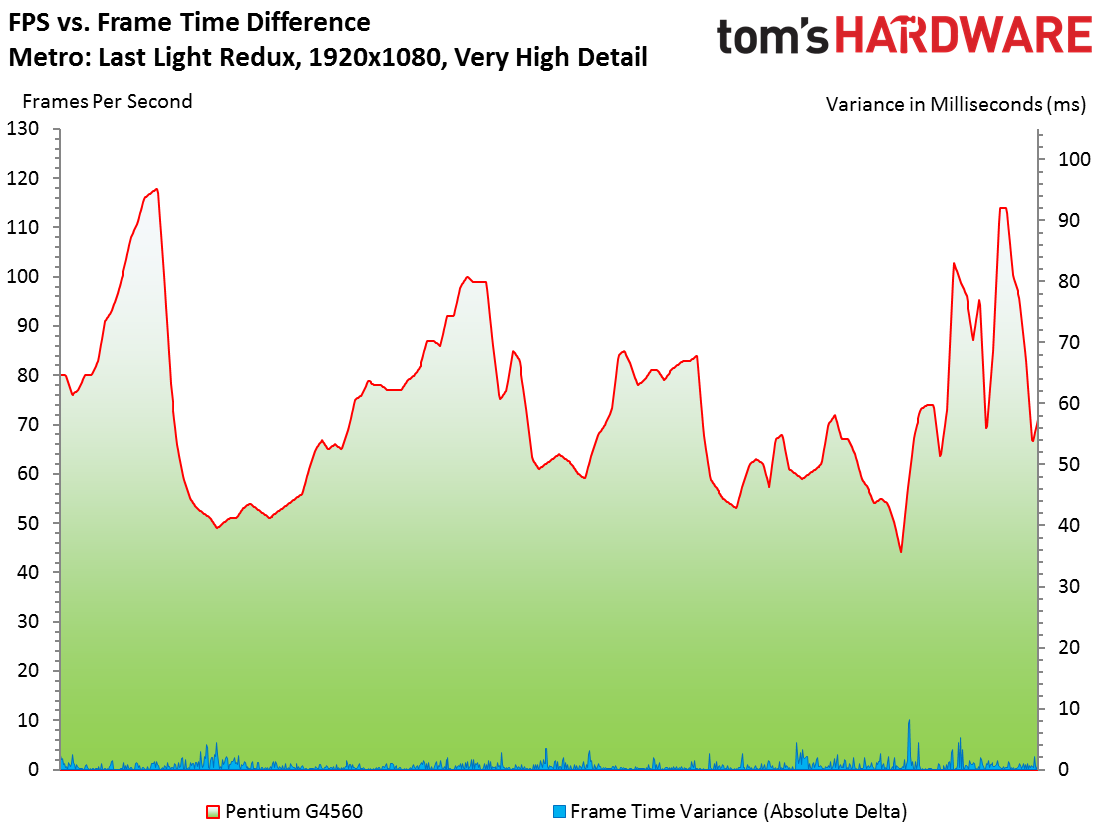
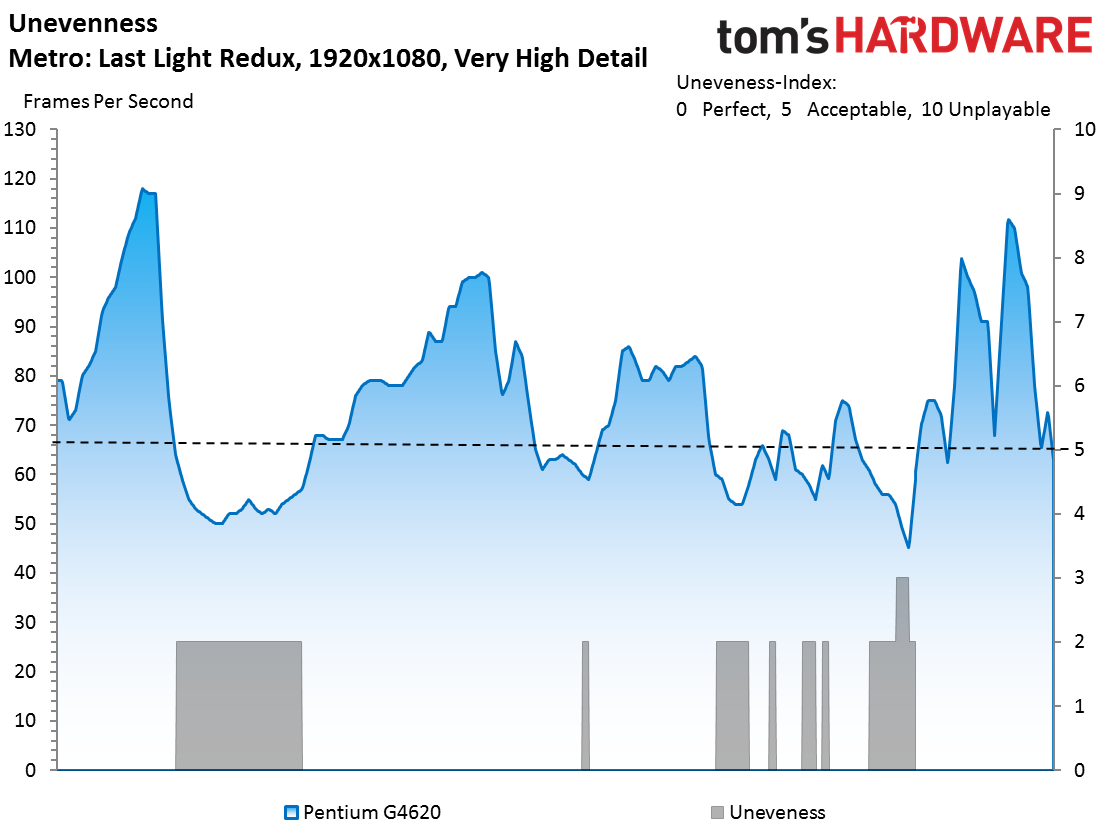
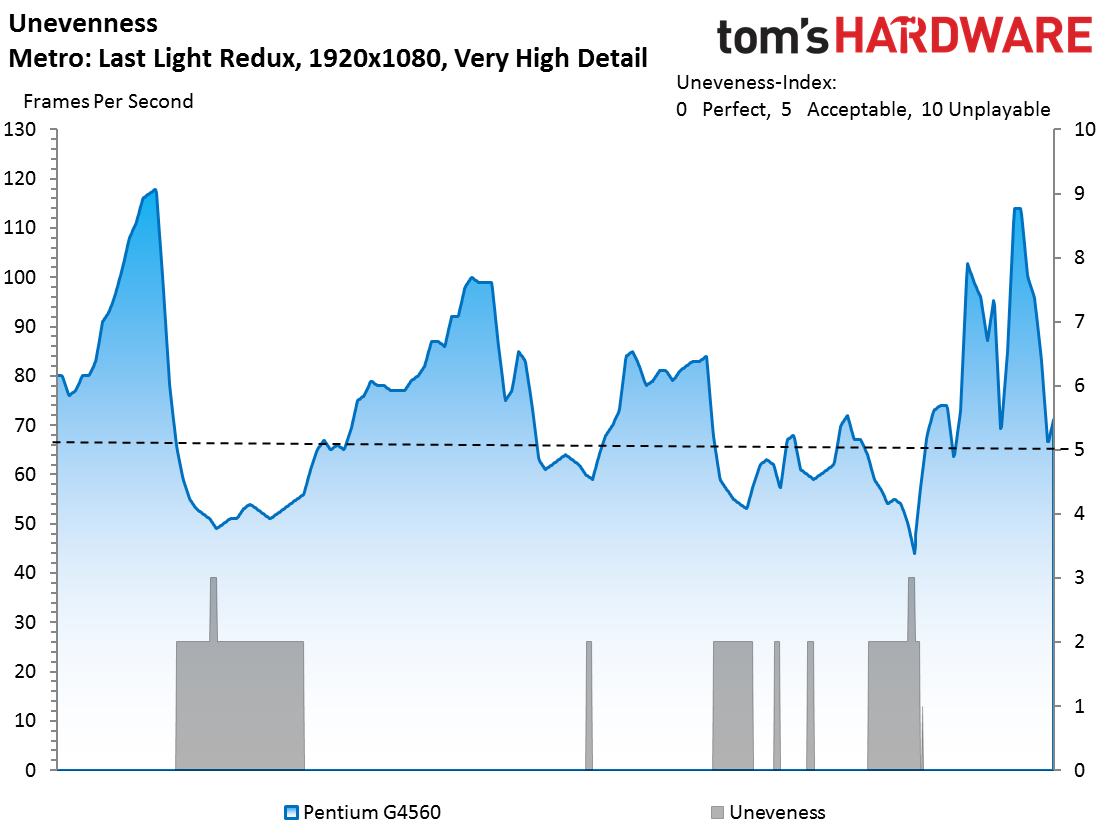
Metro: Last Light Redux lists a 2.2+ GHz dual-core CPU as its minimum requirement, so our entire test pool technical qualifies. But the Athlon X4 750K and Pentium G3258 continue to lag the field due to their aging architectures.
Middle-earth: Shadow of Mordor
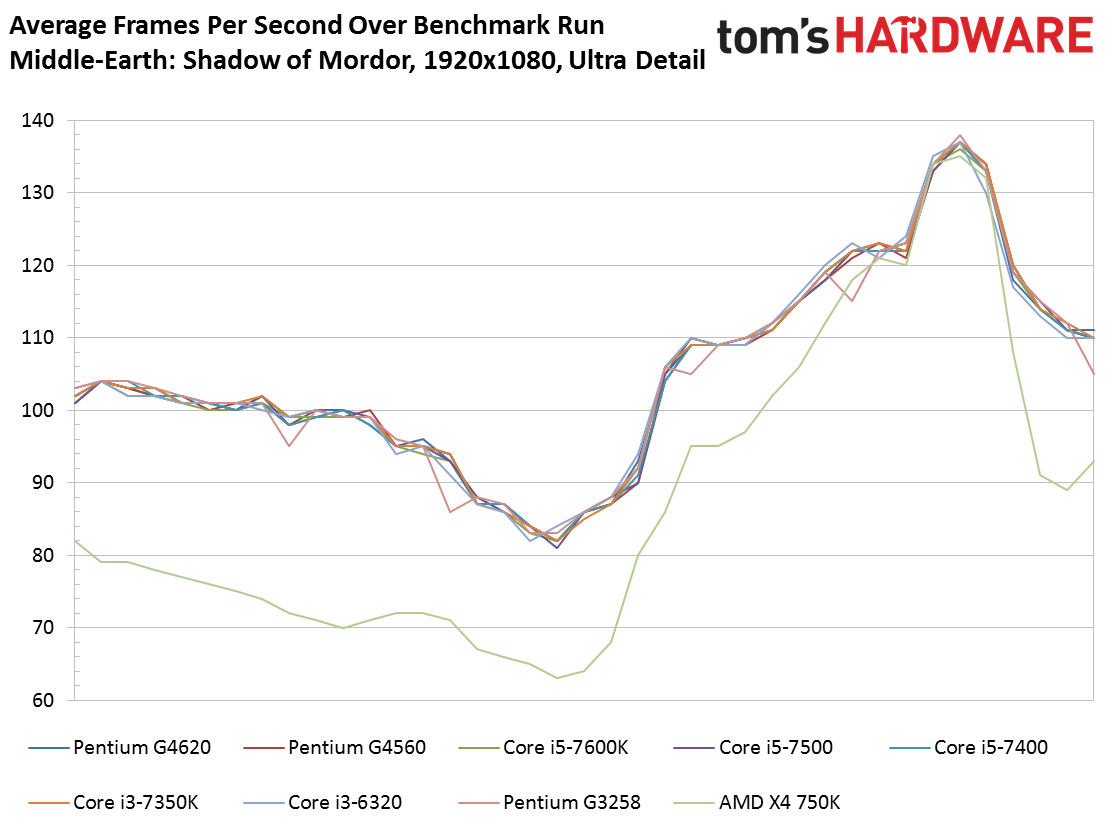
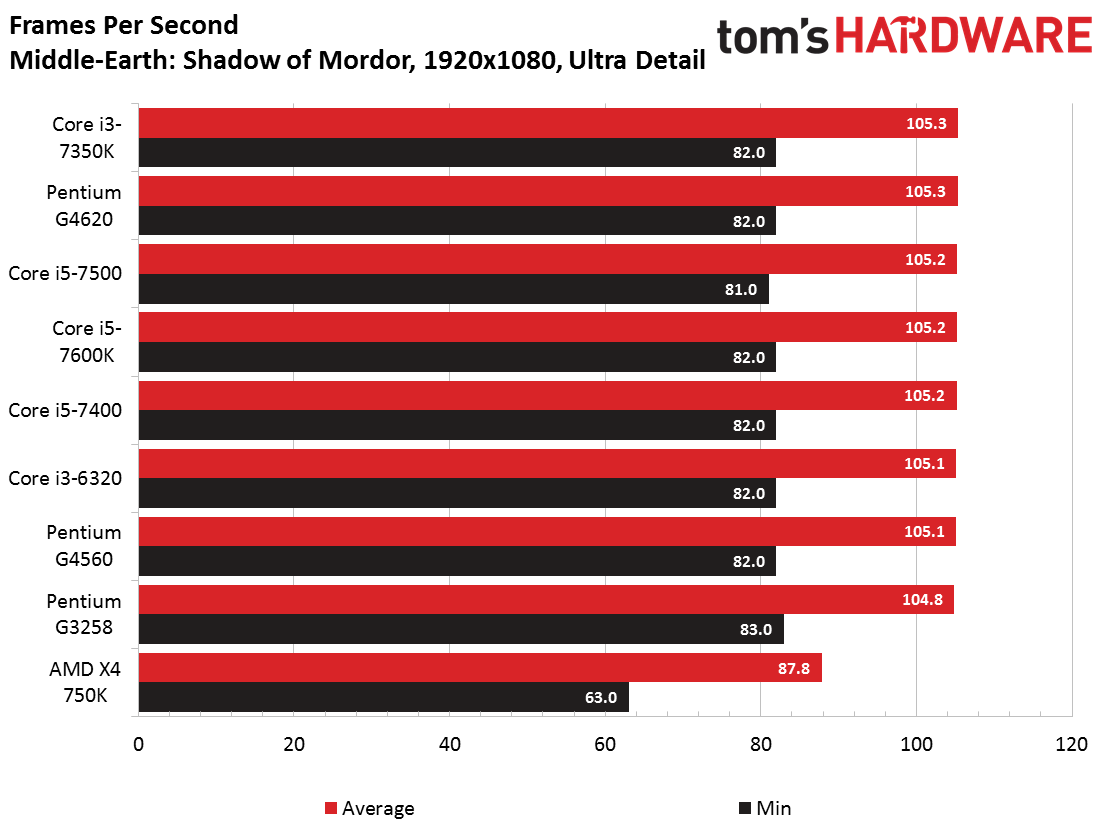
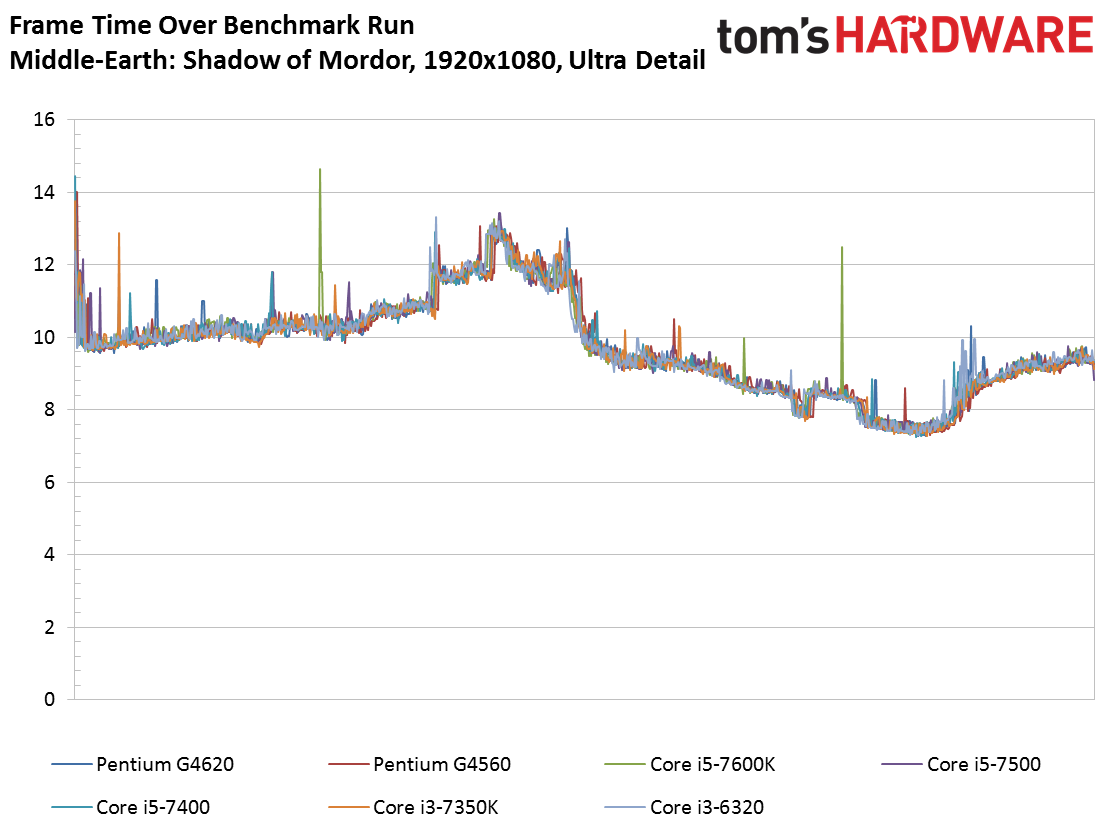
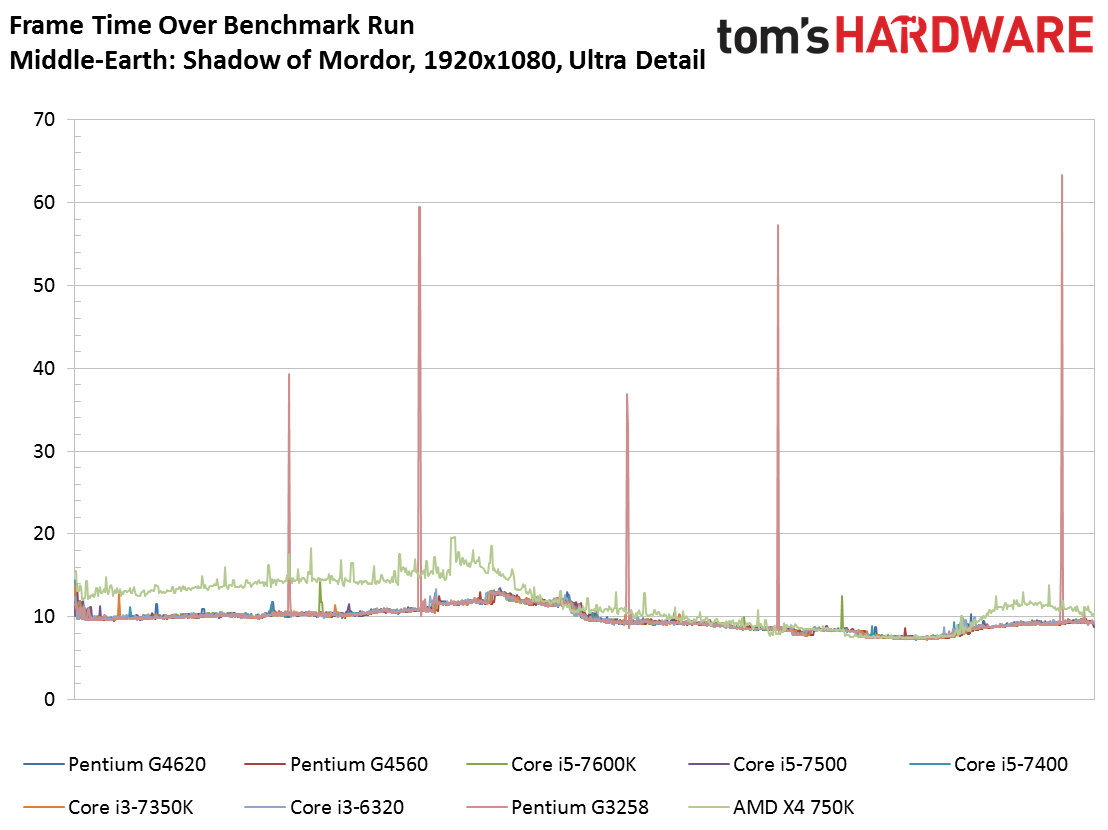
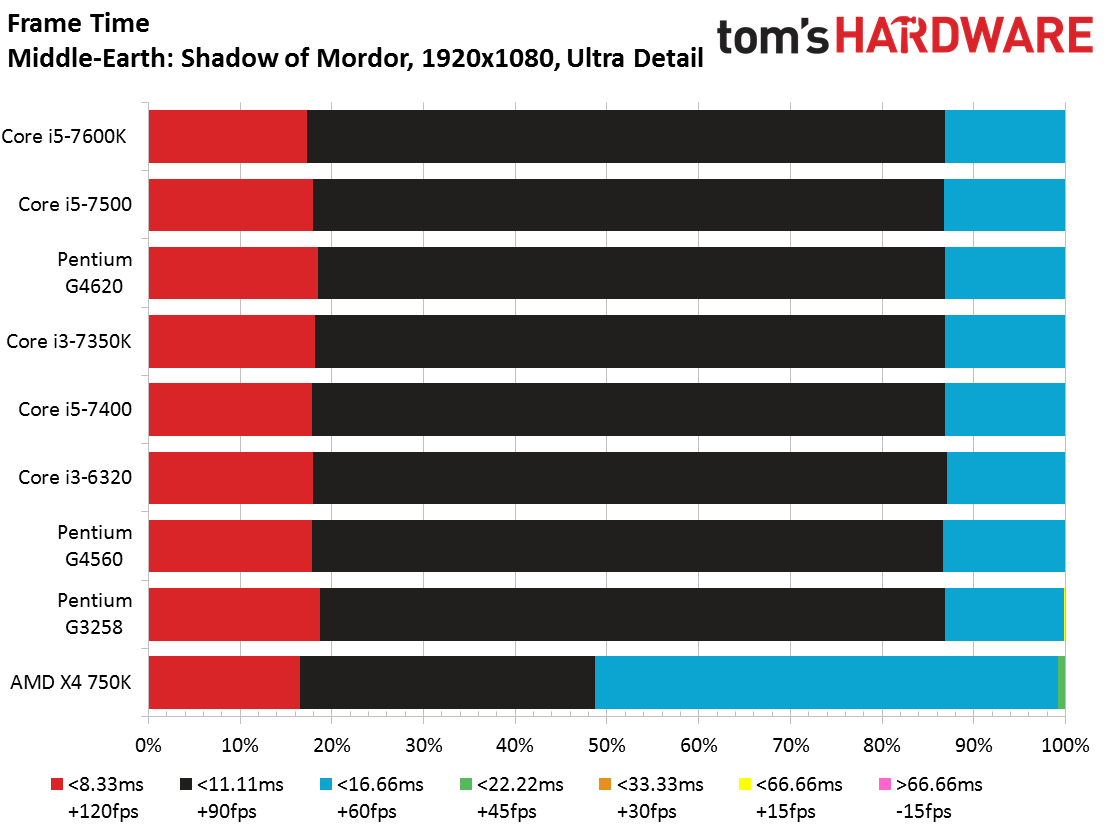
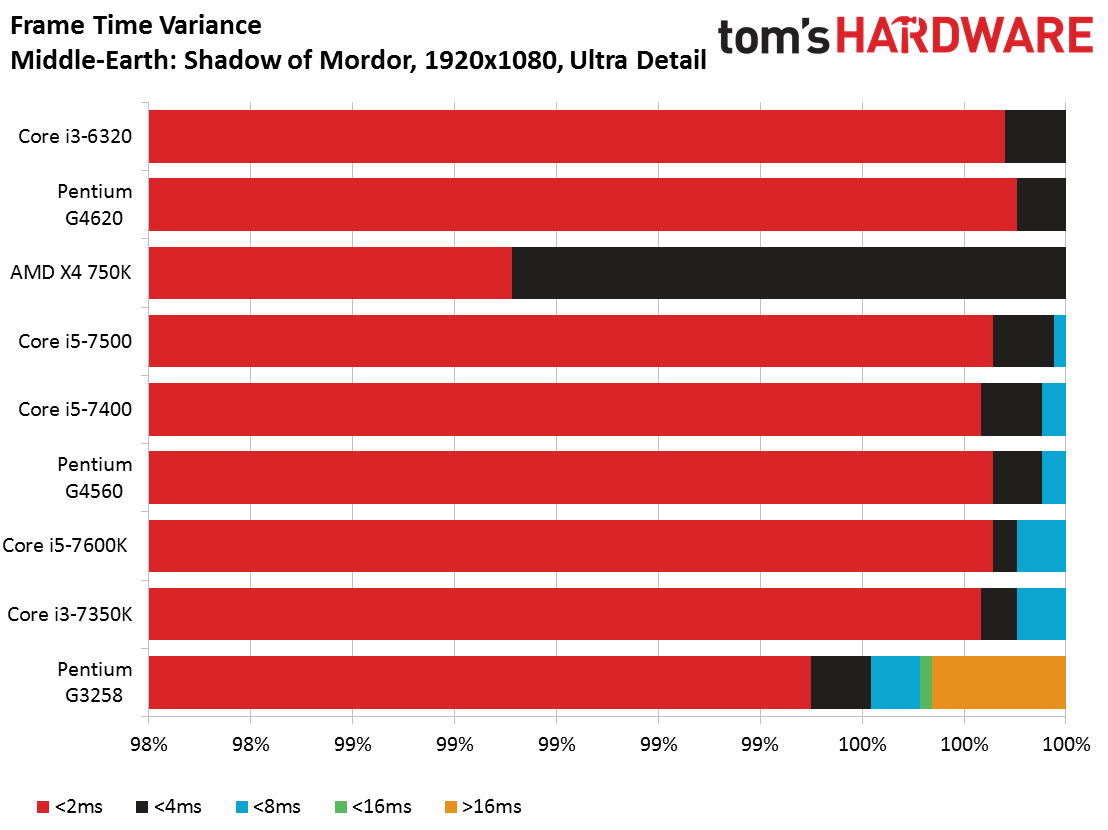
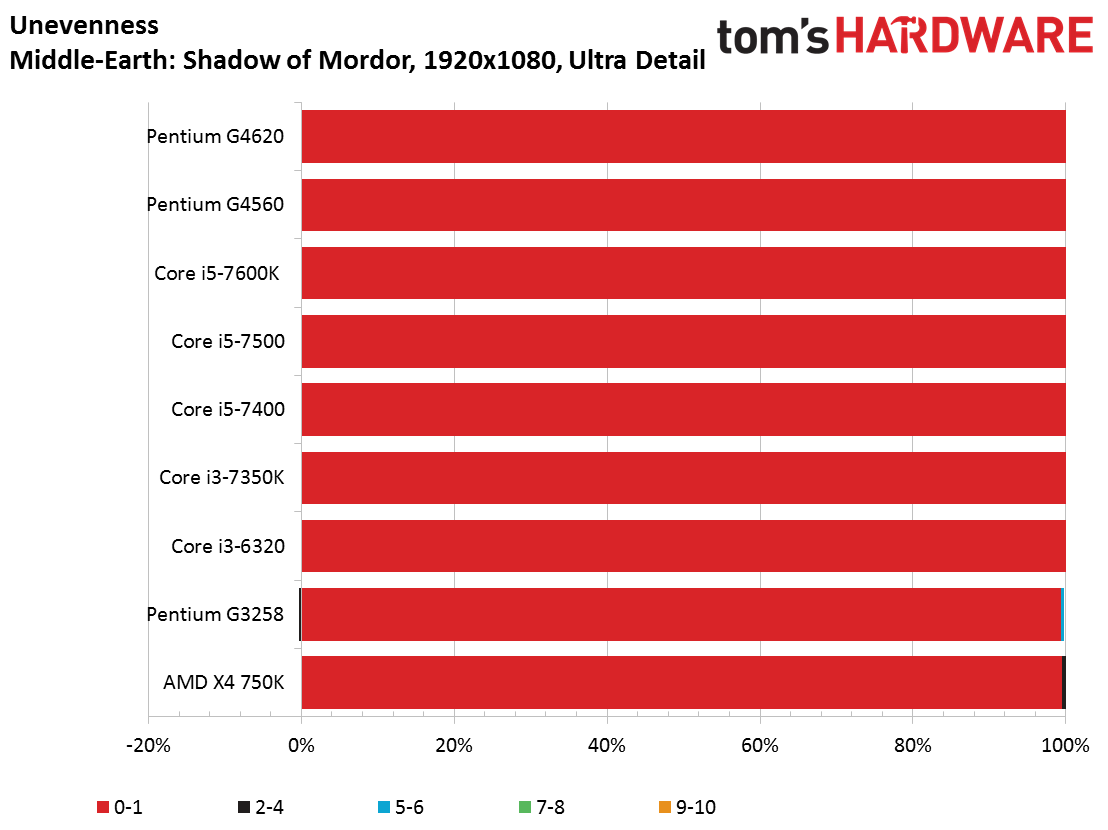
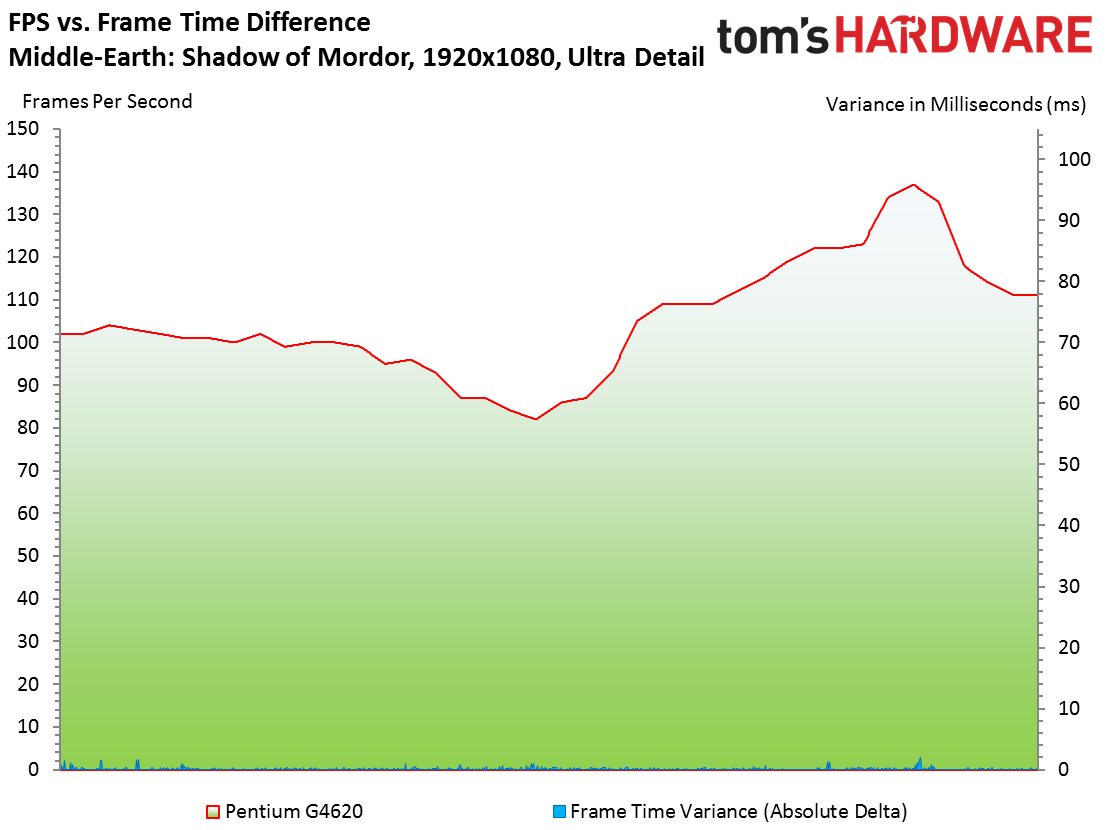
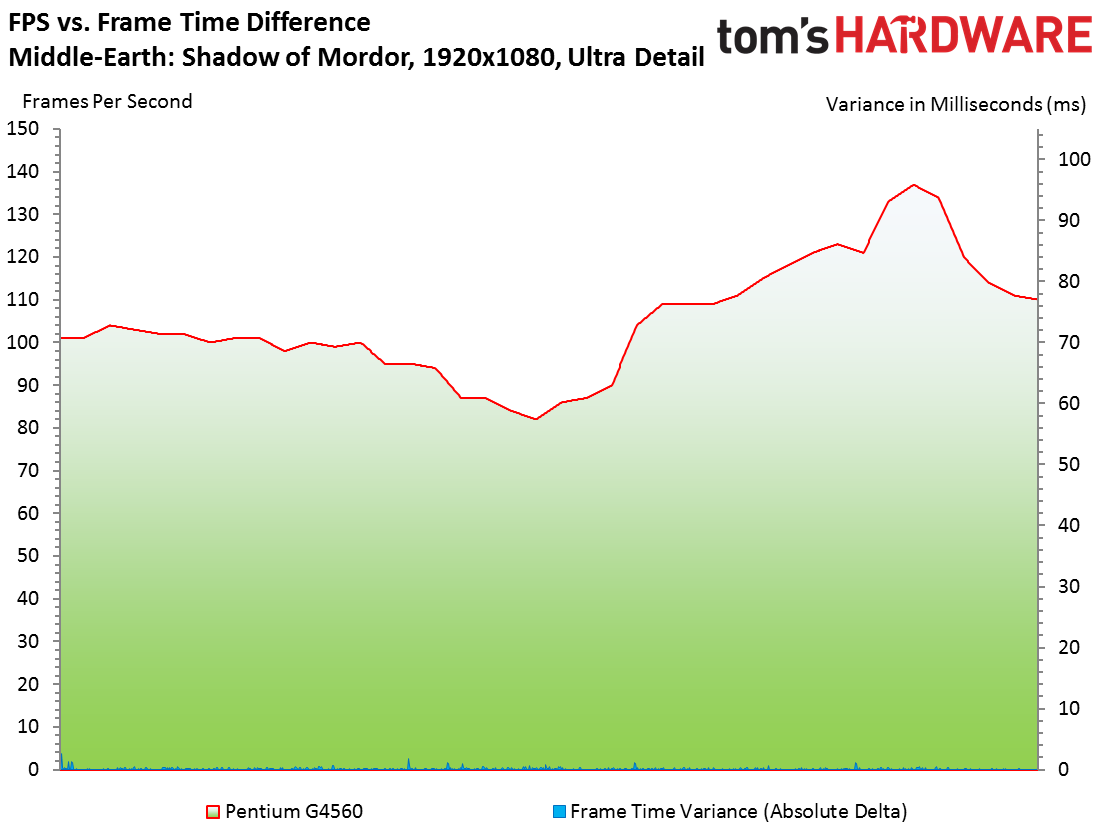
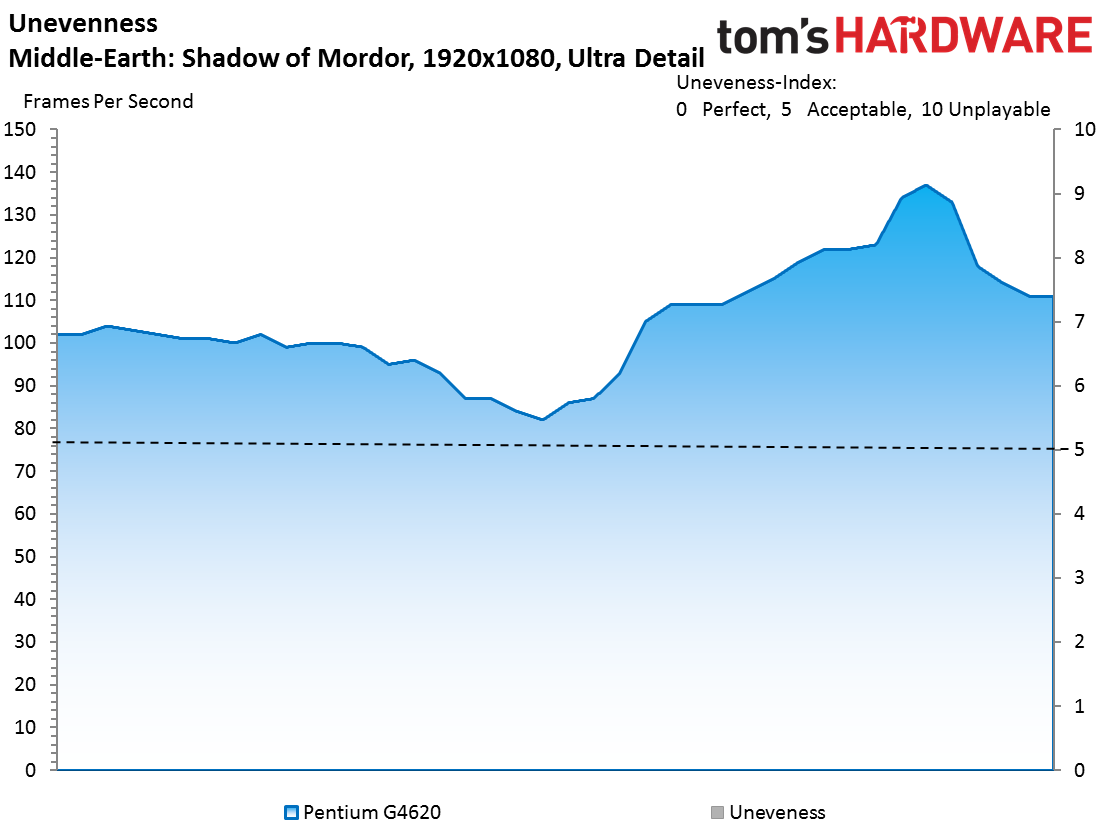
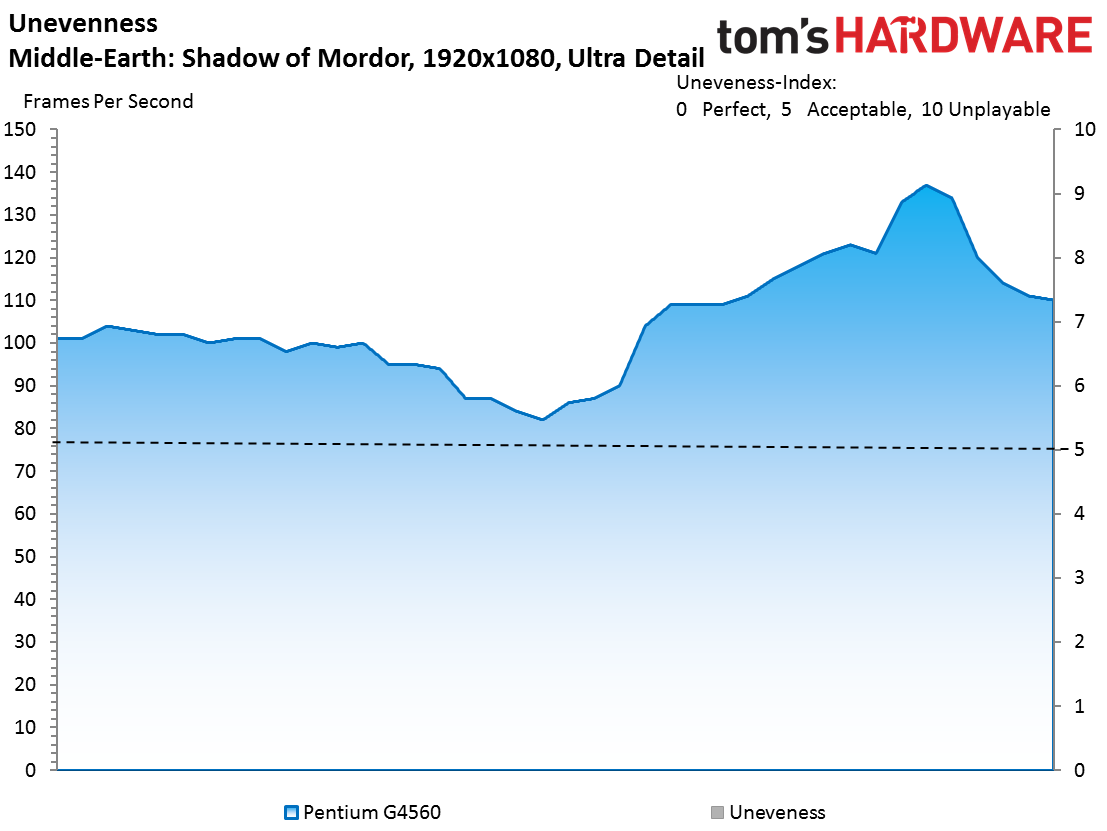
Middle-earth: Shadow of Mordor's minimum CPU requirement is either a Core i7-750 or AMD Phenom II X4 965.
The Athlon X4 750K is the only processor that struggles mightily with this game's built-in benchmark. Meanwhile, a scant 0.5 FPS separates the other CPUs we tested. Intel's Pentium G4260 and G4560 again show little variation in the FPS/frame time difference and unevenness categories.
3DMark Time Spy & Fire Strike
We selected the Time Spy metric to illustrate DX12-based CPU scaling due to its demanding physics simulation, occlusion culling, and procedural generation operations. DX12 offers better scaling than DX11 and exploits the quad-core processors to great effect; we recorded a 1952-point gulf between the high-end dual- and quad-core CPUs.
The Pentium G4620 and G4560 leverage their additional logical cores to generate a big lead over the older Pentium G3258. The difference between the G4620 and G4560 is subtler. Intel's Pentium G4620 only provides ~4% more performance during the DX12 test.
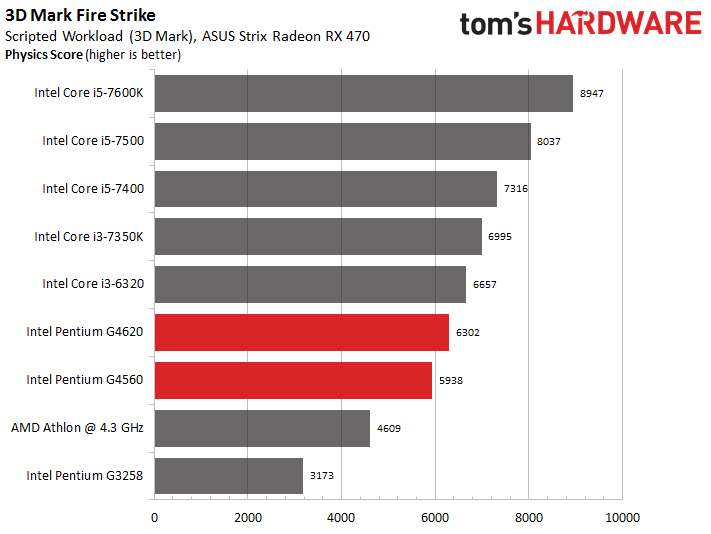
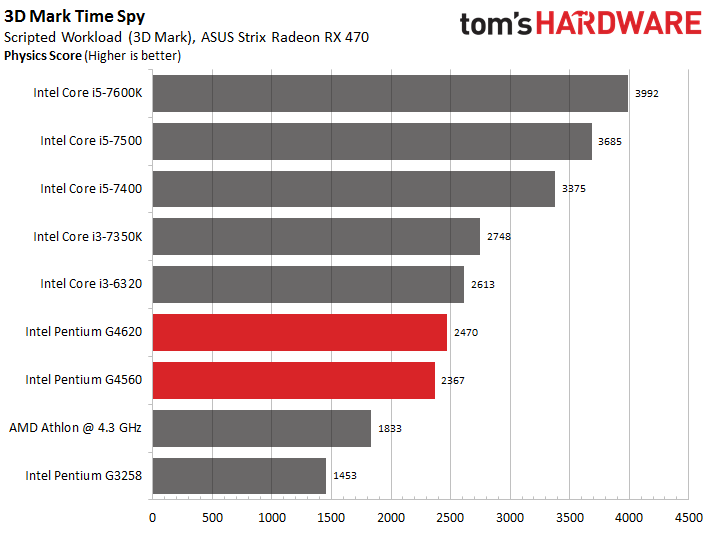
The DX11 Fire Strike benchmark runs 32 parallel soft and rigid body physics simulations that tax the processor specifically. In this test, the Pentium G4620 only provides a 6% advantage over the G4560.
Current page: Gaming Benchmarks
Prev Page Intel's Pentium CPUs Get Hyper-Threading Next Page Office & Productivity Applications
Paul Alcorn is the Editor-in-Chief for Tom's Hardware US. He also writes news and reviews on CPUs, storage, and enterprise hardware.
-
lhsbrandon Why do you use an old Piledriver based Athlon? I would think the newer models would be a little more competitive.Reply -
Sam Bittermann ReplyWhy do you use an old Piledriver based Athlon? I would think the newer models would be a little more competitive.
Because we know what the outcome would be, which is the same. Slowest of the bunch overall. -
Onus I would like to have seen the G3258 overclocked to 4.0GHz (even bad silicon should reach that; I got 4.2GHz with a better sample). After all, a lot of people who bought that chip specifically intended to overclock it, which they could do even on H81 boards. That's an 800MHz bump over stock, which should be substantial. We'll still see where lack of hyperthreading hurts, but we'll get a better picture of what this chip can do.Reply -
TJ Hooker ^agree, especially given that they OCed the Athlon, OCing the G3258 would have made sense.Reply
I also would have preferred an i3-6100 rather than a 6320 in the results, given that the 6100 is the closest in specs to the new Pentiums, making it the natural choice for comparing Pentiums w/ HT to an i3. Also, the 6100 was the go-to budget gaming CPU recommendation since Skylake came out (don't think I've ever seen anyone recommend a 6320), a title which the G4560 is poised to steal. Although obviously the 6100 and 6320 perform pretty similarly, so it's not a huge deal. -
Walter_35 This is exactly what I was hoping for. Looks like for budget gaming, the 4560 is good enough and allows for a better GPU in the same budget. But for more professional applications, you still might want to make the jump to an i3 to get those AVX(2) instructions and in many cases this step up could be payed for by skipping the dGPU.Reply -
TechyInAZ Reply19342093 said:Is it just me or are all the gaming benchmarks missing?
Your probably on the wrong picture, use the arrow buttons to show the actual FPS benchmarks. -
anbello262 "The 54W Pentium G4650 appears to offer better value with its 3.5 GHz base clock rate and $64 price tag."Reply
I think that should read "The 54W Pentium G4560" -
Paul Alcorn Reply19342878 said:"The 54W Pentium G4650 appears to offer better value with its 3.5 GHz base clock rate and $64 price tag."
I think that should read "The 54W Pentium G4560"
Good catch, fixed!
-
warmon6 Reply19342227 said:Why do you use an old Piledriver based Athlon? I would think the newer models would be a little more competitive.
As an owner of the A10-7850k apu that has over (Equal to the Athlon X4 860k) that have the steamroller cores, the difference is not that big at the same clock speeds.
and base on anandtech review of the Athlon x4 845 (based on the Excavator core) when all generations of athlon bulldozer are benched marked together, the story doesn't change much there either.
http://www.anandtech.com/show/10436/amd-carrizo-tested-generational-deep-dive-athlon-x4-845/10
